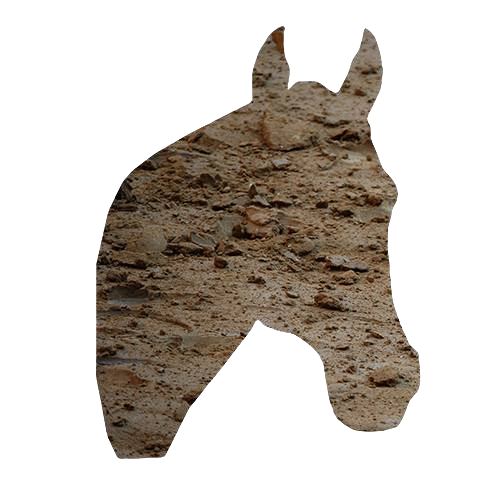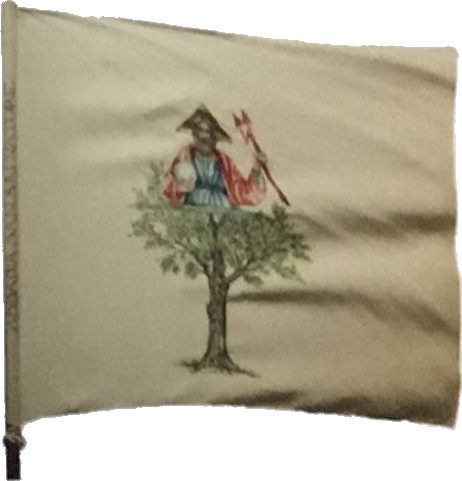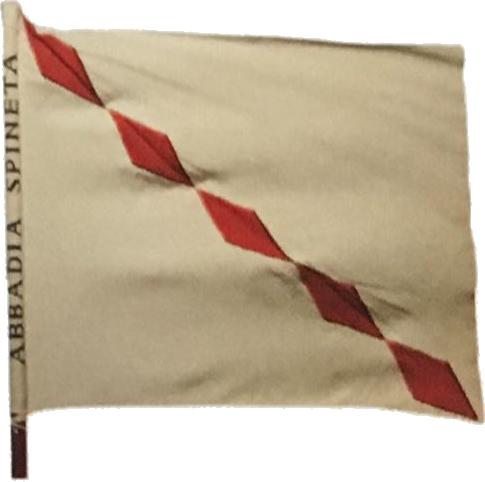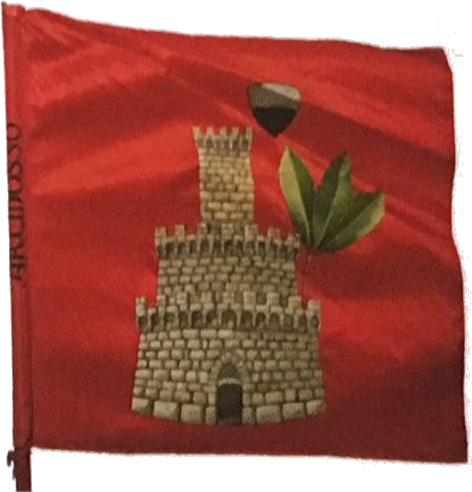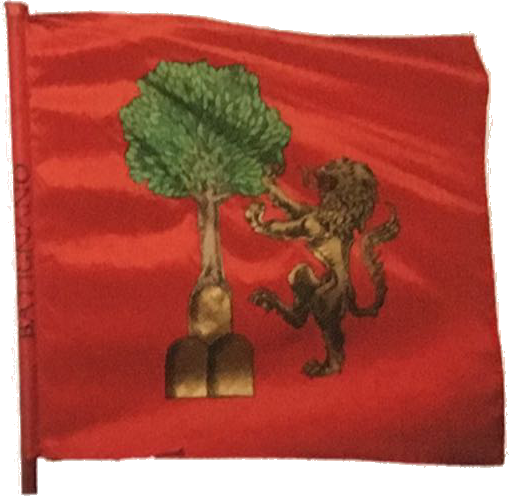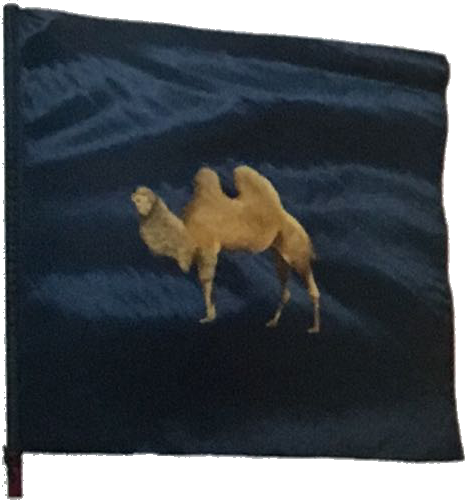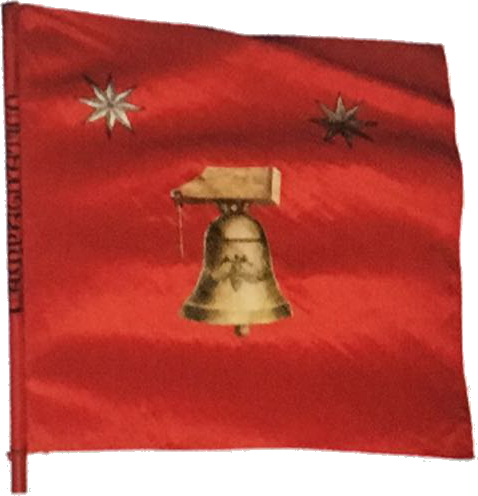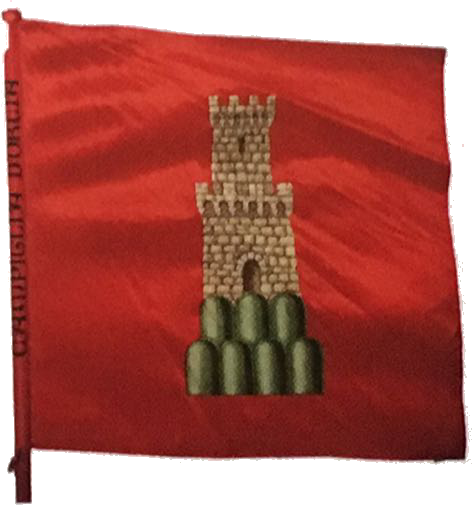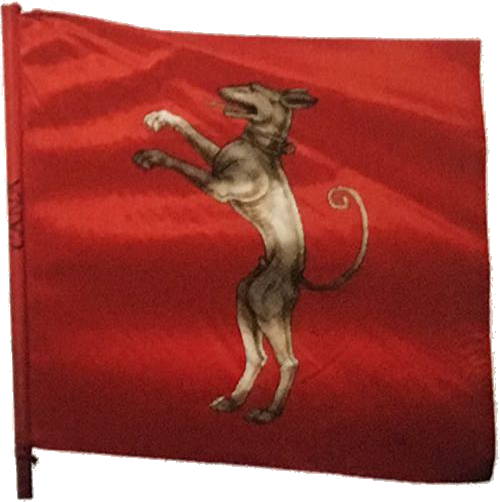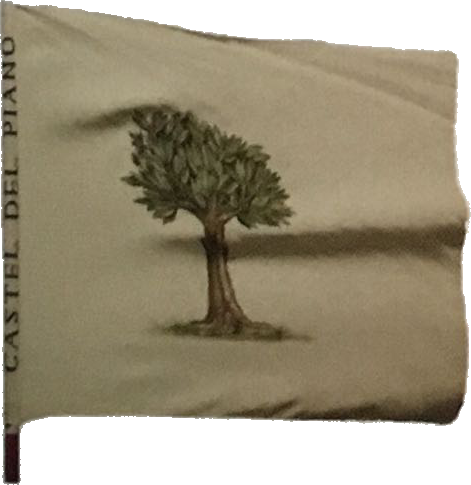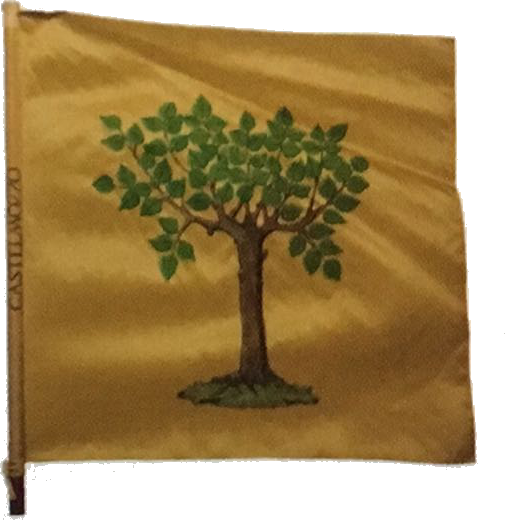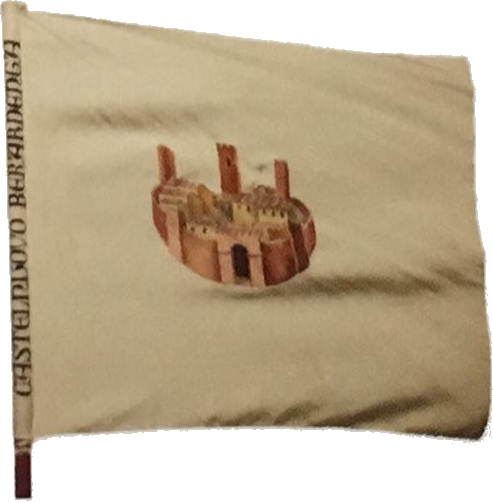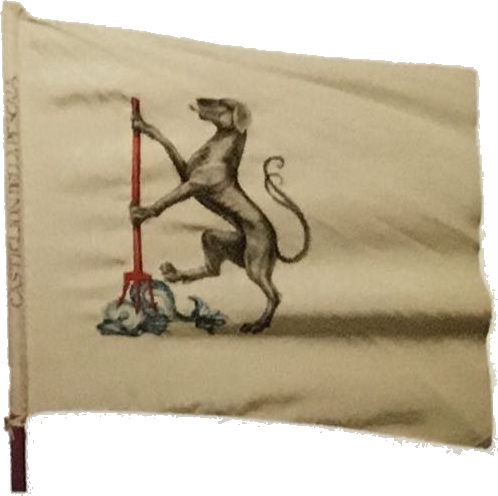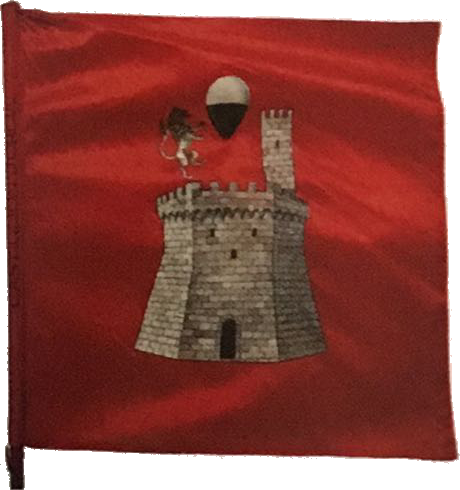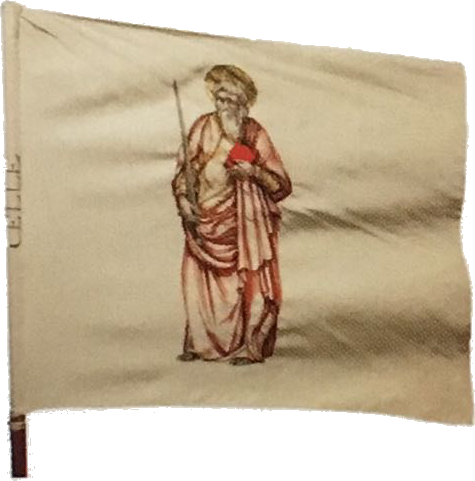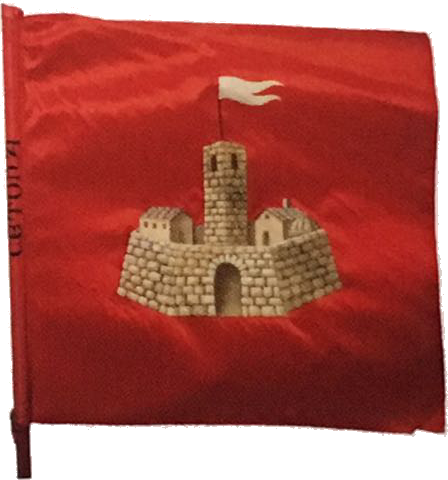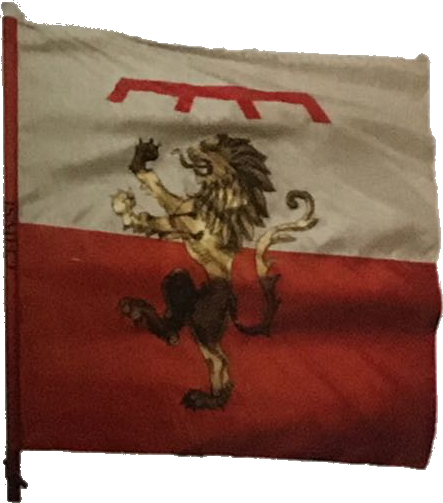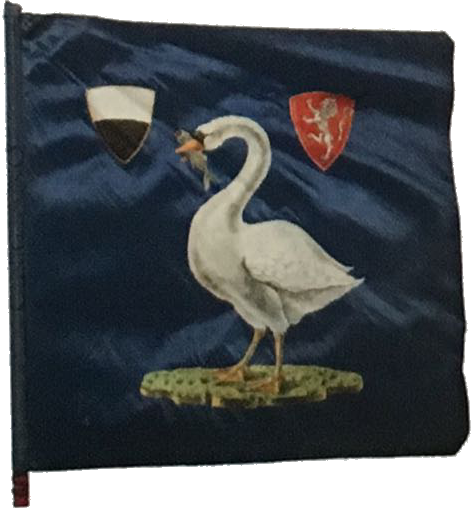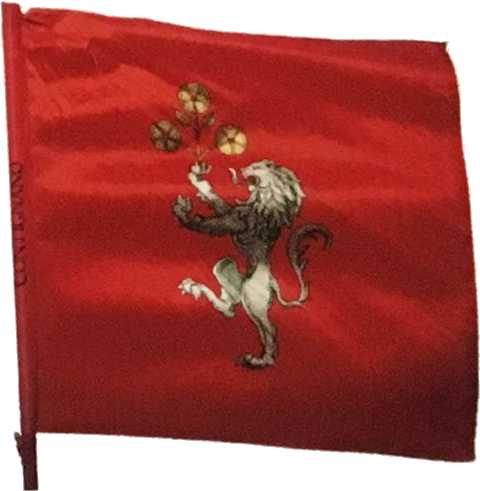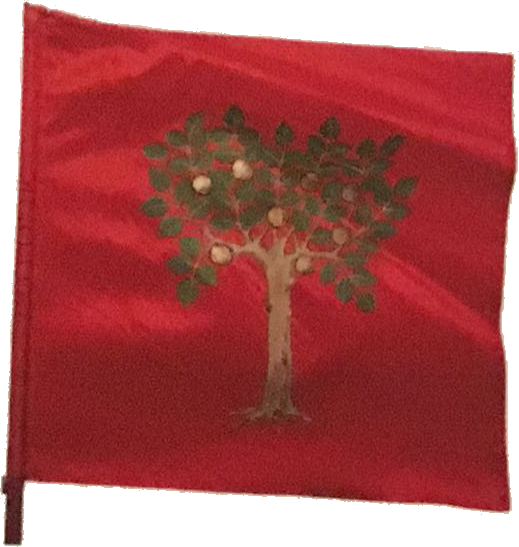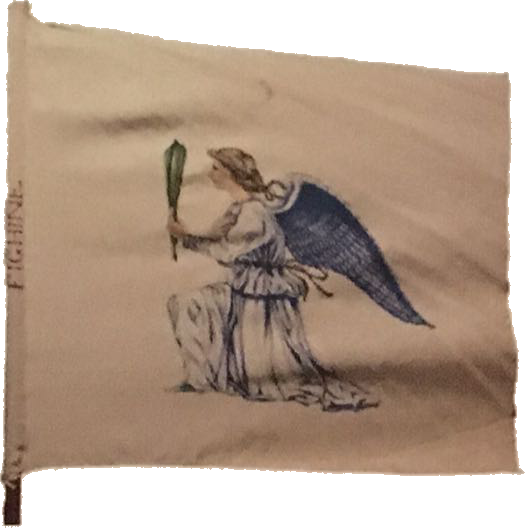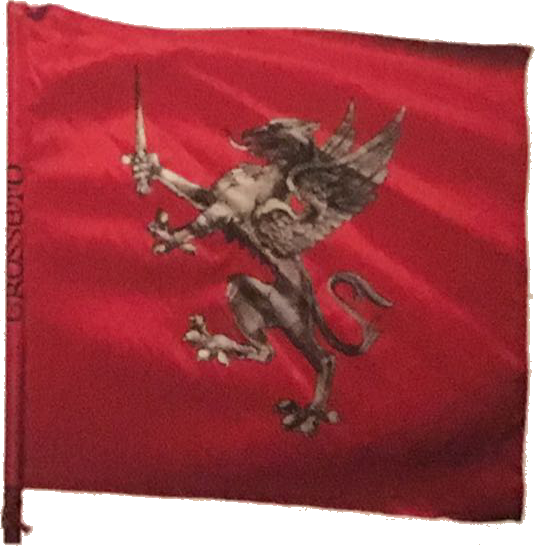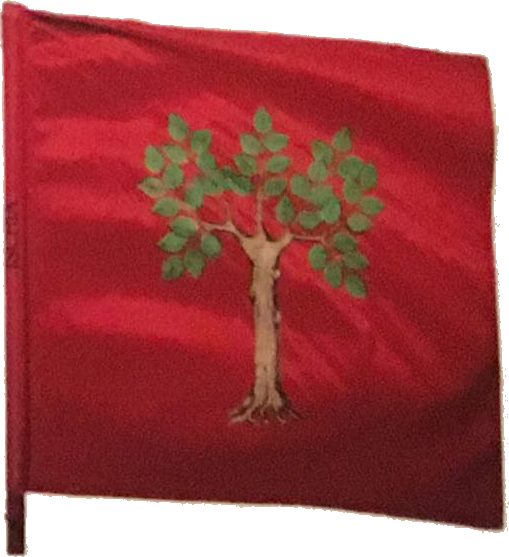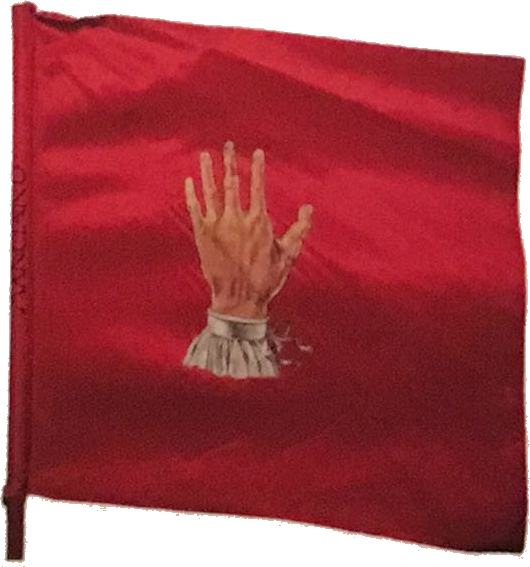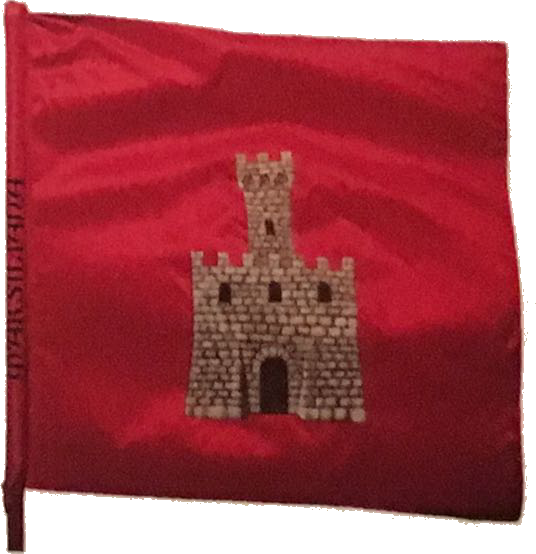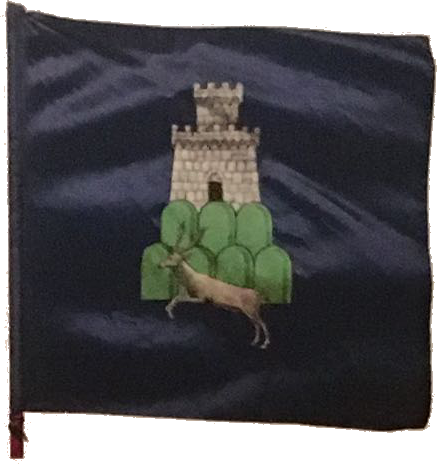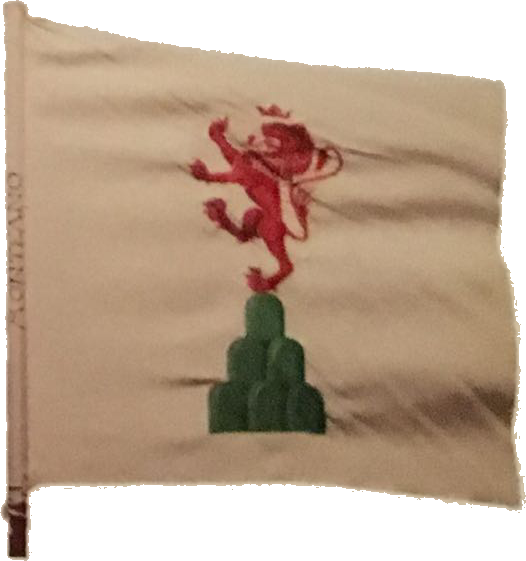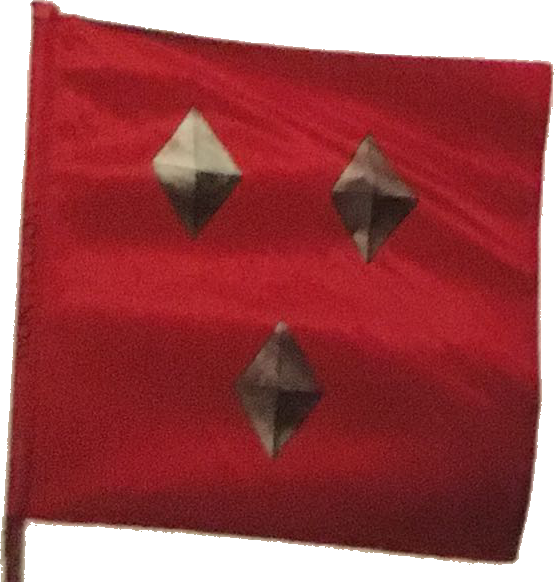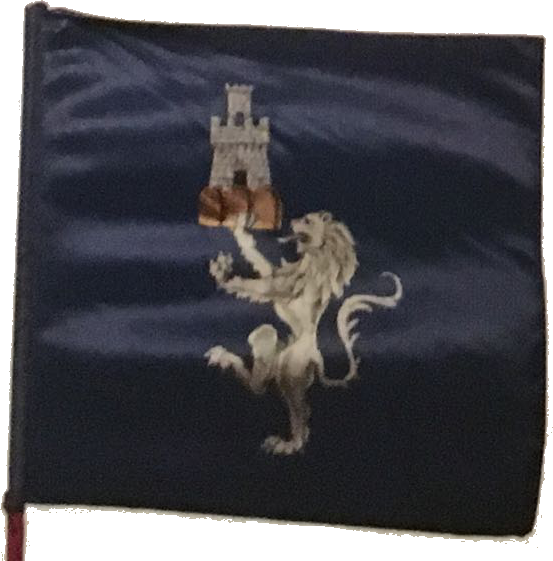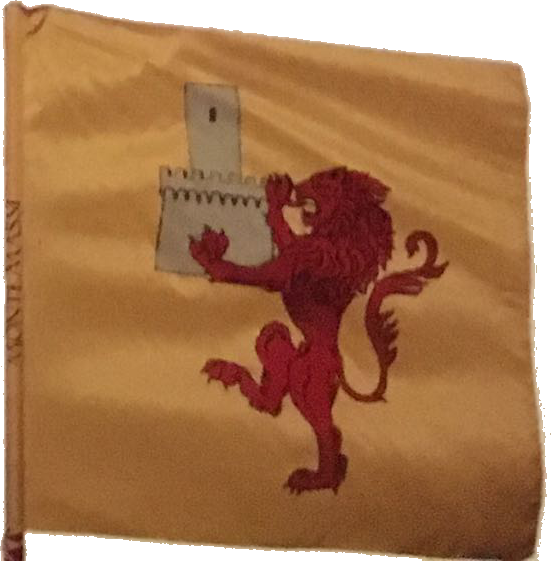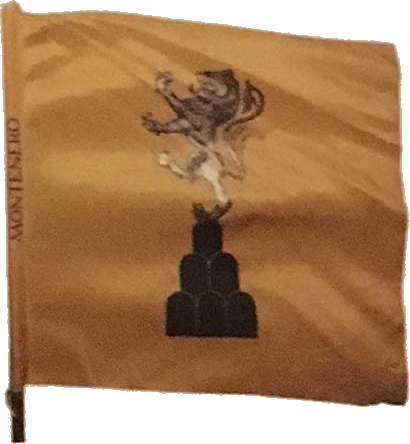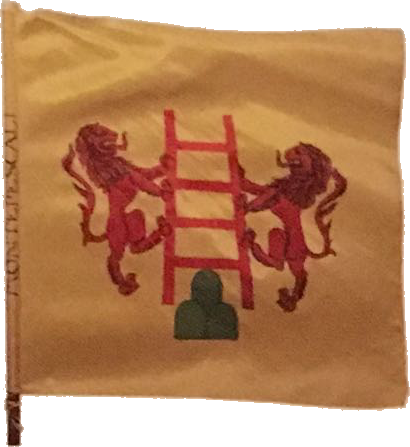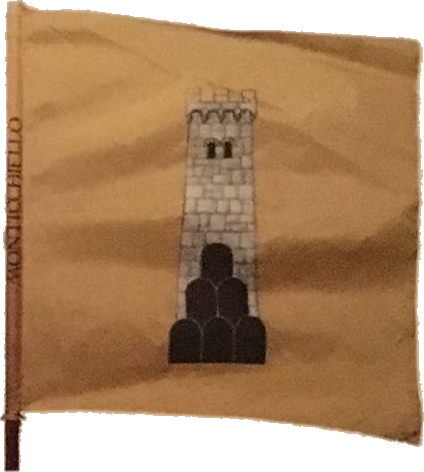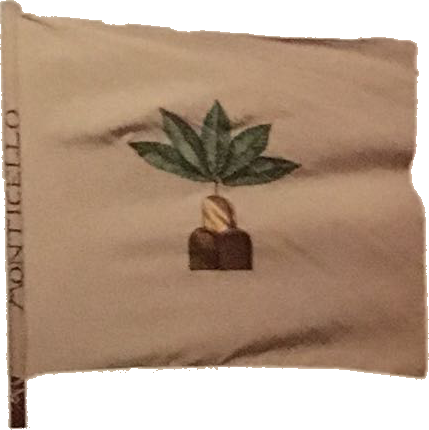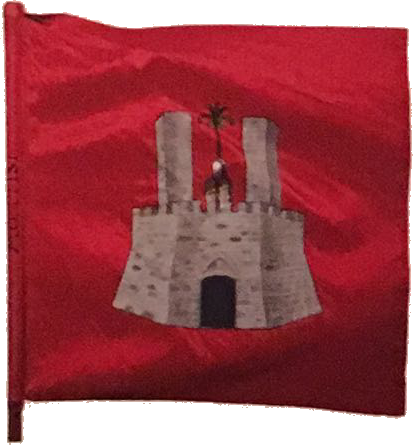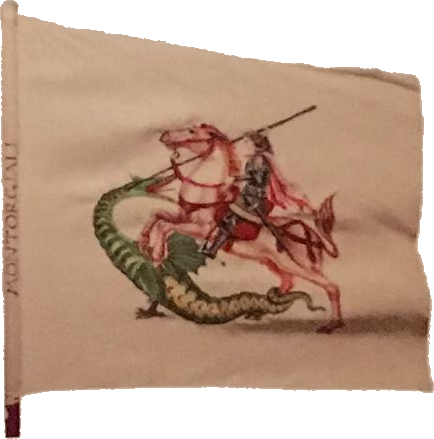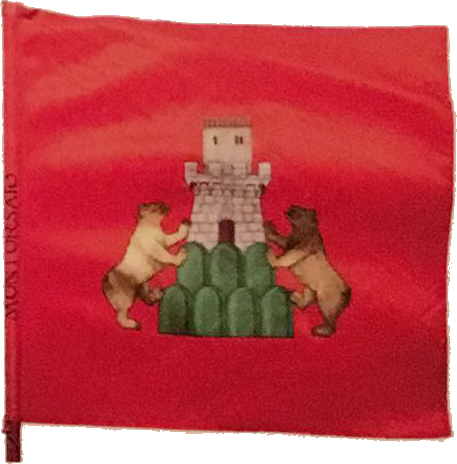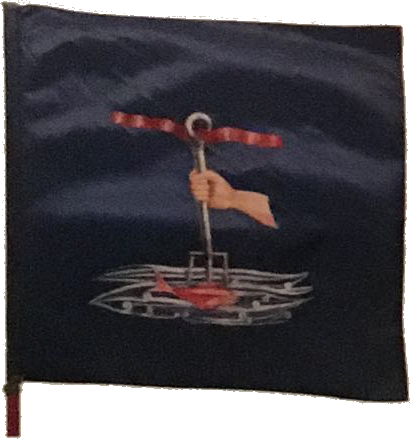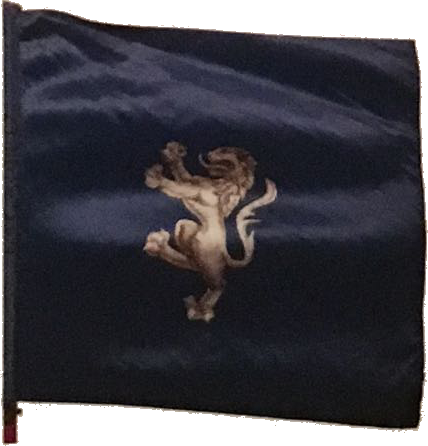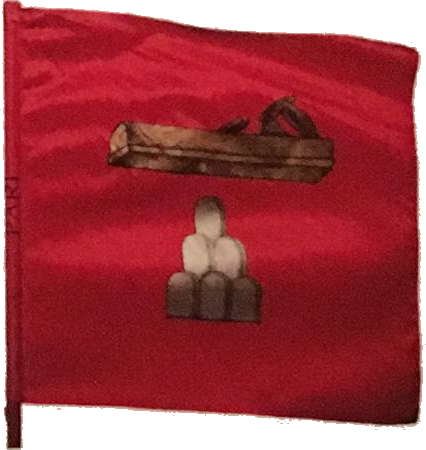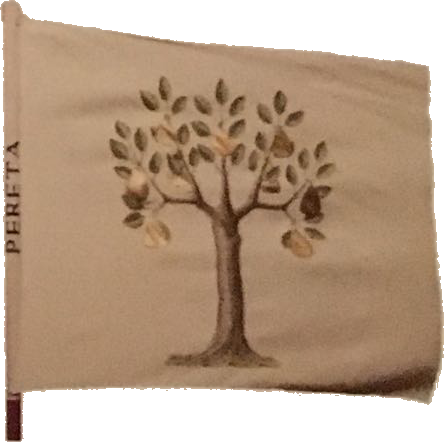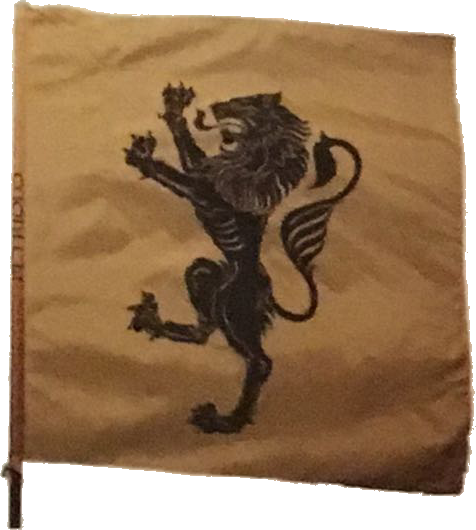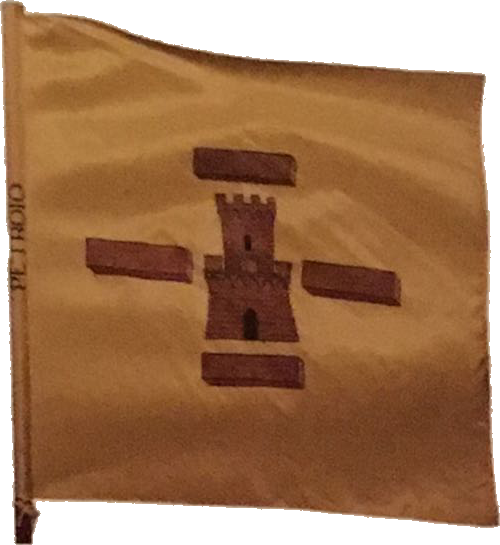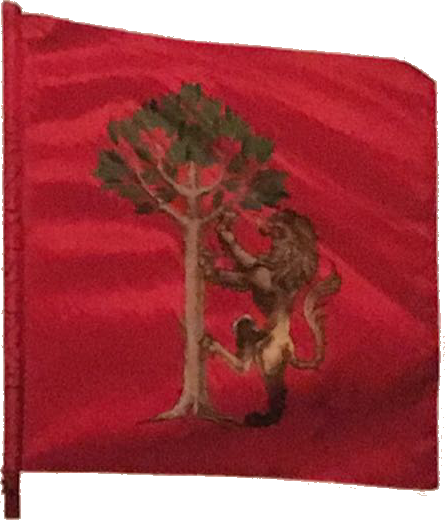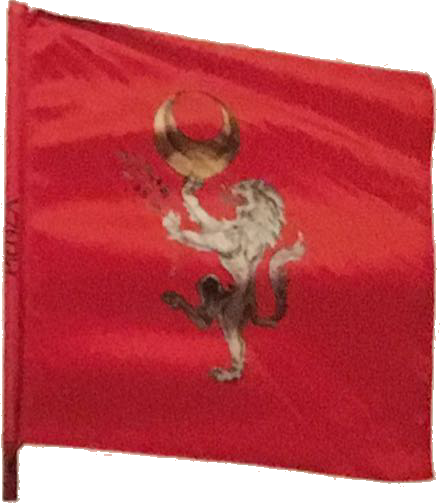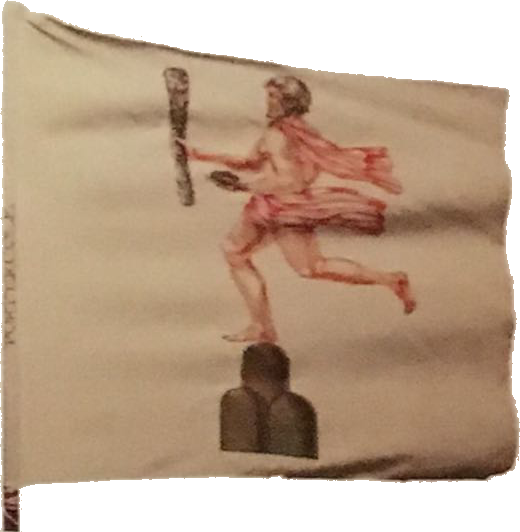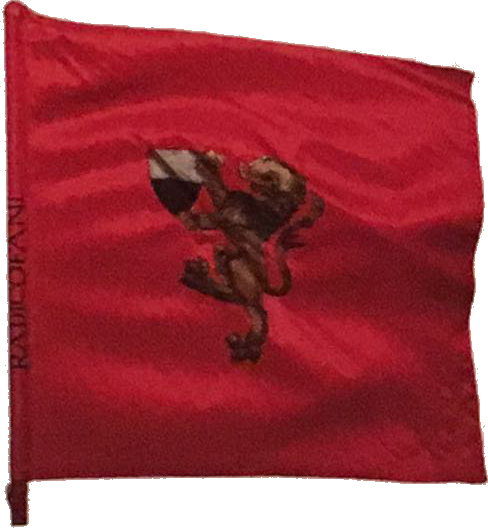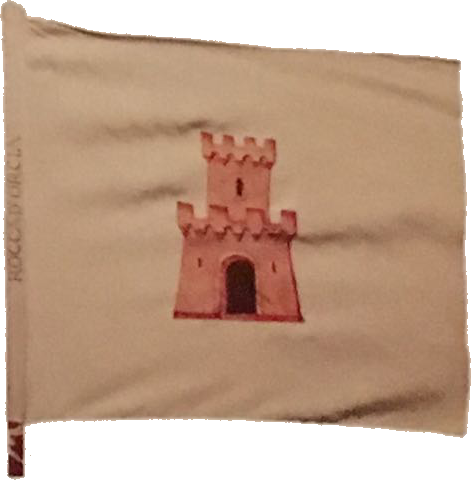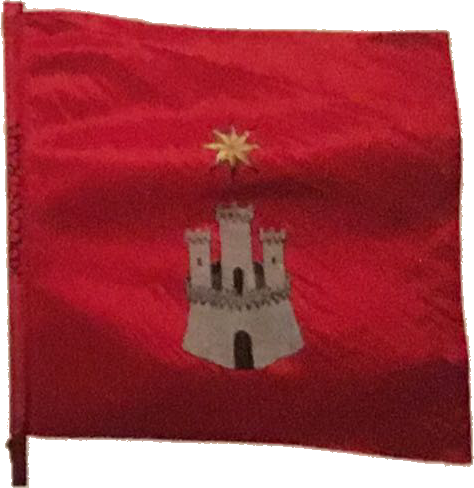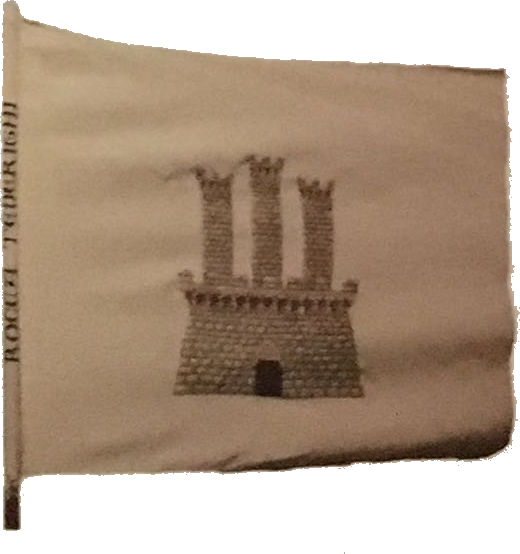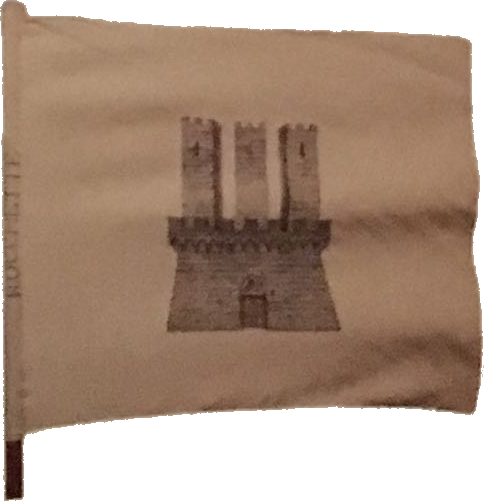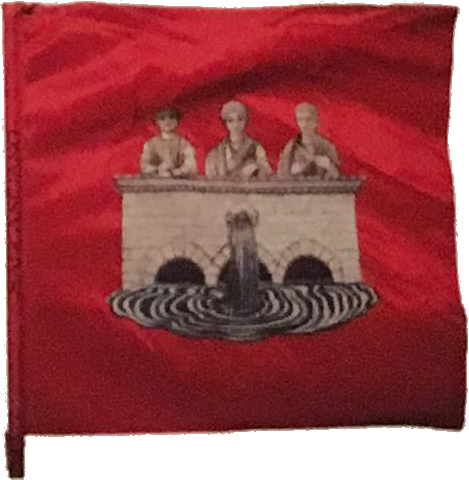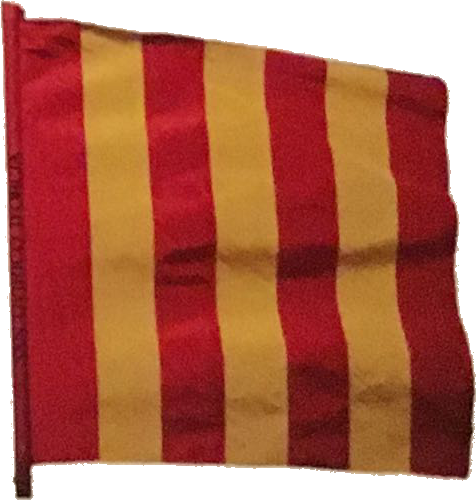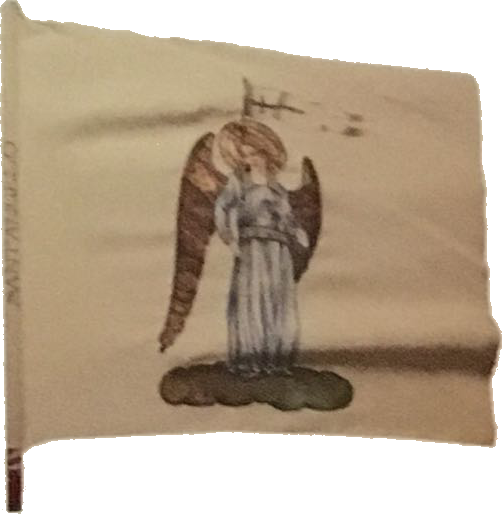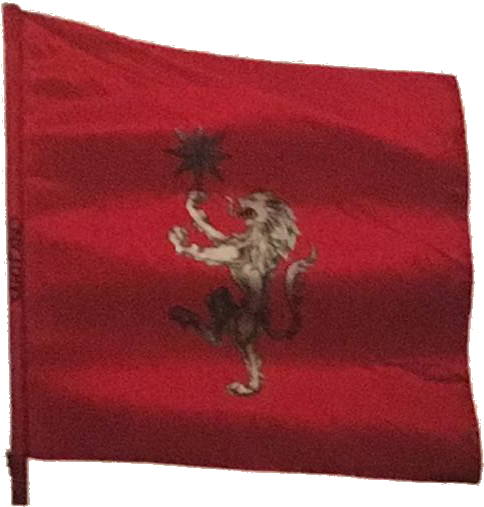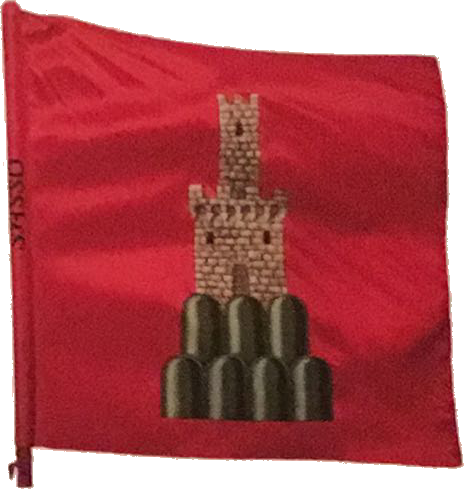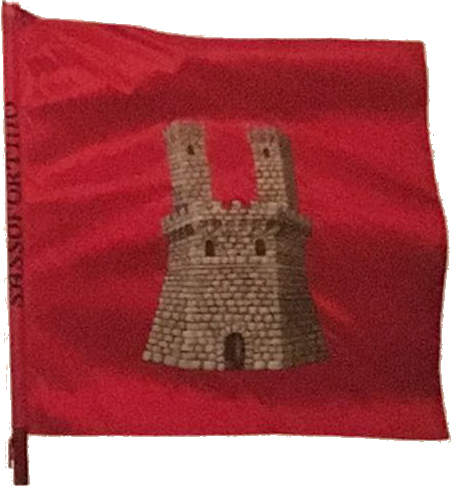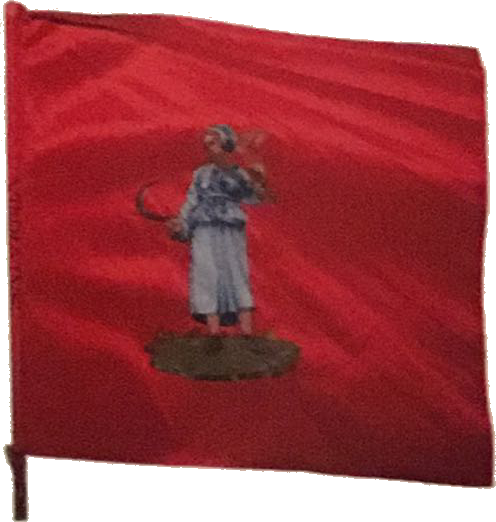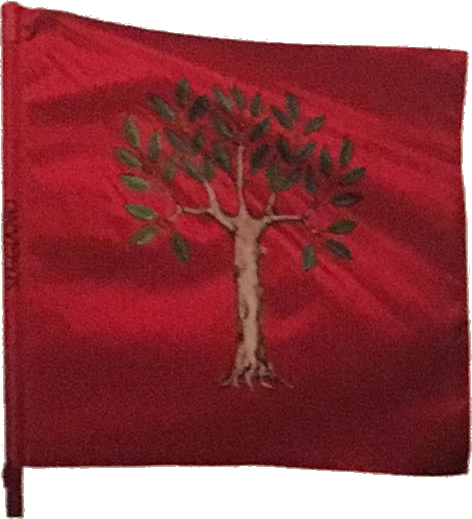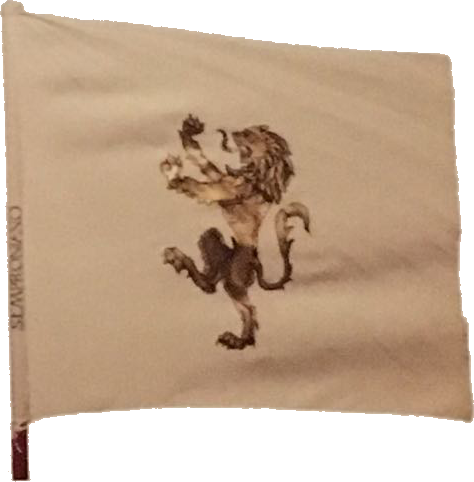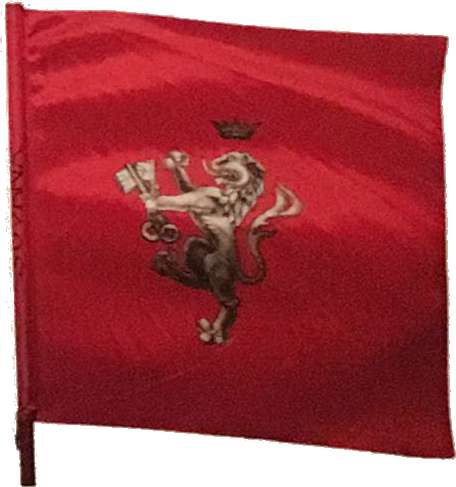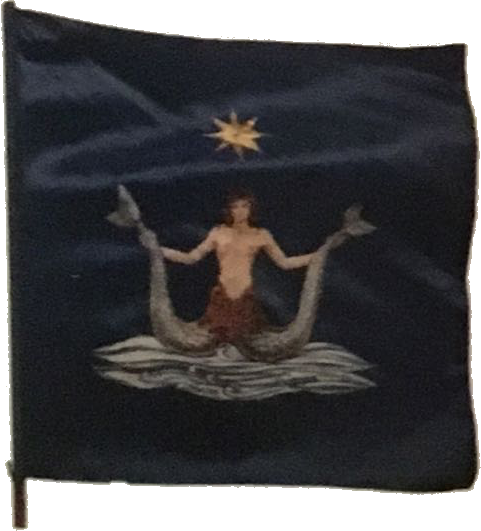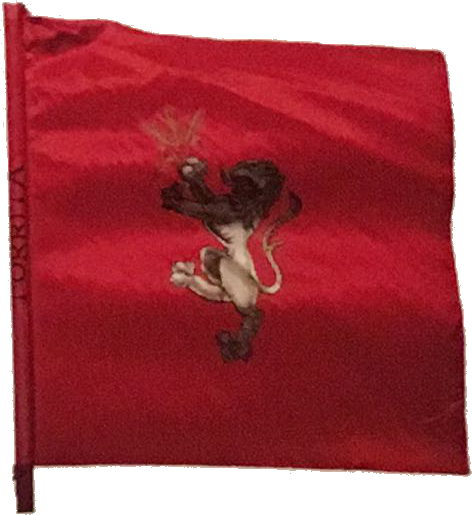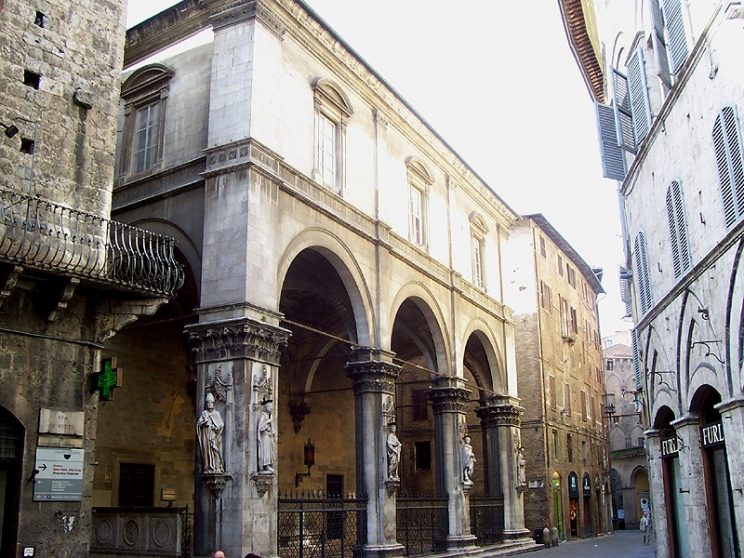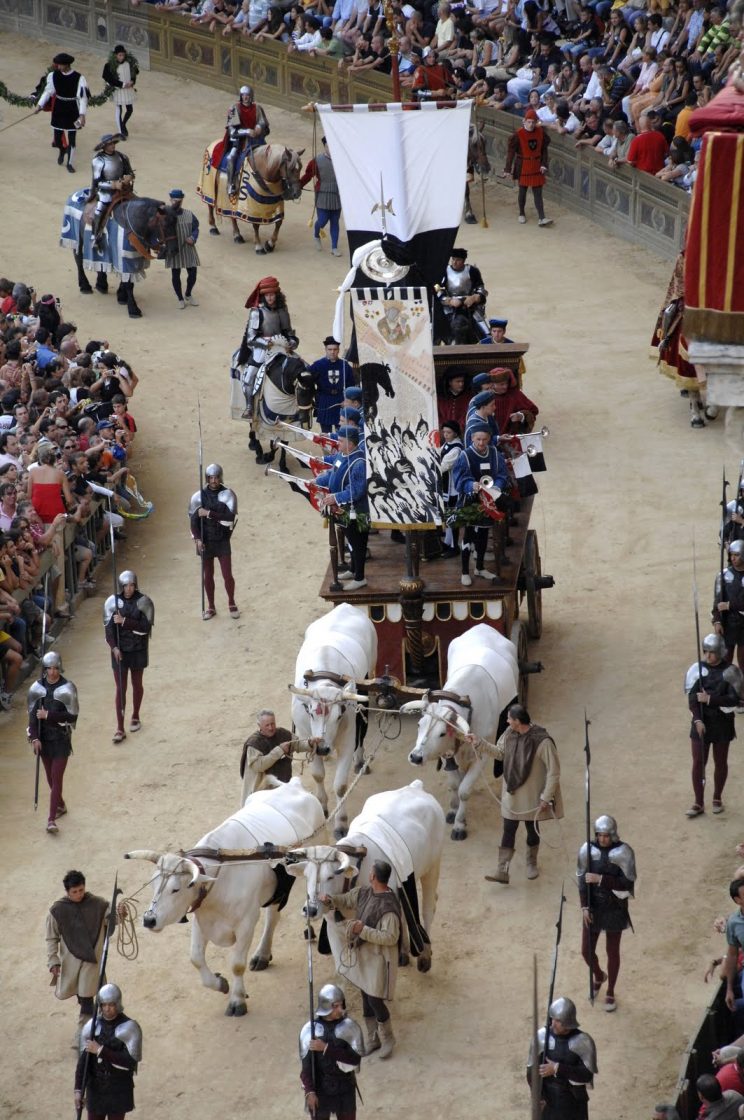www.thepalio.eu - dal Belgio con amore
Corteo Storico
The Corteo Storico is the historic parade that precedes the Palio on July 2 and August 16. It has always taken place before the Palio since its inception. It is a formally choreographed procession that commemorates the greatness and customs of the Republic of Siena. The most attention goes to the 17 contrade of course. The Corteo takes place on the Piazza del Campo and is divided into 14 groups and 700 extras.
On the day of the Palio, the extras from the 17 neighborhoods gather in the courtyard of the Palazzo del Governo on the Duomo. The Maestro di Campo puts everyone in their place on the Piazza del Duomo. From there they go via via del Capitano, Piazza Postierla, via San Pietro, via del Casato di Sopra to via del Casato di Sotto where they connect with the extras of the city.
The Corteo Storico enters the Piazza del Campo when the bells (Sunto) of the Torre Del Mangia first ring.
At various pre-arranged points, the flag sweepers and drummers of the seventeen contrade will stop performing a “sbandierata” (waving the flags) that ends in an “alzata” (rolling up the flag around the stick and throwing it up) .
The drummer plays the “passo della Diana” (“passo” stands for step), in between the musicians di Palazzo (fanfare of the city) play the Marcia del Palio by maestro Pietro Formichi (1829-1913).
The Corteo ends with the Carroccio, an old triumphal cart pulled by 4 large white oxen with the Drappellone on it.
After the extras have done their rounds, they take a seat in the grandstand provided for them at the Palazzo Pubblico. The Palio is hoisted at the start on the “Palco dei Giudici”.
Finally, the seventeen neighborhoods (1 alfiere and 1 tamburino per neighborhood) line up on the stretch between San Martino and Casato to perform “la sbandierata delle Vittoria”. This was so called because it was introduced at the end of the First World War .
Schedule of the Corteo Storico (according to the 1982 regulations)
Primo gruppo
Sei Mazzieri del Comune
The six mazzieri (or Araldi) are named after the “mazza”, a symbol of their status as ambassadors; Araldi stands for messengers and the Mazza is a kind of stick. They wear the white / black colors of the city of Siena. Three of them with the crowned lion on a red background (emblem of Il Popolo or the people), the other three with the emblem of the Republic “Libertas” in golden letters on a blue background.
Vessillifero del Comune a cavallo condotto da un palafreniere.
Standard bearer of the City on horseback, accompanied by a “groom”. The flag bearer bears the Balzana, the flag of Siena.
Quattro Comandatori
The four comandatori, who previously had the task of overseeing the regular army, are running with their sword drawn.
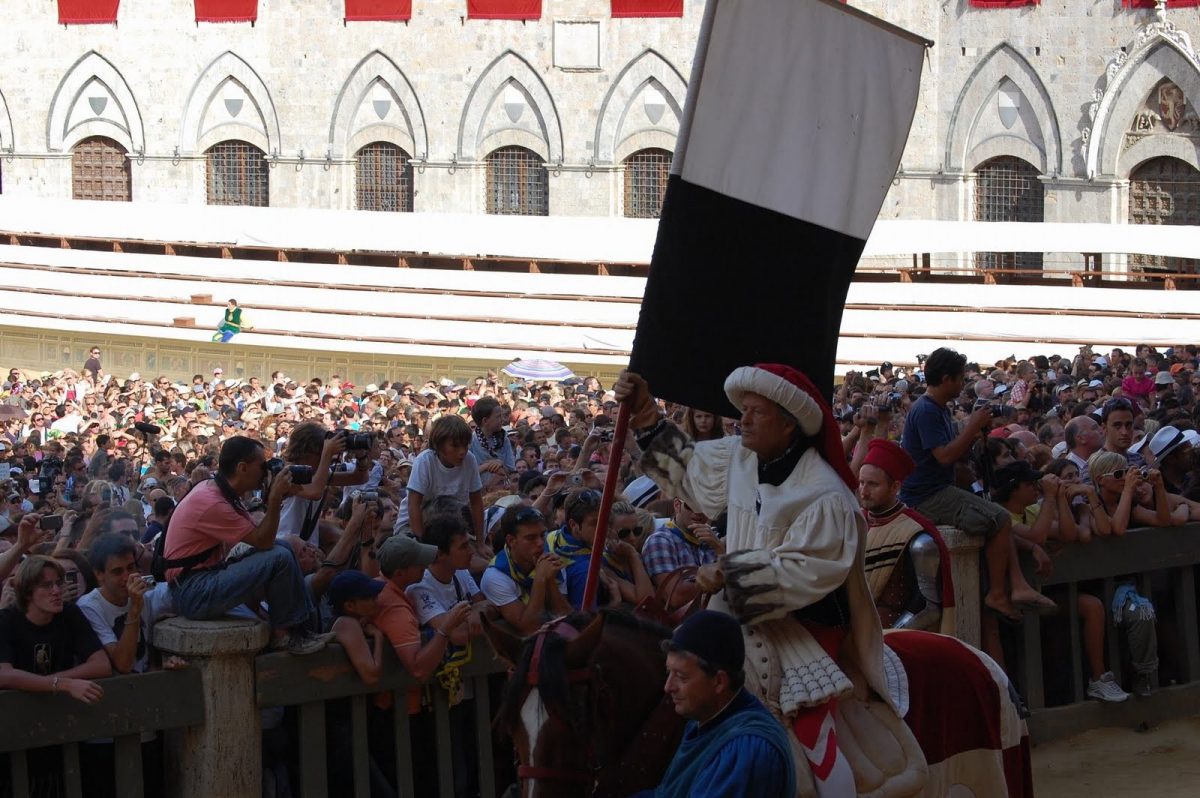
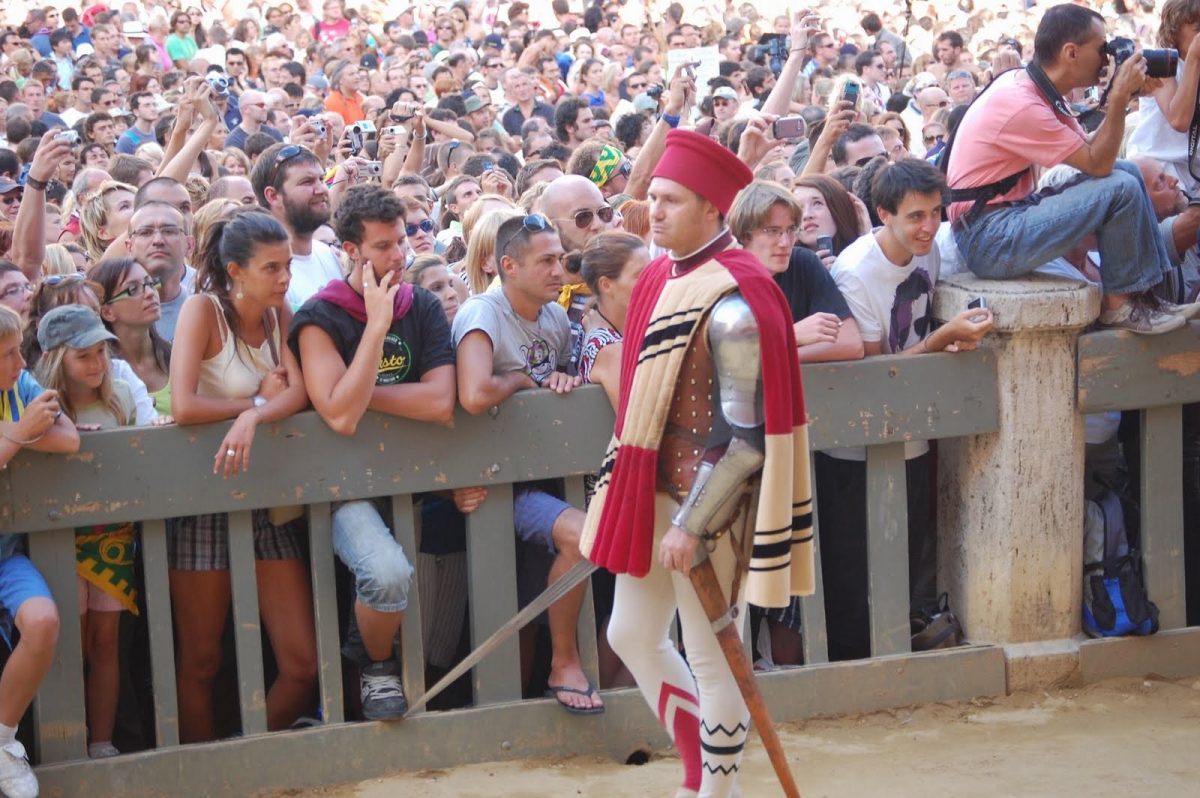
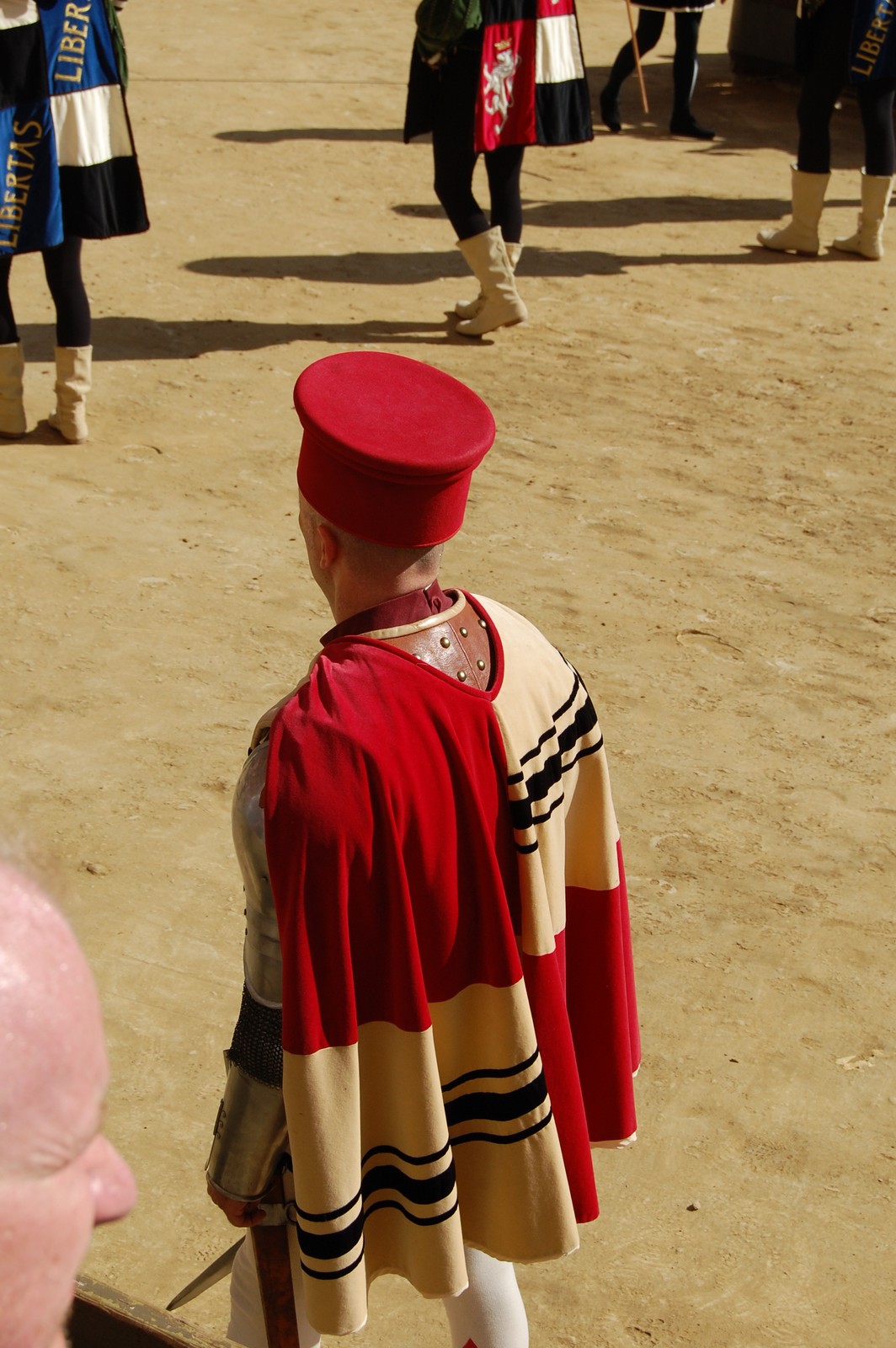
Dodici Tamburini di Palazzo
Diciotto Trombetti del Comune con chiarine d’argento
Trenta Musici di Palazzo con strumenti musicali
The twelve drummers, the eighteen trumpet players and the thirty musicians of Palazzo wear blue and green clothes with white borders. The colors go back to those of the ladies of the town hall in the eleventh century. The drums are blocked in black and white, the trumpeters play on silver trumpets (chiarini) from the Renaissance. They play the Marcia del Palio at regular intervals.
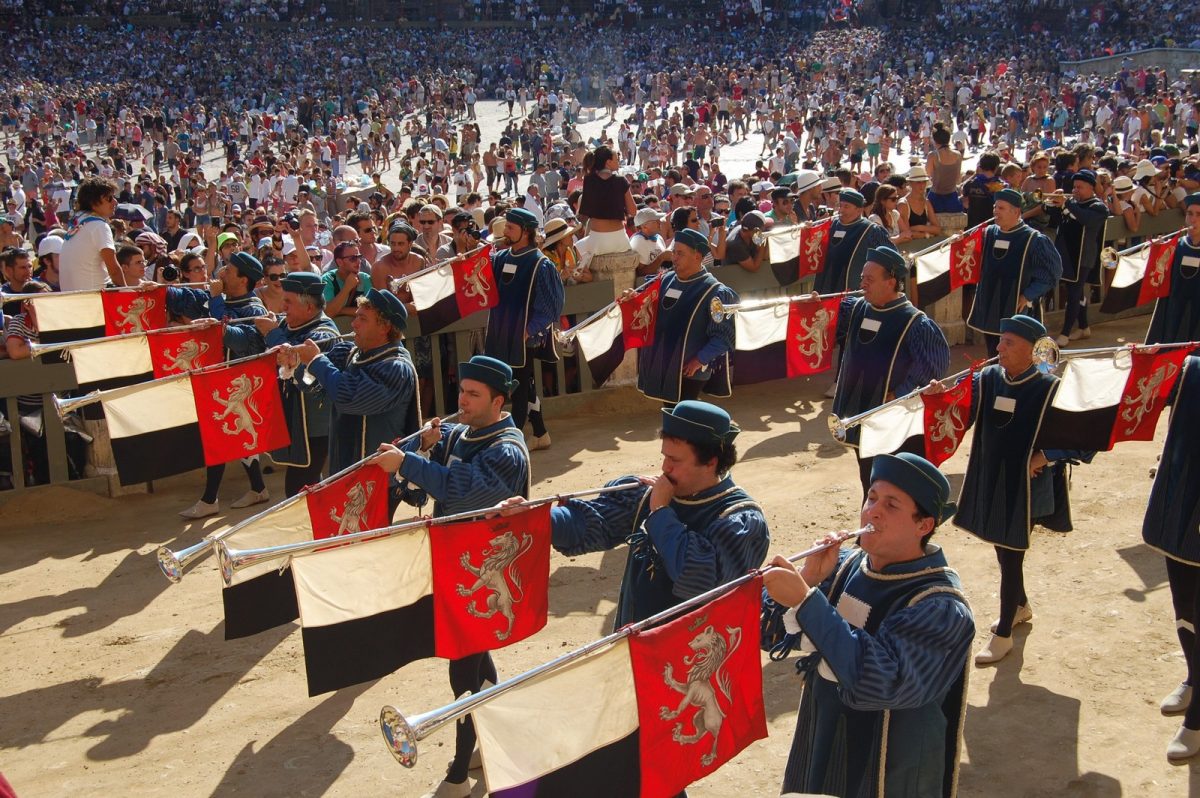
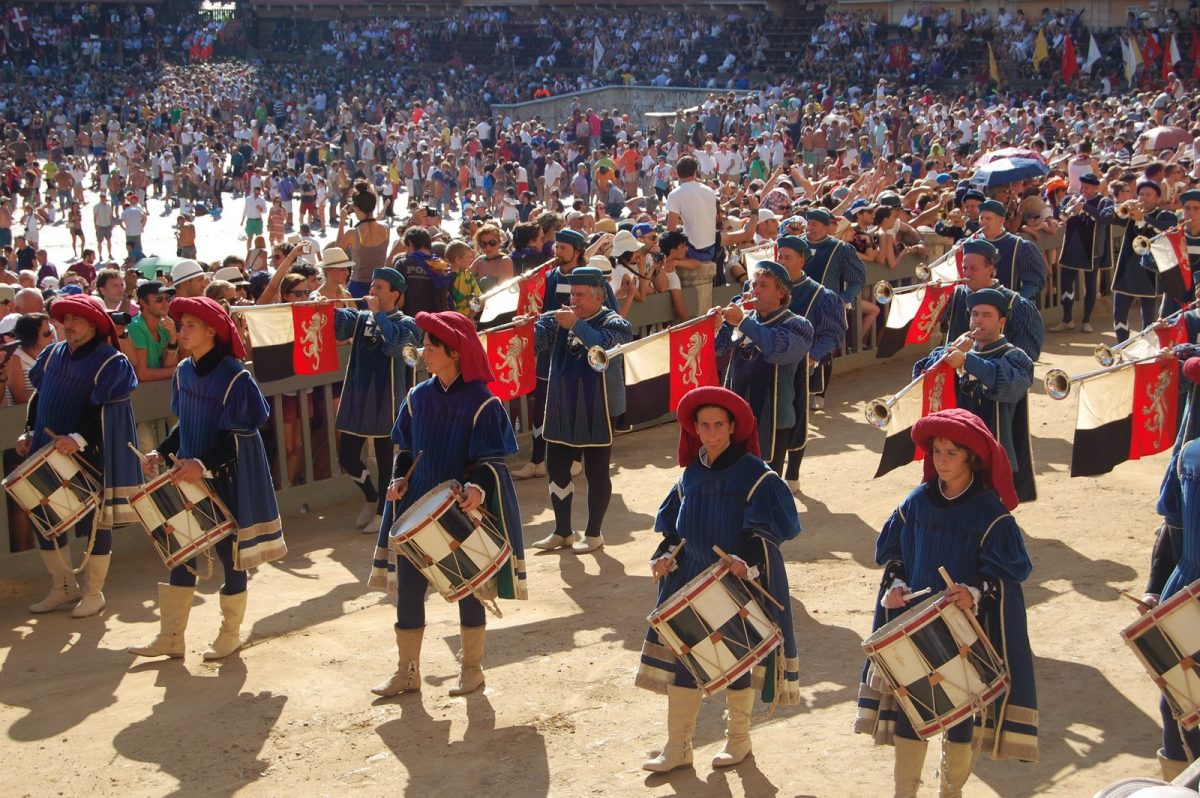
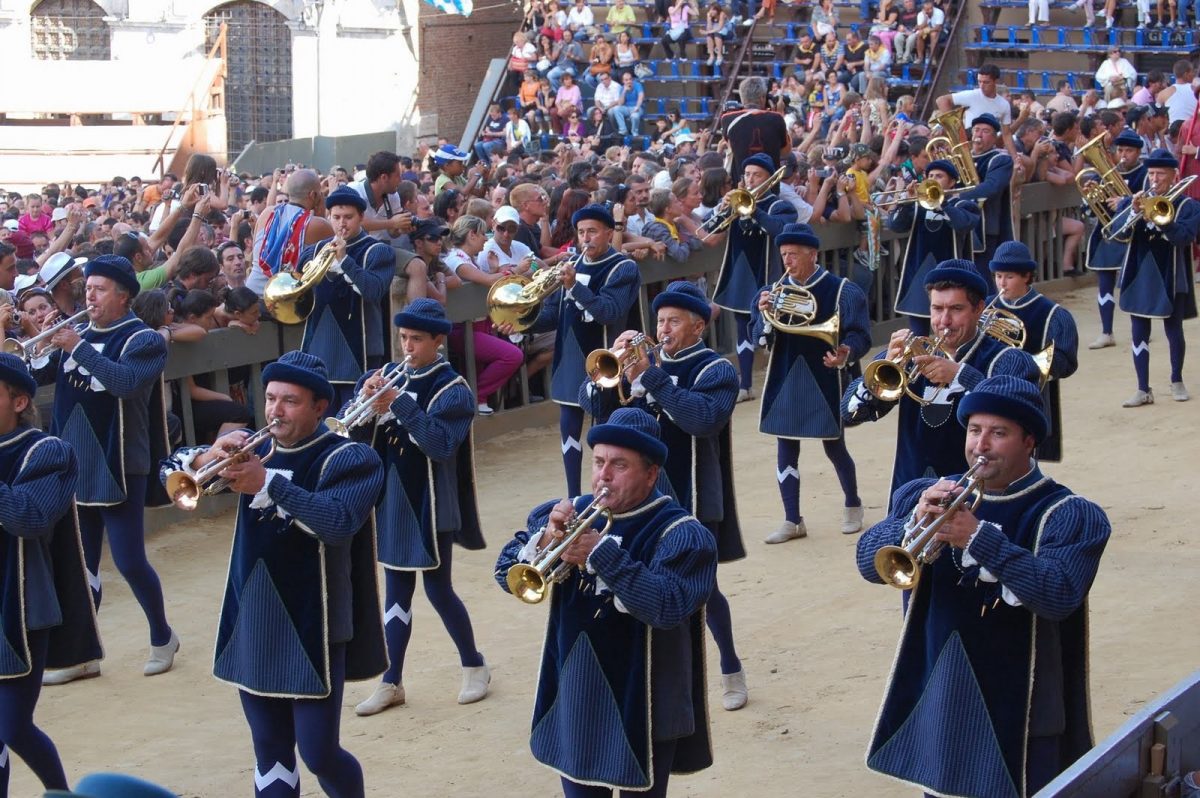
67 Vessilliferi delle Città, Podesterie, Terre, Vicariati e Castelli dell’antico Stato Senese
67 standard bearers of the cities, villages, estates and castles of the old Senese state who remained loyal after the fall of the Republic in 1555, even though the podesta (ruler) was in exile in Montalcino.
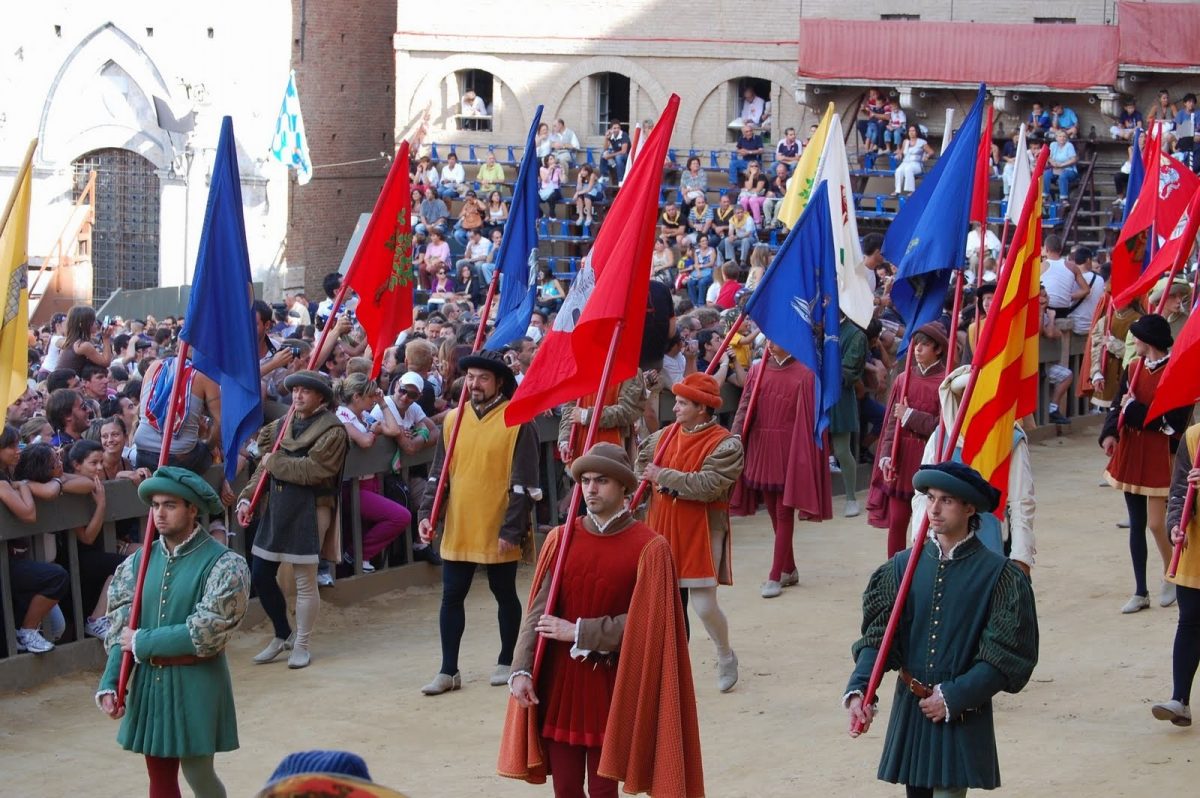
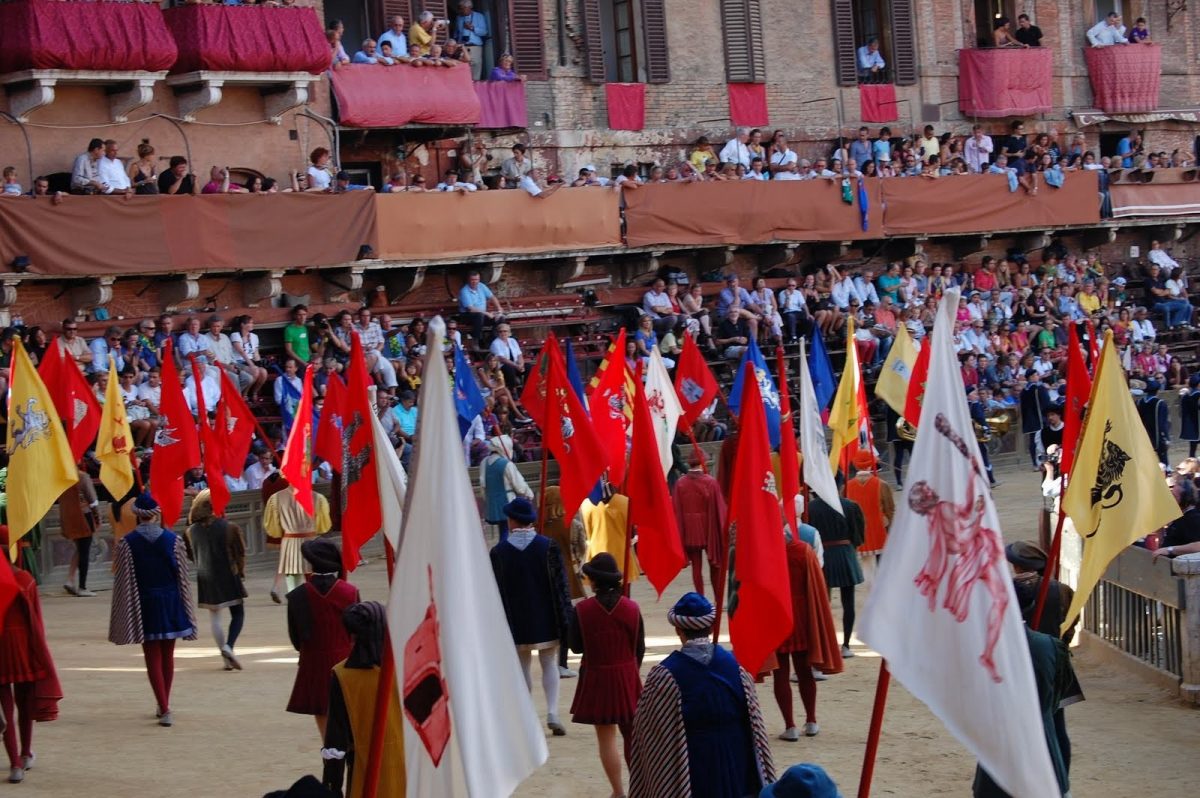
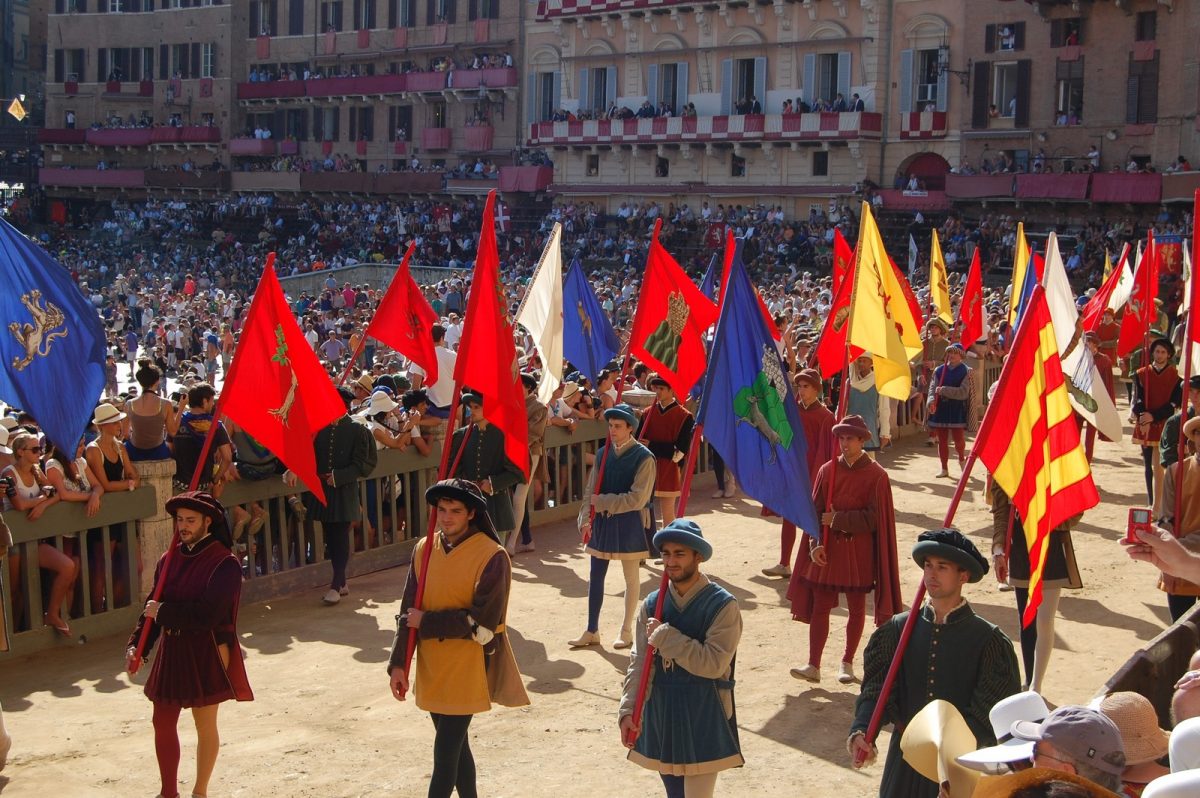
The 67 flags:
Un Tamburino, un Vessillifero, tre Balestrieri della Città di Massa Marittima
The representatives of Massa Marittima include a drummer, a standard bearer and 3 archers. They are given a privileged position in the Corteo because the city was linked to Siena in the 14th century by a “pact of friendship”. In the coat of arms and banner we recognize a golden lion on a red background and 3 lilies on a blue background.
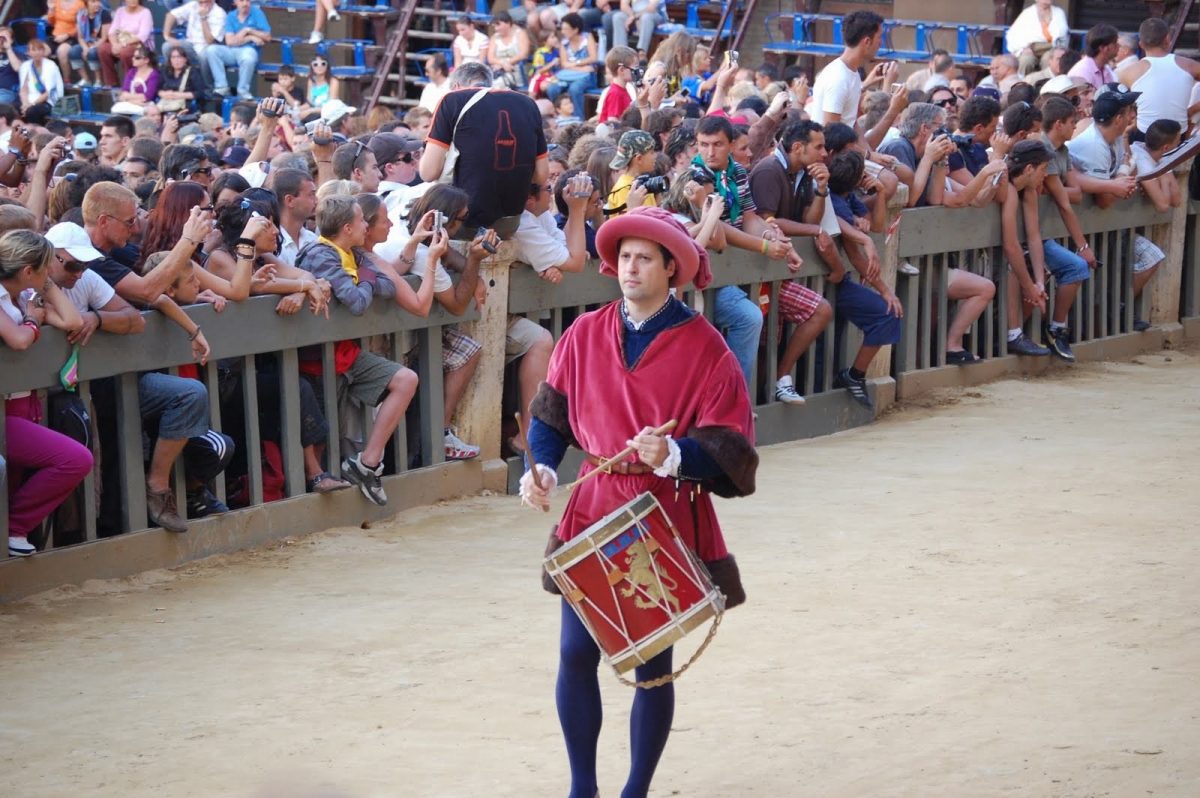

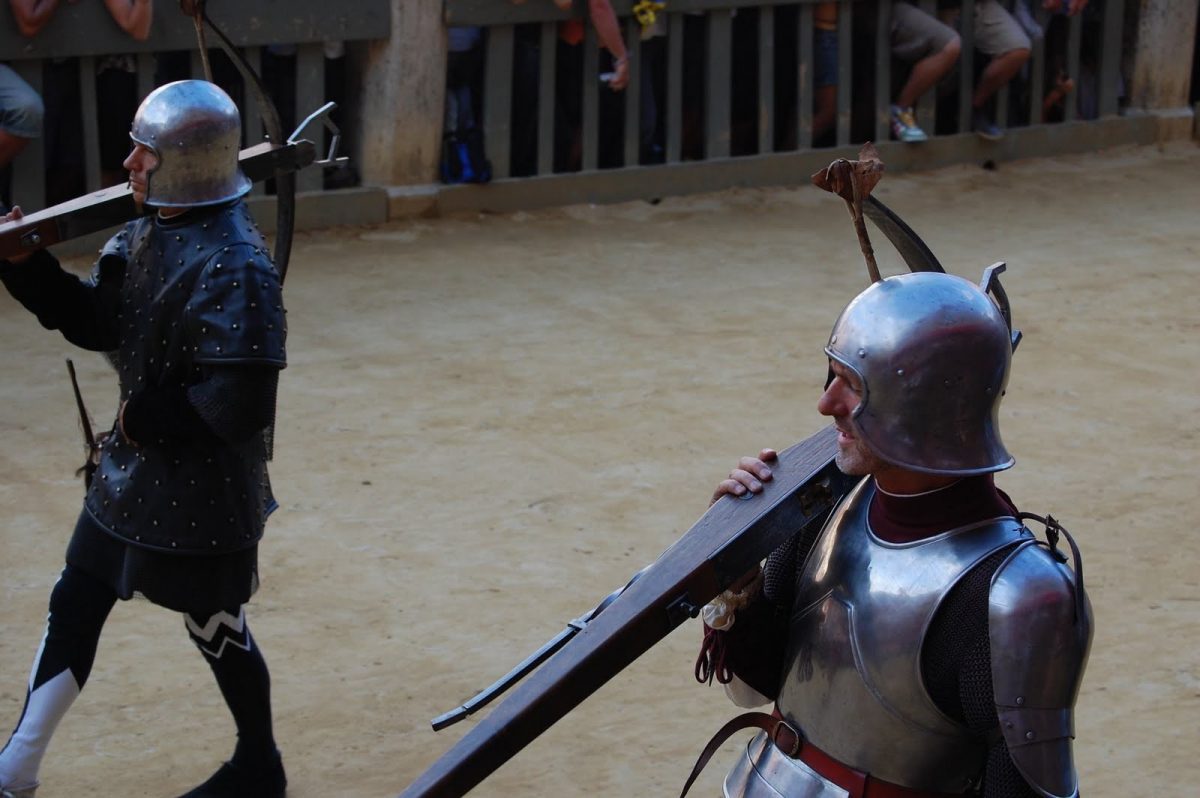
Un Tamburino, un Vessillifero, quattro Arcieri della Città di Montalcino
The representatives of Montalcino consist of a drummer, a standard bearer and four archers. They also have a privileged position in the Corteo Storico because of their close relationship with the Republic of Siena. In fact, it was Montalcino who opened the gates to Sienese in exile after the fall of the Republic.
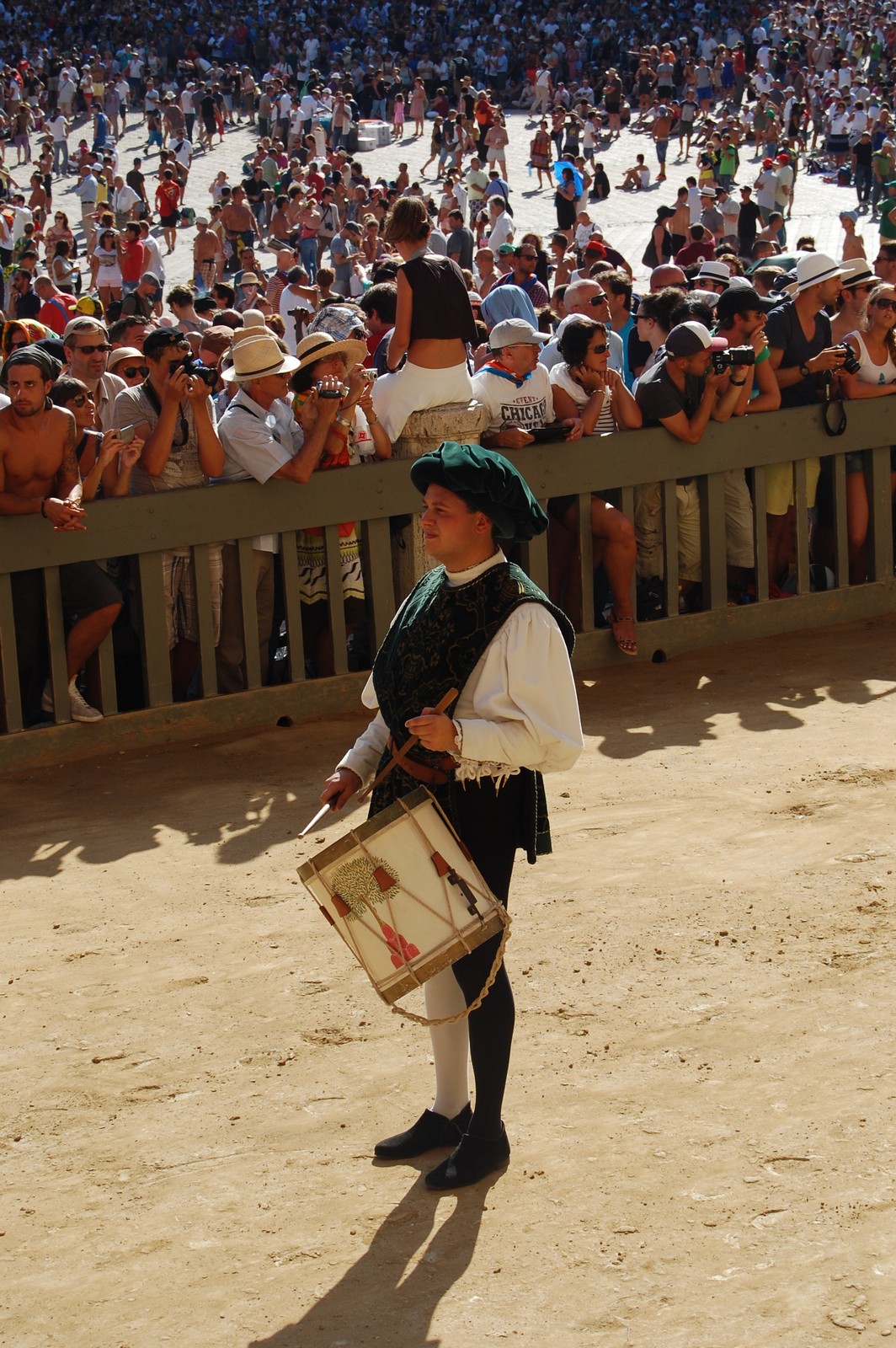
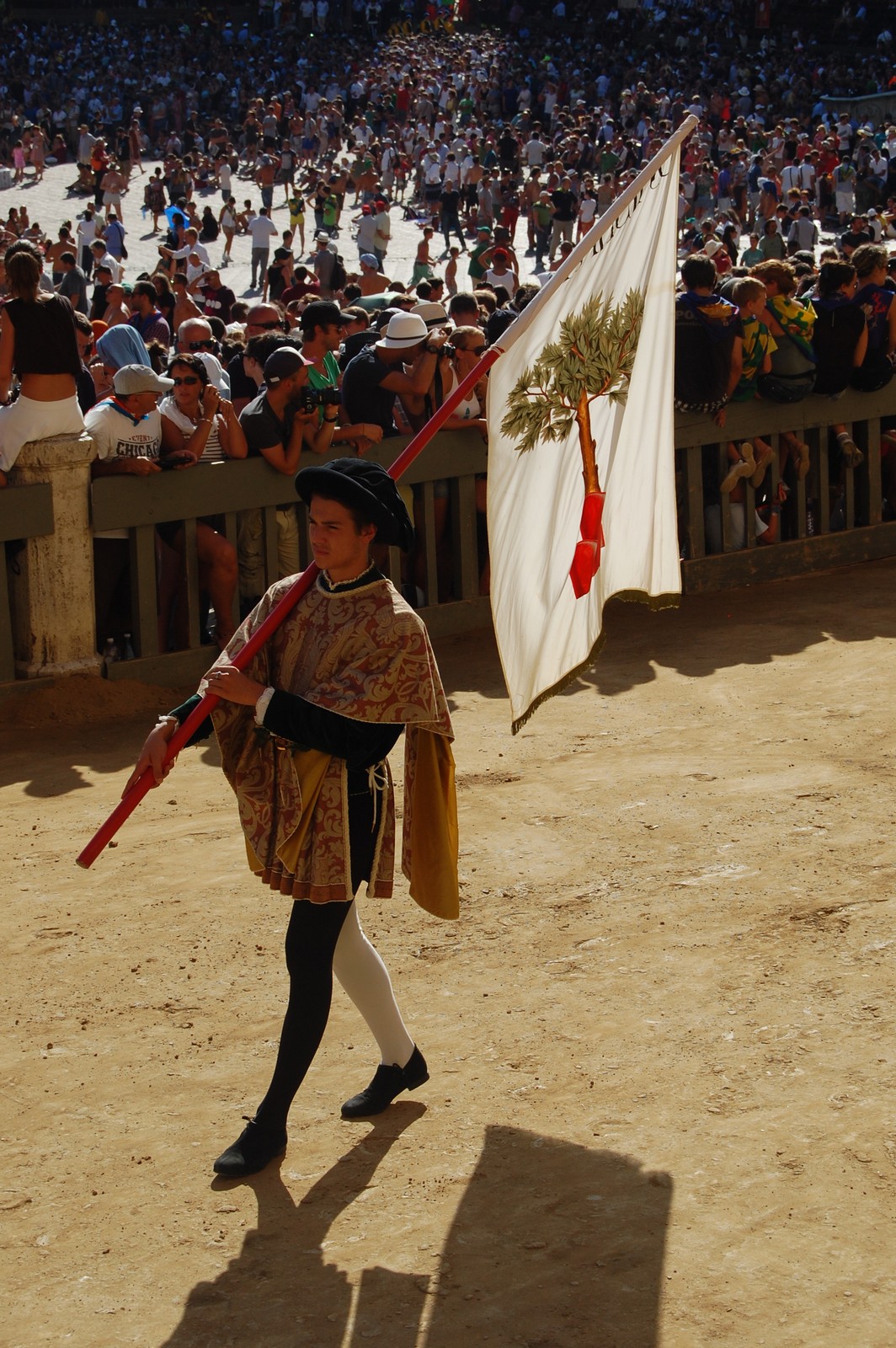
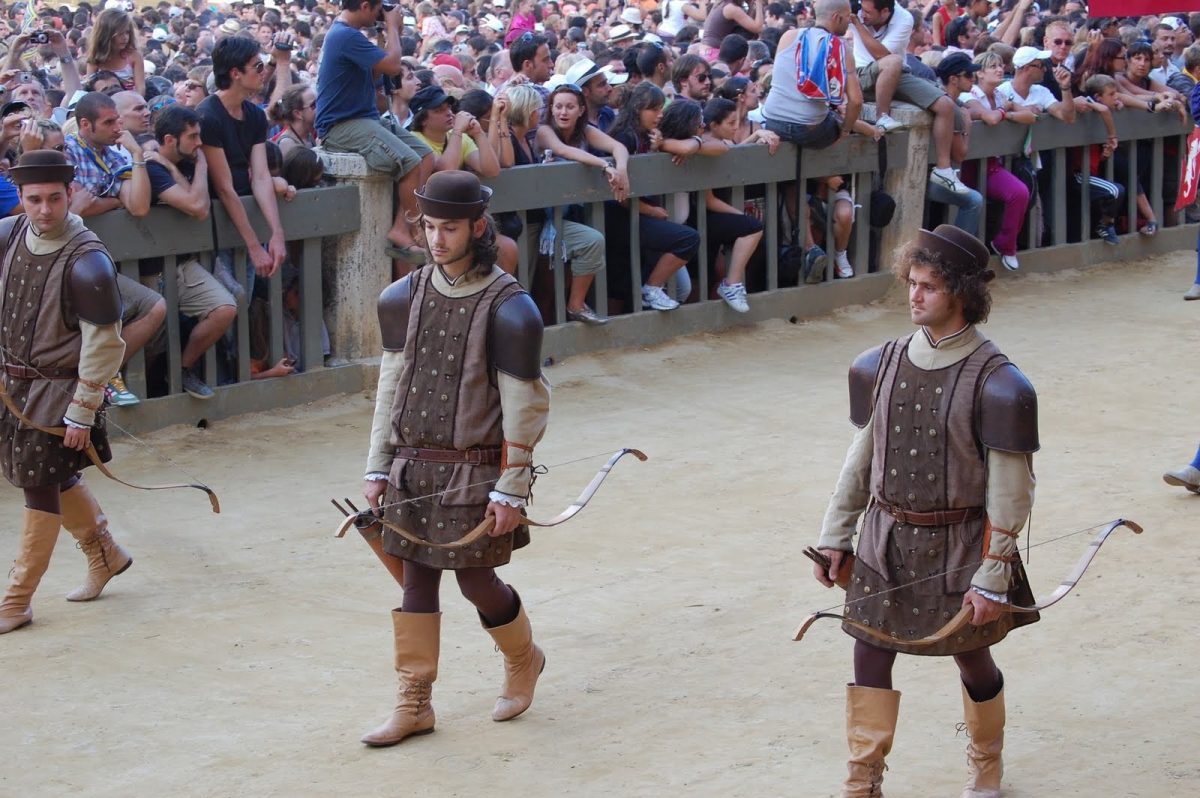
Secondo gruppo
Vessillifero del Capitano del Popolo
The standard-bearer bears the captain’s symbol; a white crowned lion on a red background.
Tre paggi del Capitano del Popolo
The pages that are wearing are helmet, shield and sword.
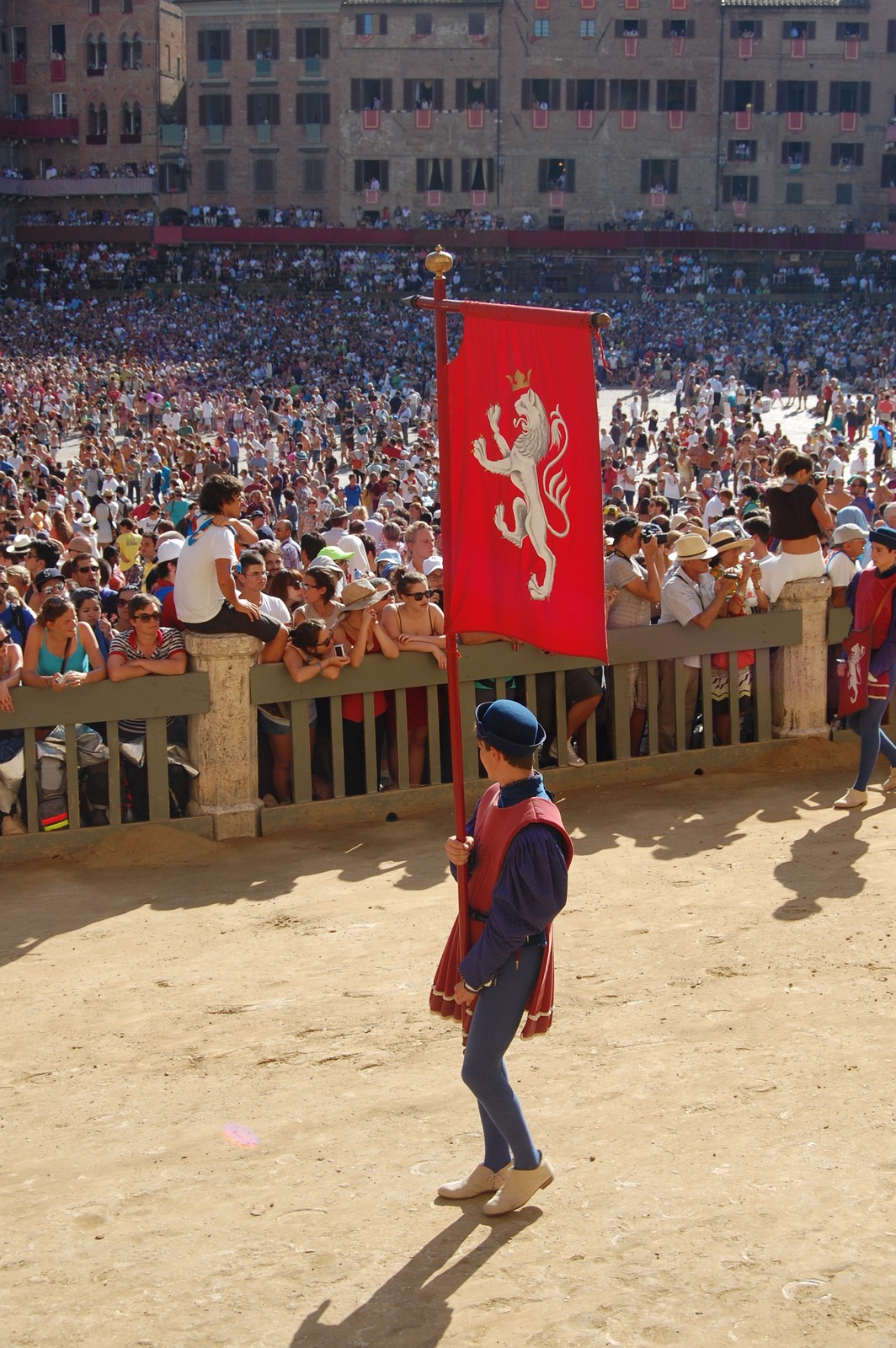
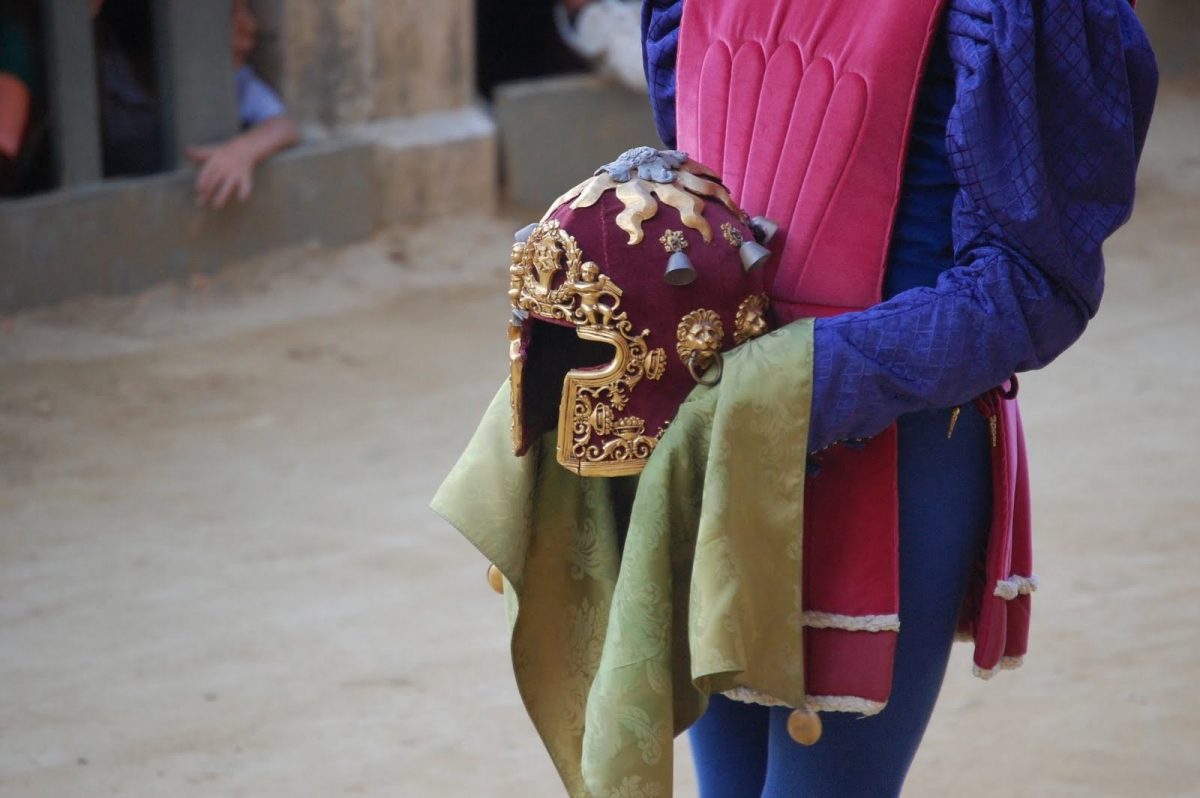
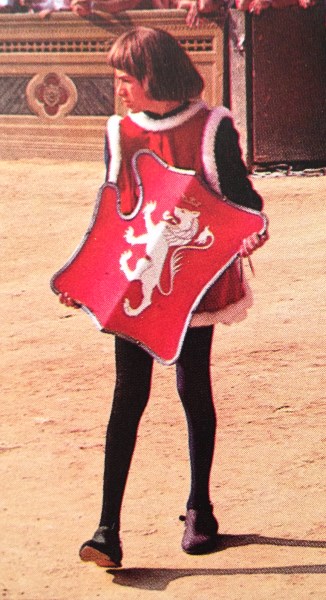
Capitano del Popolo a cavallo con Palafreniere
The Capitano del Popolo is accompanied by a ‘groom’ and preceded by a standard-bearer and 3 pages. He was the highest rank in the army of the Republic and carries a command pole.
Tre Gonfalonieri dei Terzi a cavallo con Palafreniere
Three flag carriers on horseback under the guidance of a ‘groom’. They carry the flags of the three boroughs: Città, San Martino and Camollia.
Terzo di Città: red flag with a white cross
Terzo di San Martino: red flag with Saint Martin on horseback who shares his cloak with a beggar
Terzo di Camollia: white flag with a large K in the middle
Tre Centurioni dei Terzi a cavallo con Palafreniere
Three Centurions, also on horses with a ‘groom’. They were the commanders of the Terzi cavalry (three districts).
Tre Capitani delle Masse dei Terzi a cavallo con Palafreniere
The three captains on horseback with ‘groom’. They controlled the areas just next to the city. These areas were called “masses”.
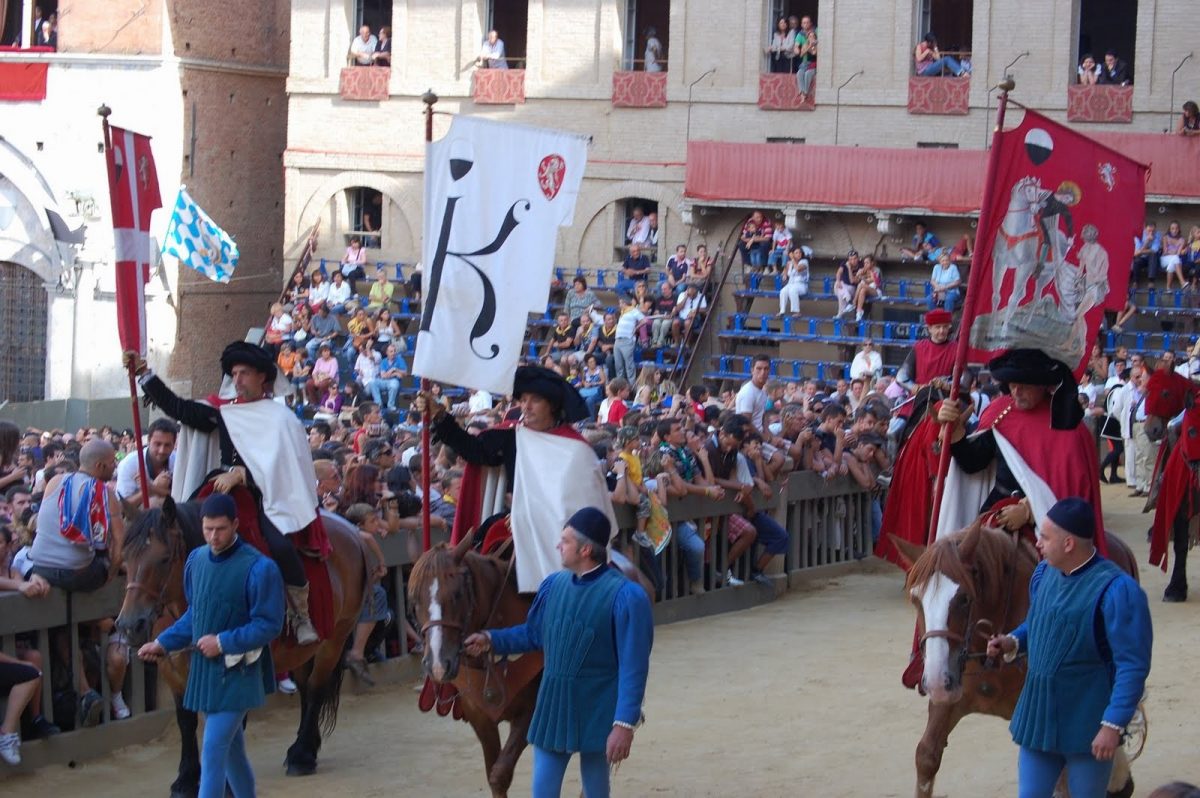
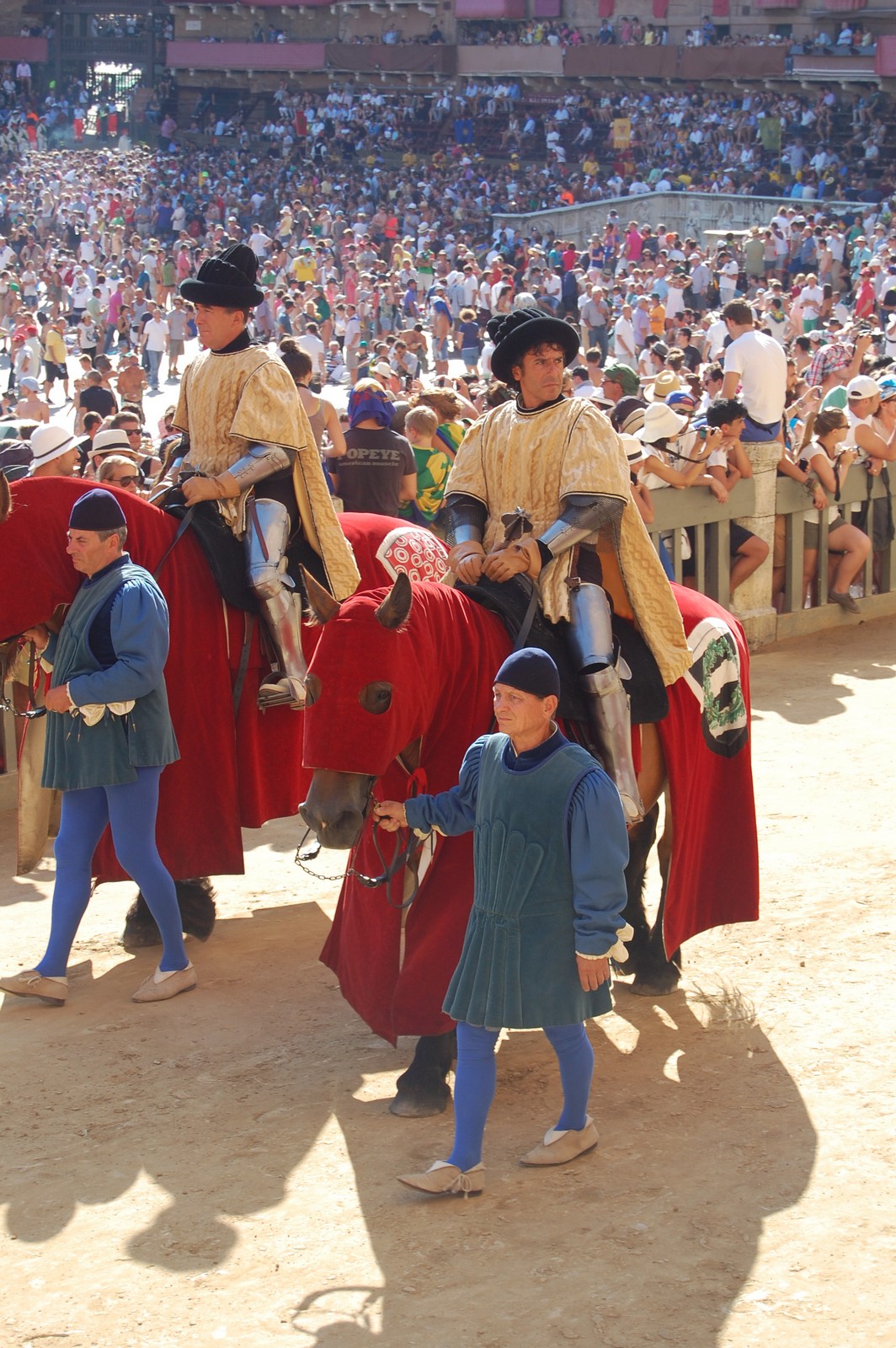
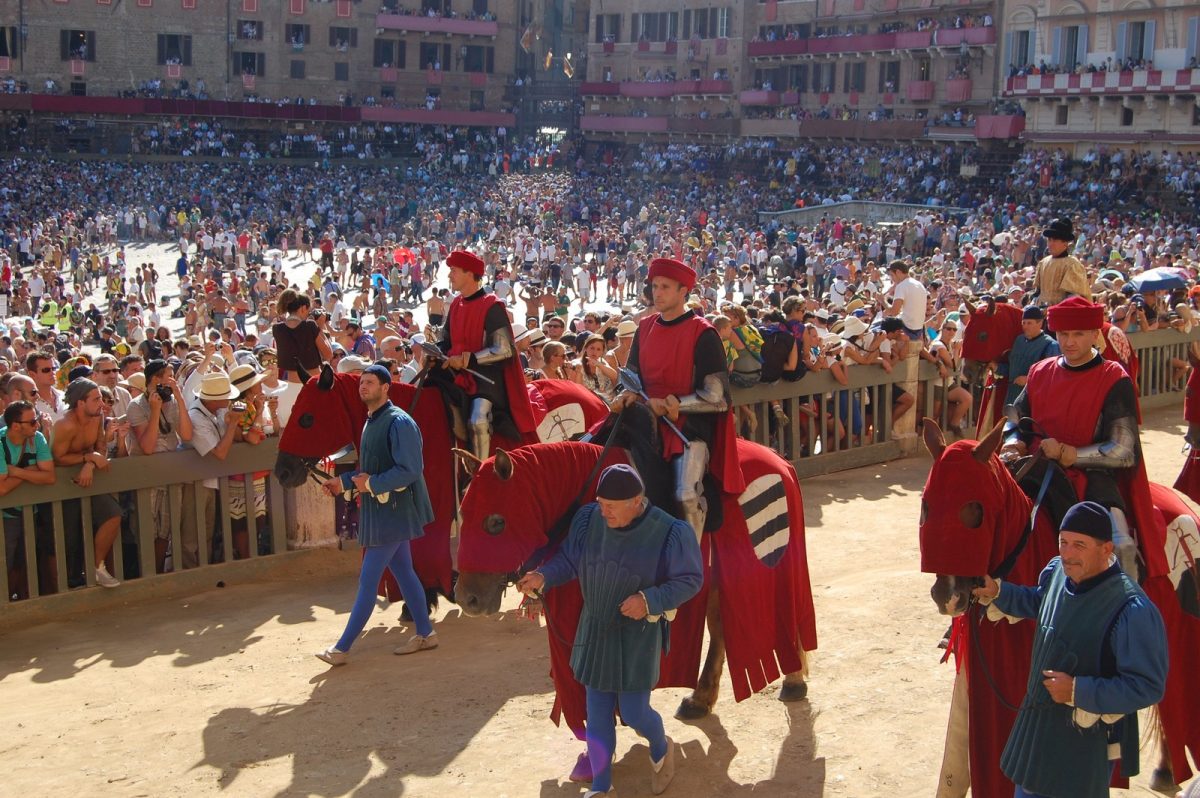
Terzo gruppo
Rappresentanti dell’antico Studio Senese
The rector, 4 teachers and 4 students are preceded by 2 drummers and a standard-bearer. The flag is red with a large M, which stands for “Domus Misericordiae”, the house of wisdom. The four teachers give the four courses for which the University of Siena was known: Law, Biology, Philosophy and Theology.
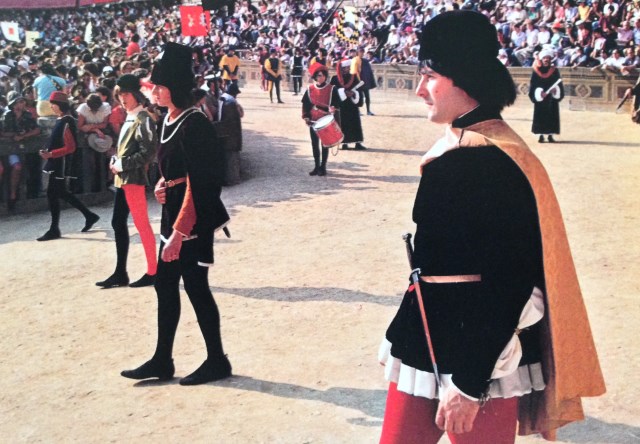
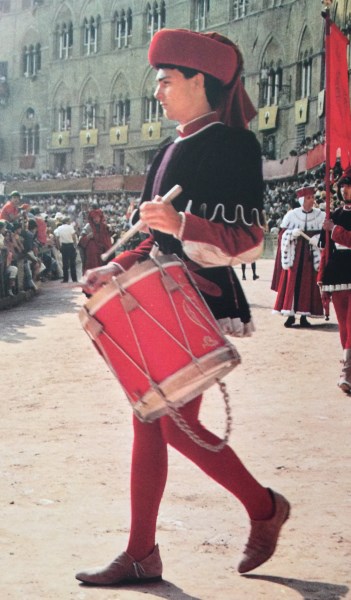
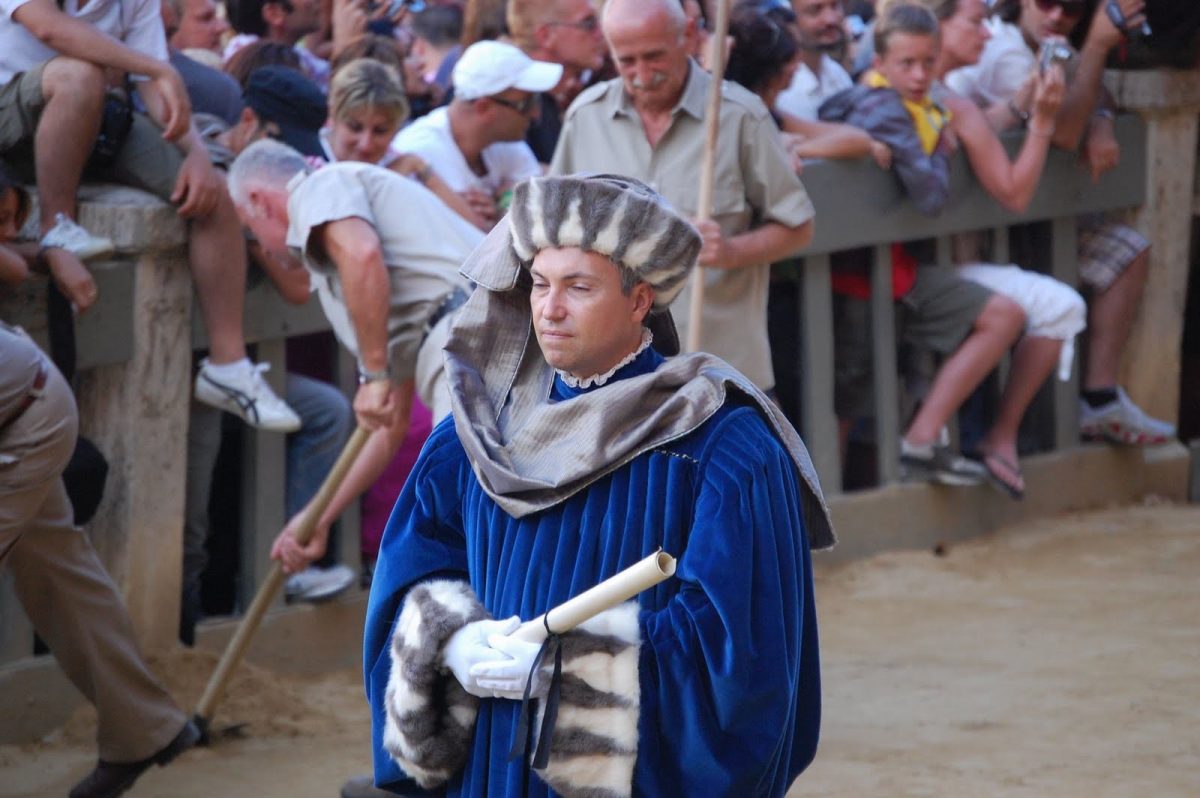
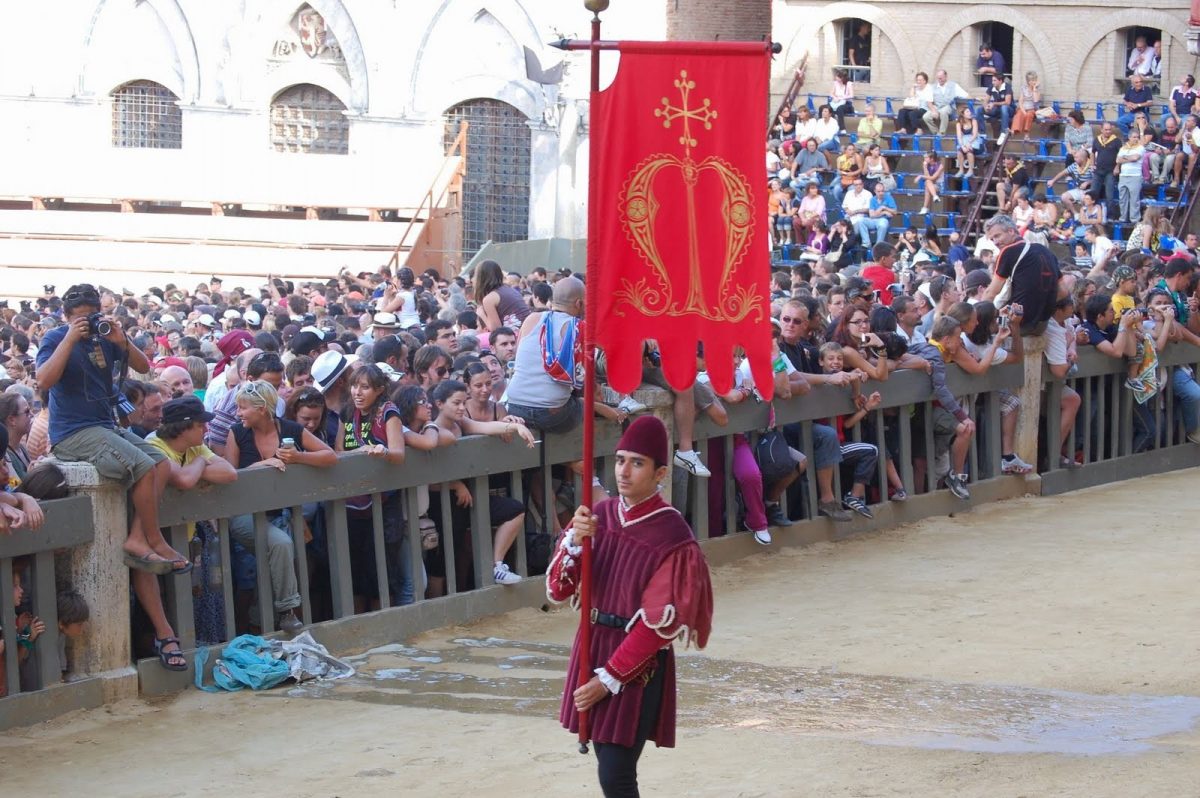
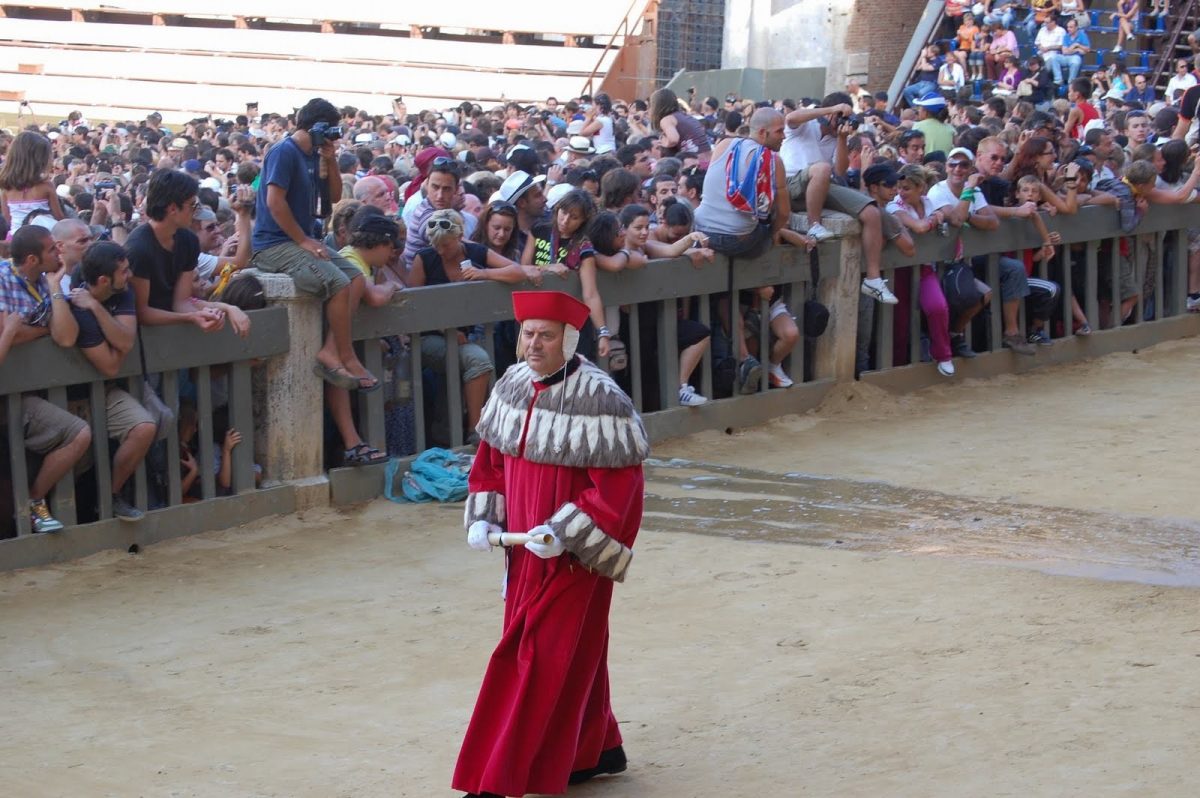
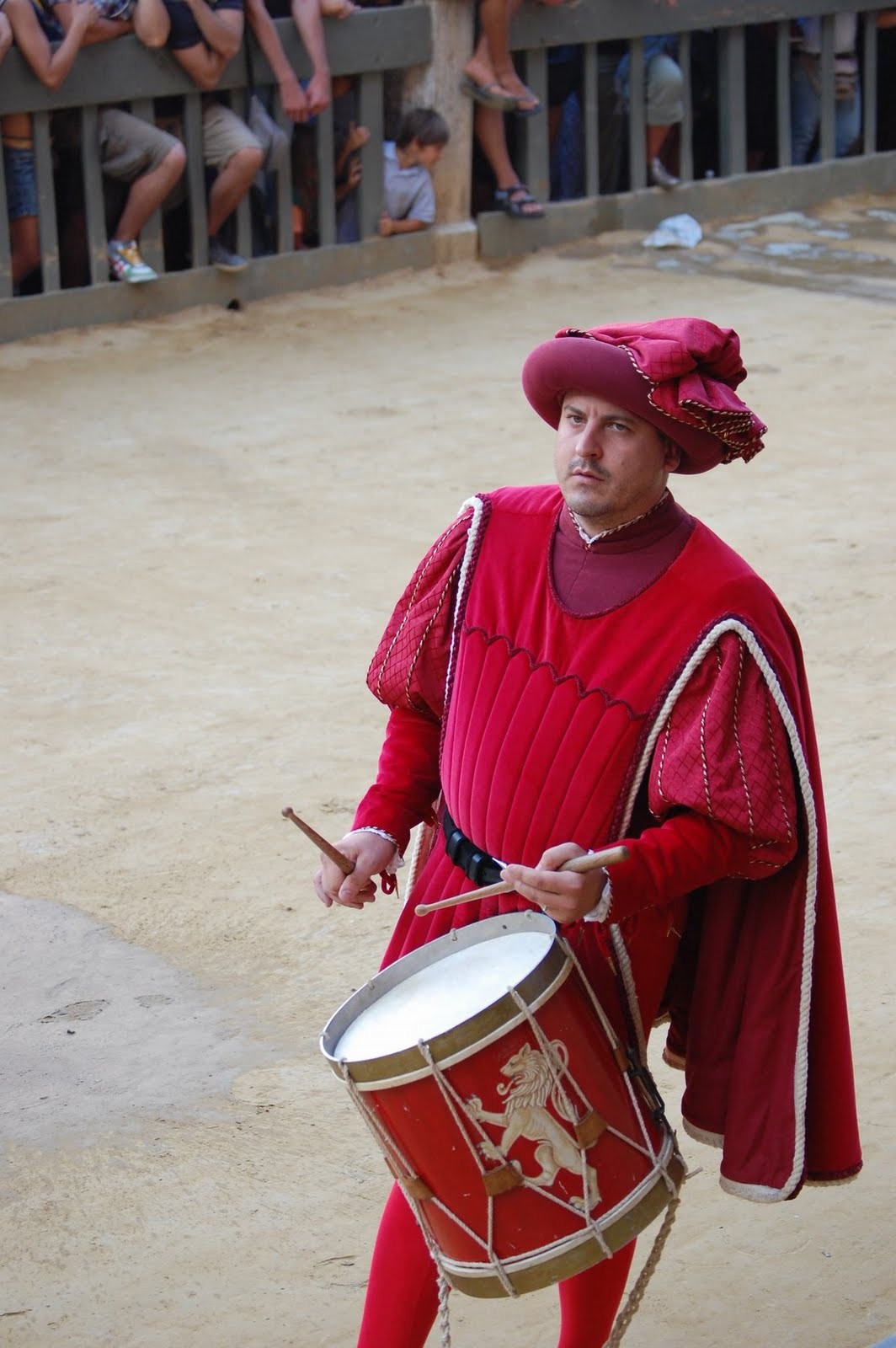
Quarto gruppo
Corporazione delle Arti
The three judges of commerce and the representatives of the people of the seventeen contrade are preceded by two Tamburini del Popolo and a flag bearer. The flag is blue / red with a package on it. The magistrates of the commercial court were an independent court of the Republic of Siena in the thirteenth century.
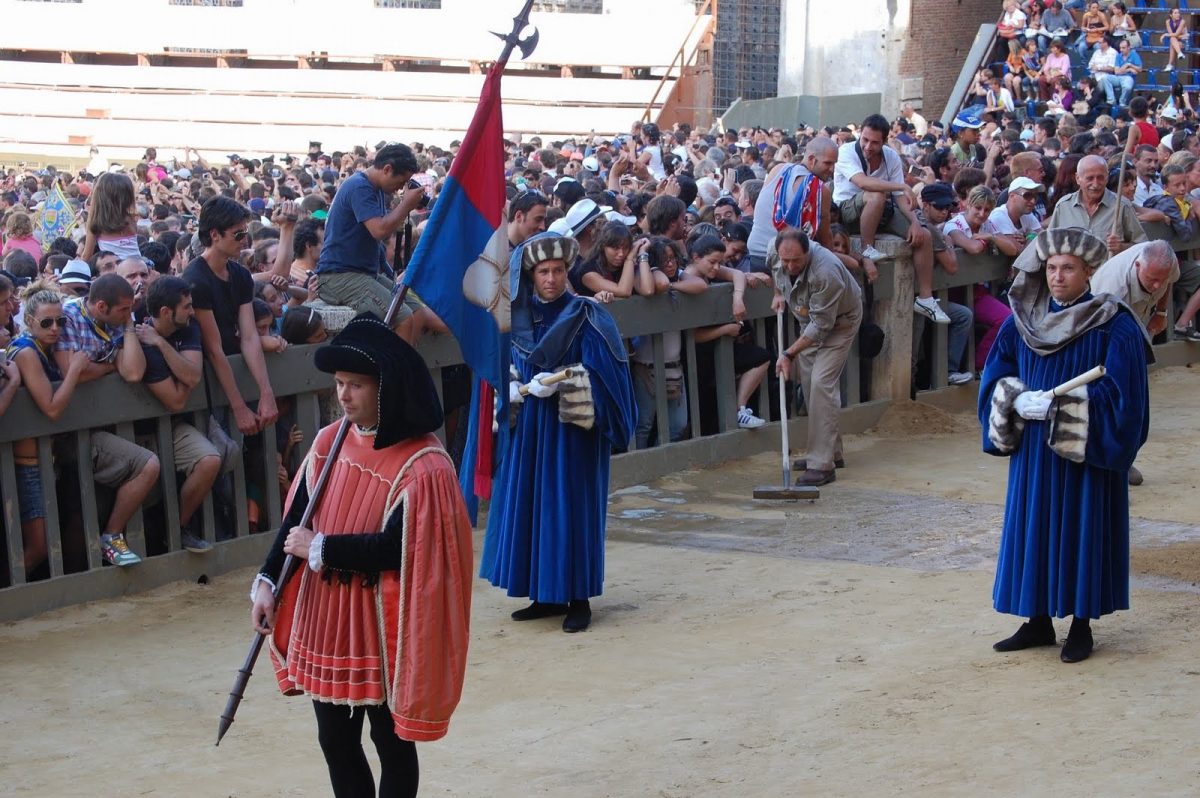
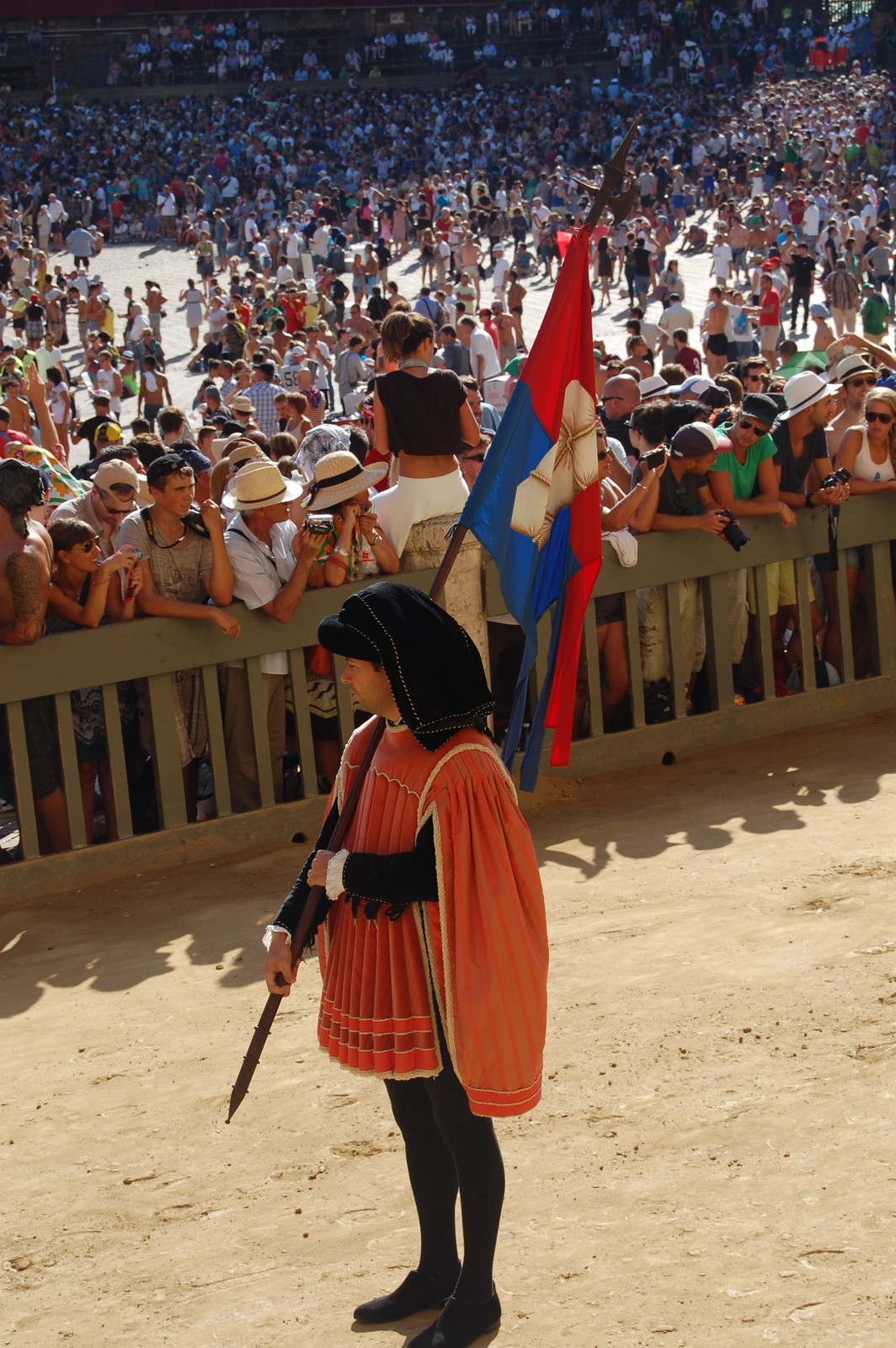
The Loggia della Mercanzia was built in different phases (bottom between 1428 and 1445 and the top between 1765 and 1766). The niches on the pillars contain 4 statues of the old patron saints of Siena: San Savino, Sant’Ansano and San Vittore were made by Antonio Federighi; San Pietro and St. Paolo by Lorenzo di Pietro The back of the palace is on the Piazza opposite the Palazzo Pubblico, indicating the power that this judiciary had.
Each contrada is represented by 6 delegates, preceded by a standard-bearer with a flag on which the guild of each district stands. The order in which they enter the square varies from Palio to Palio. After all, they come up in the order of the estrazione.
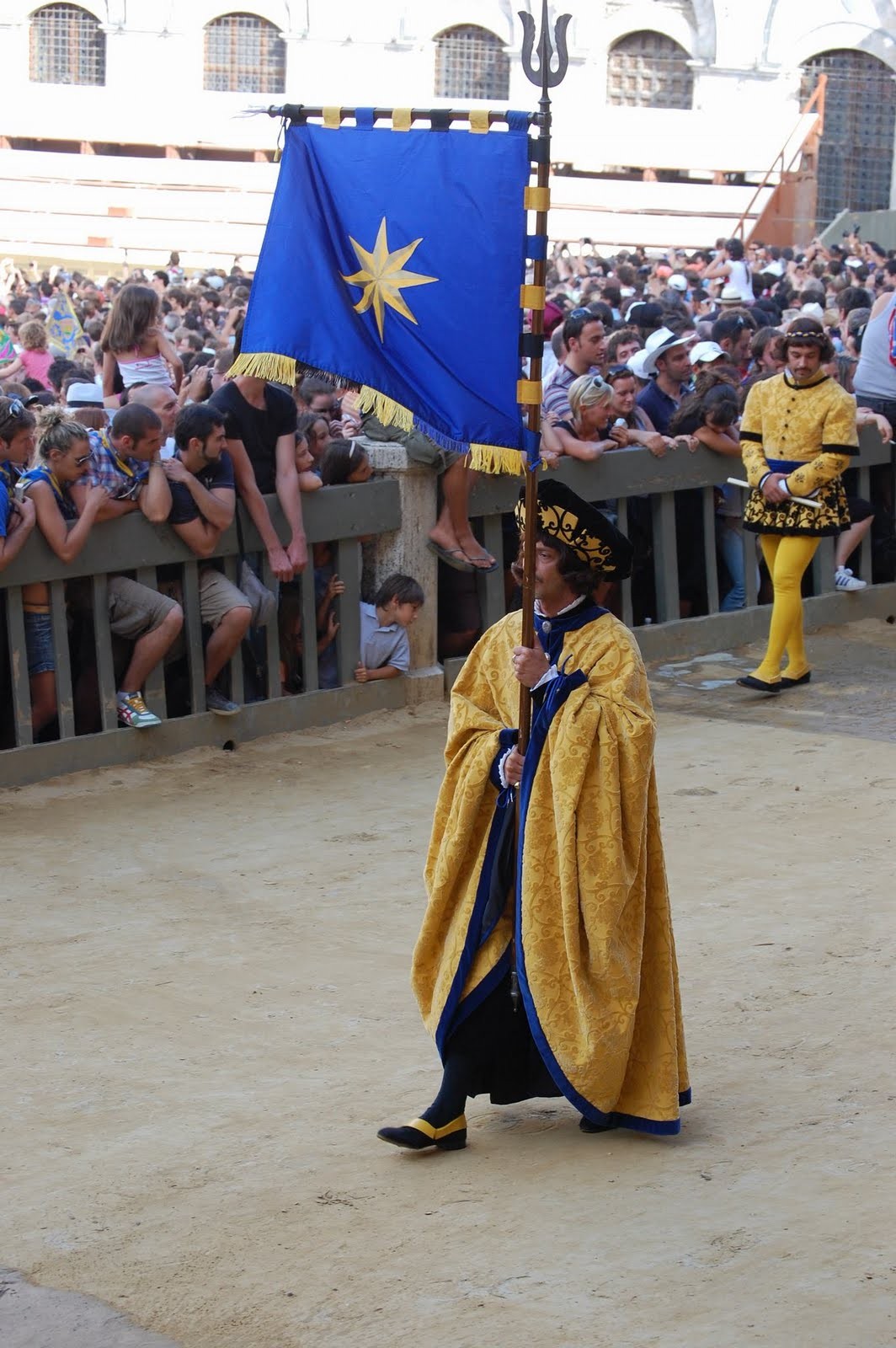
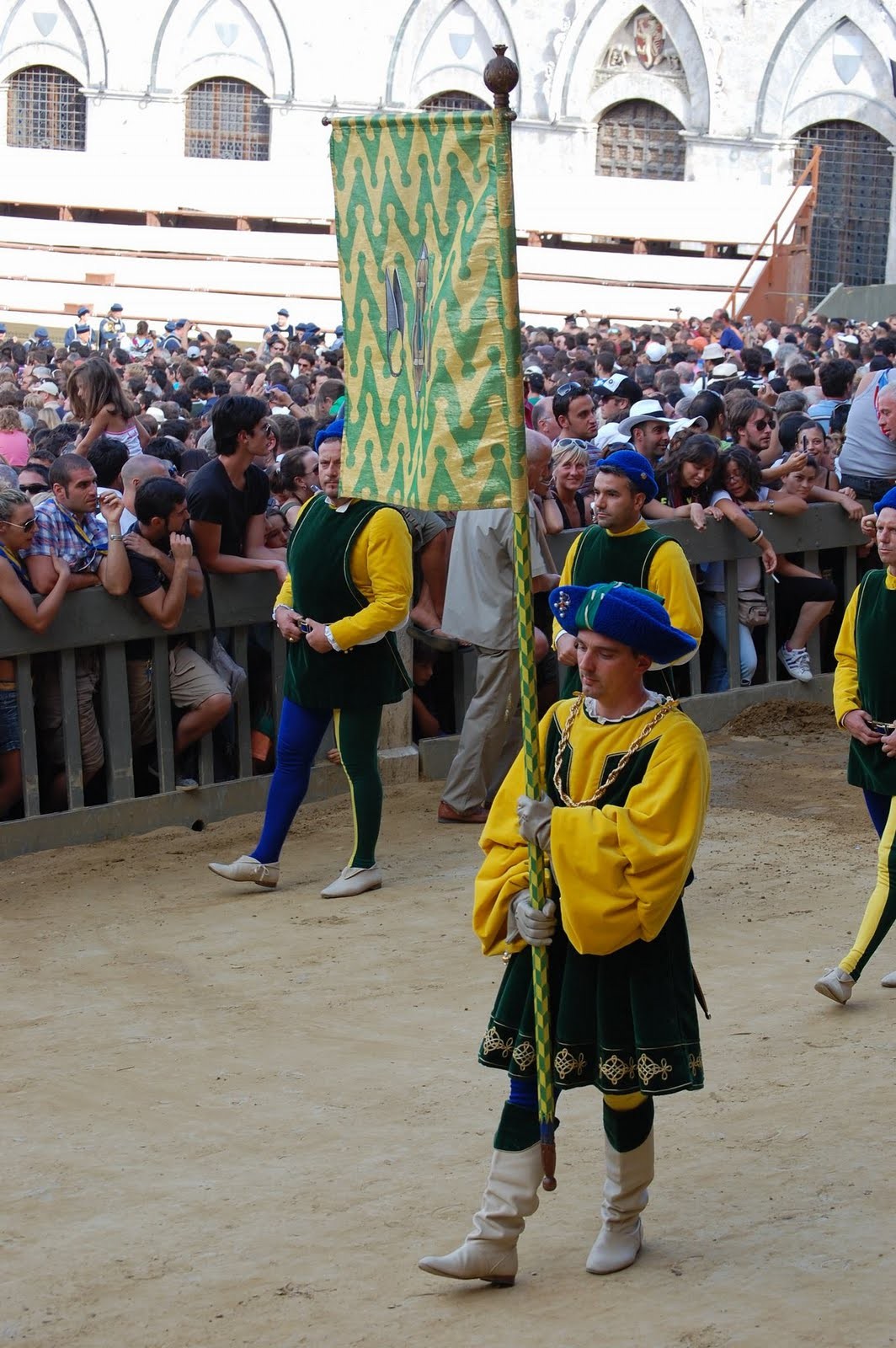
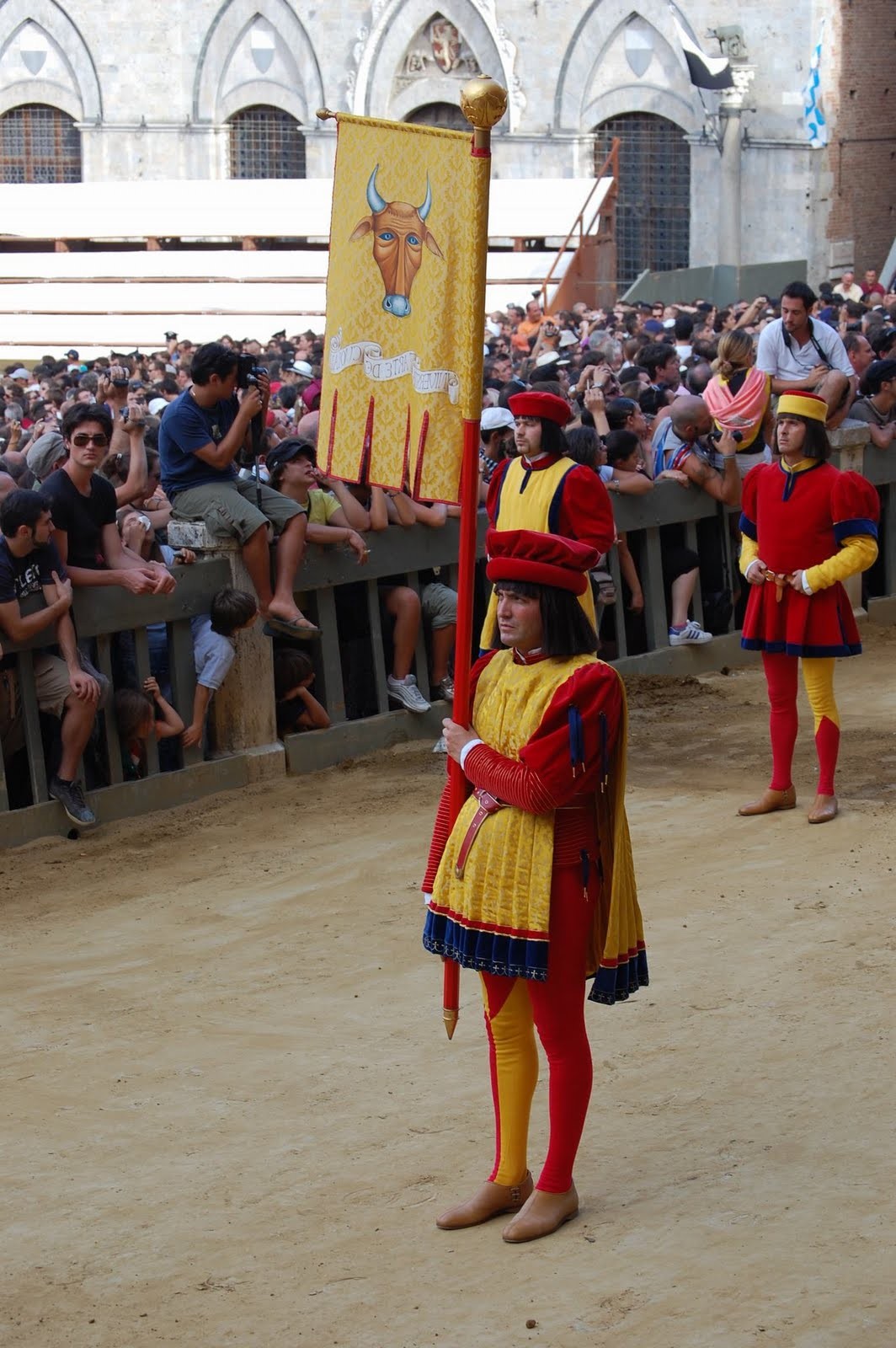
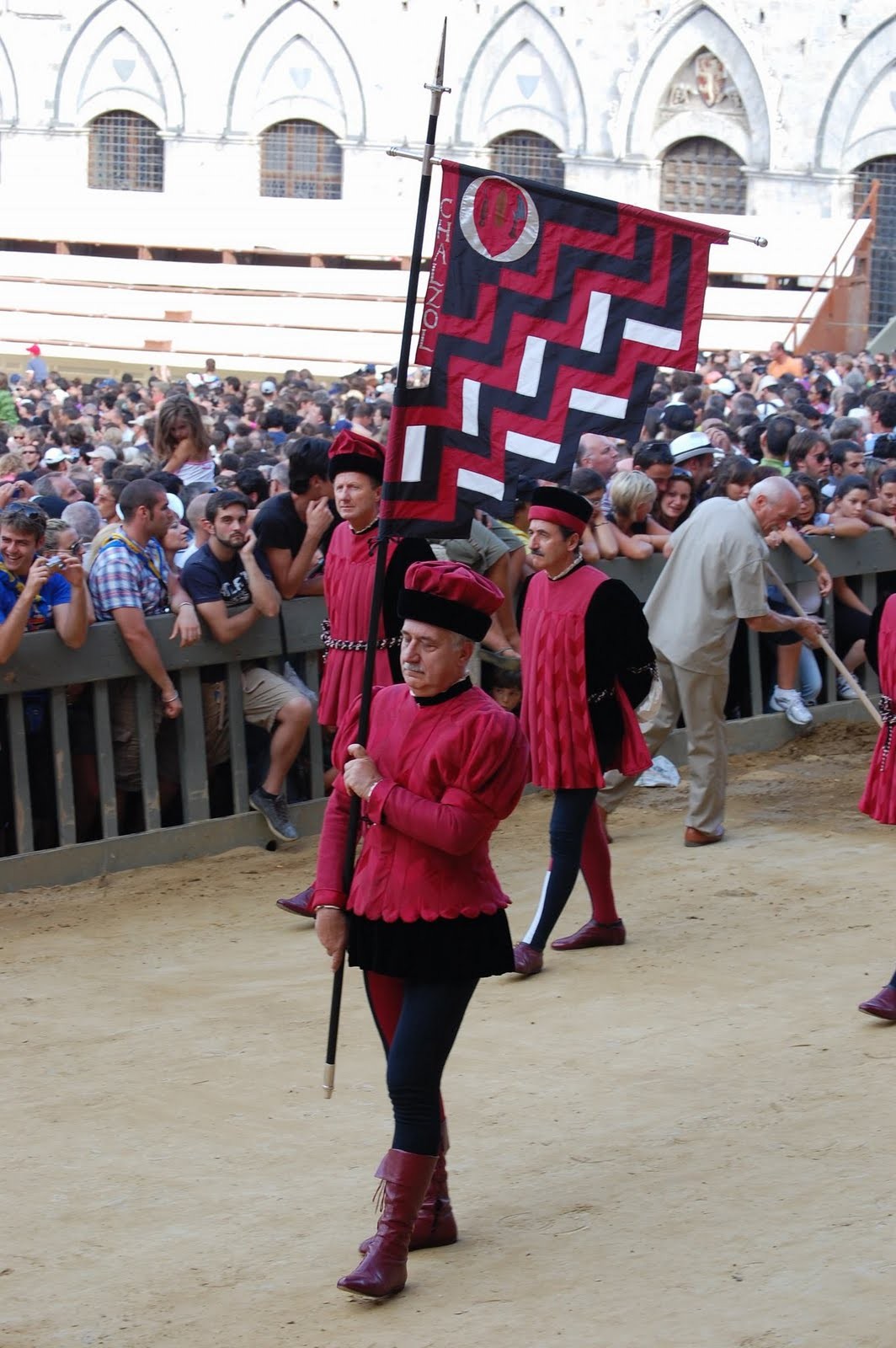
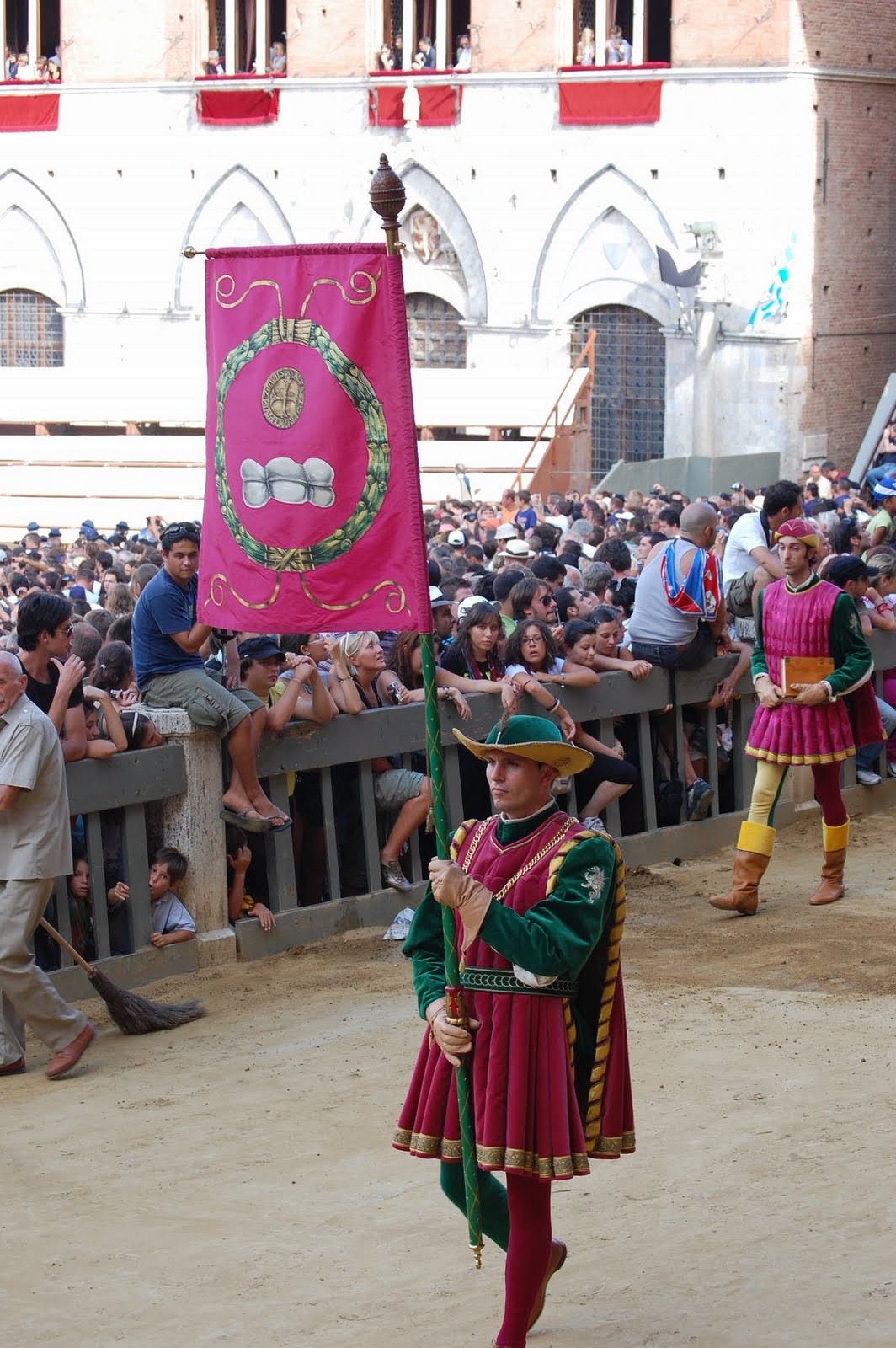
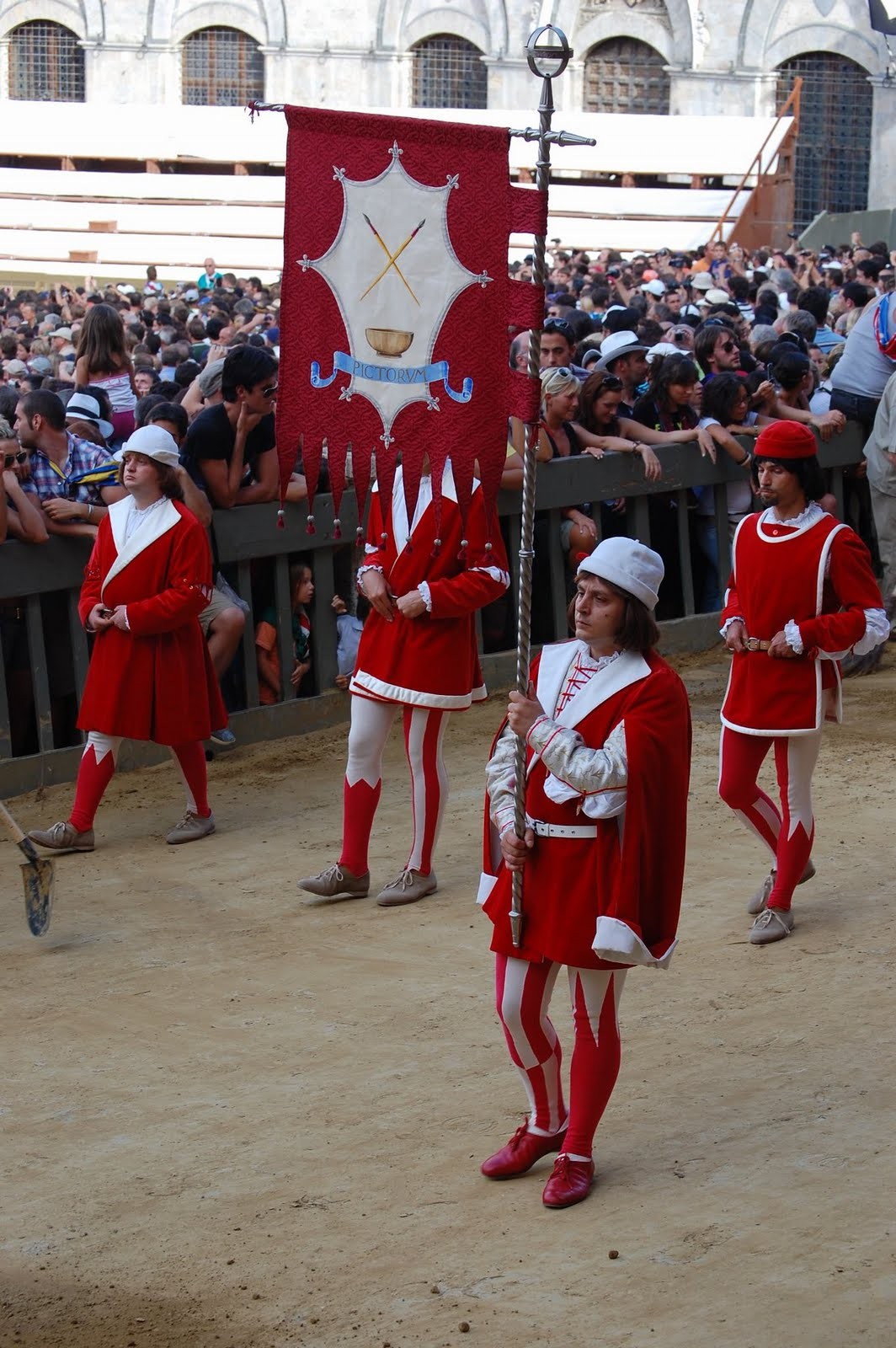
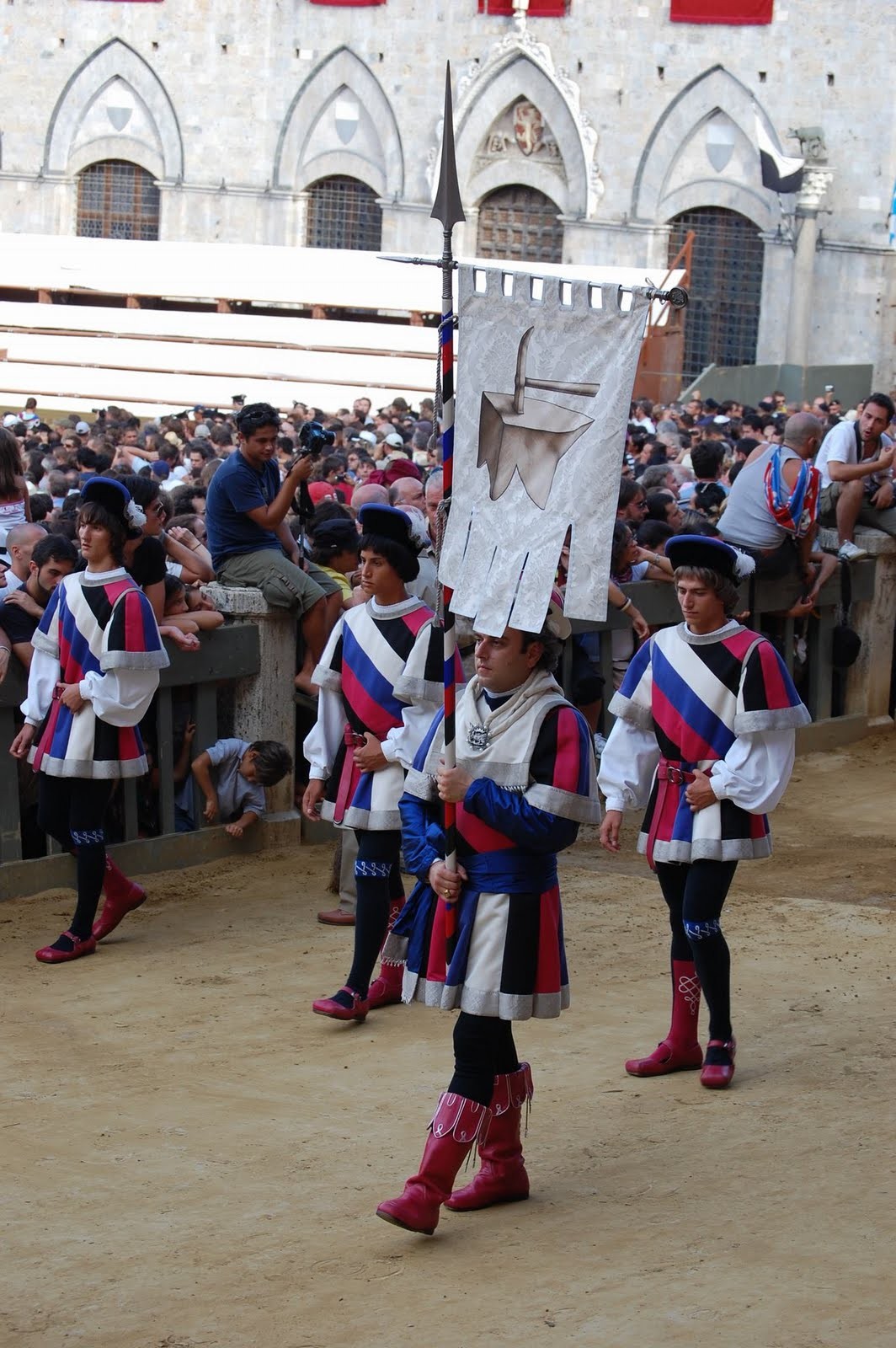
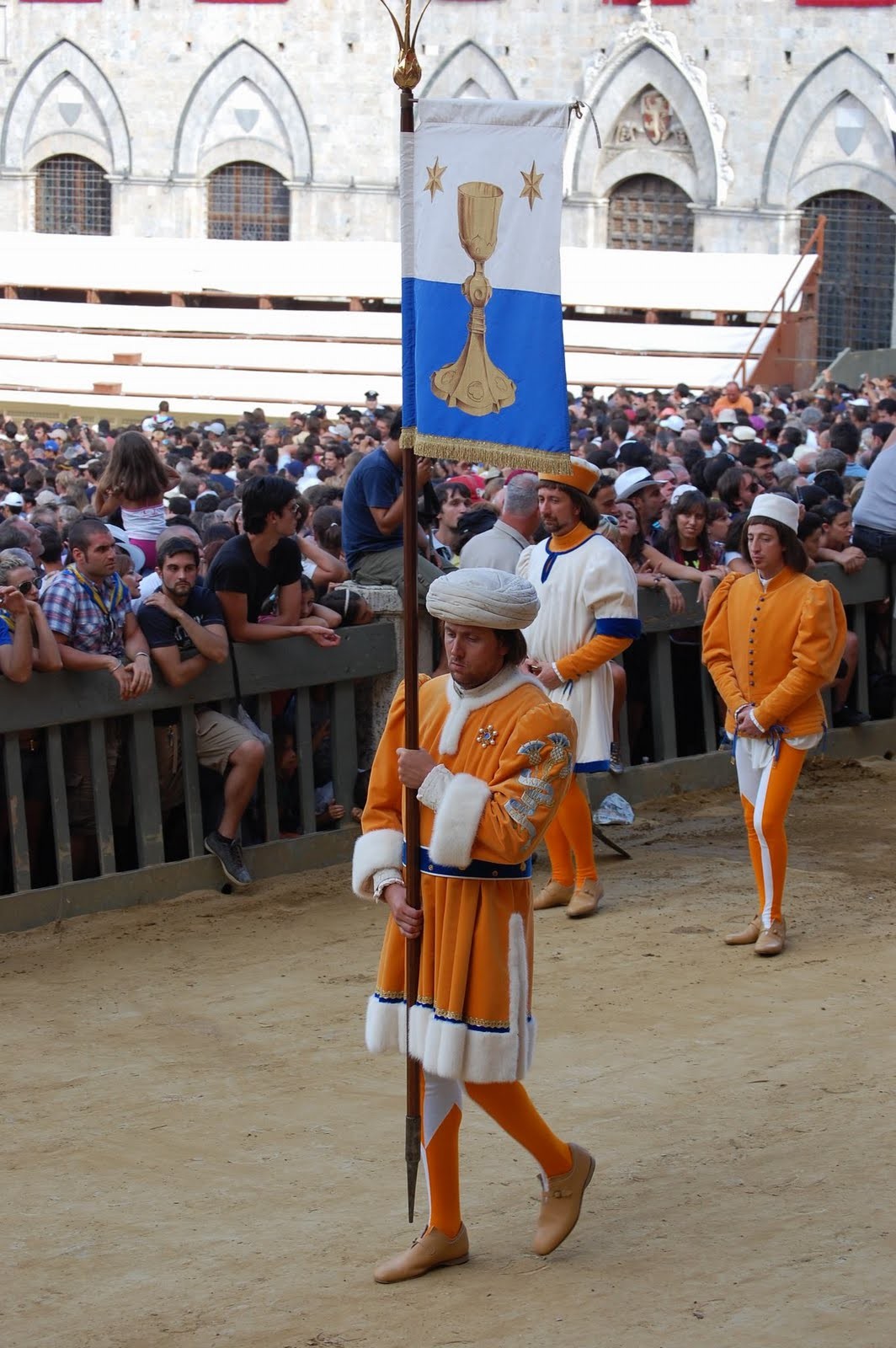
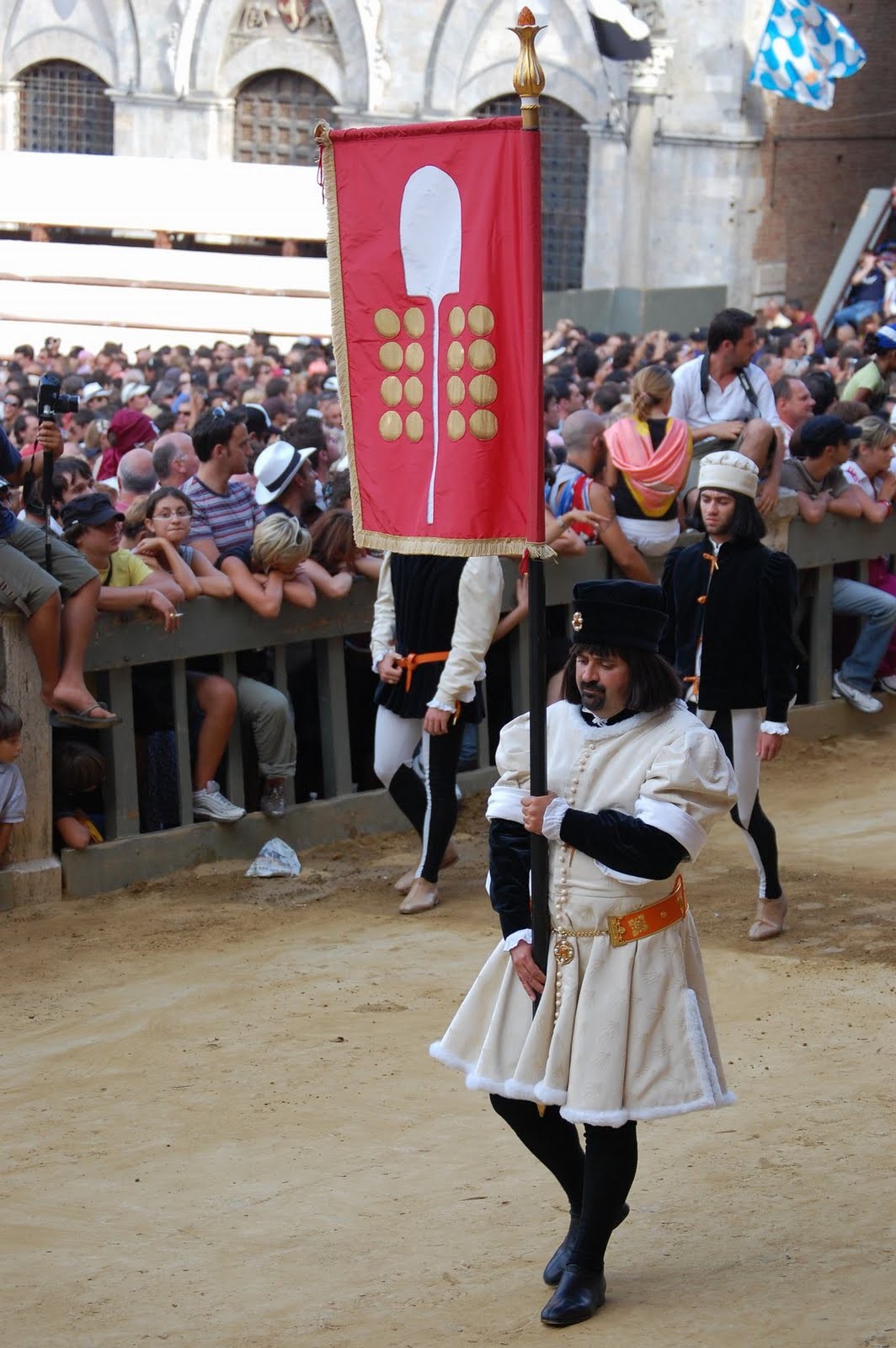
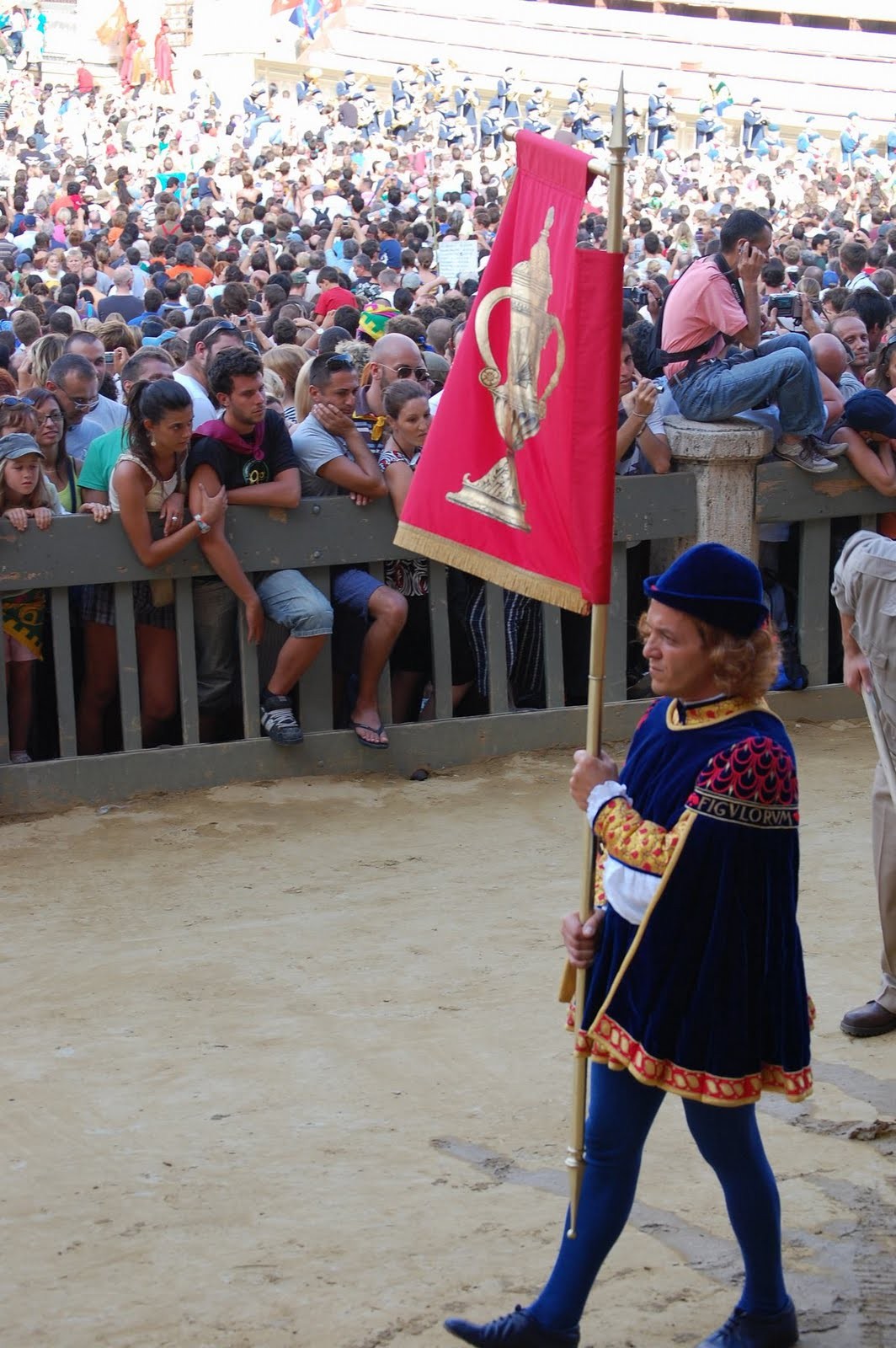
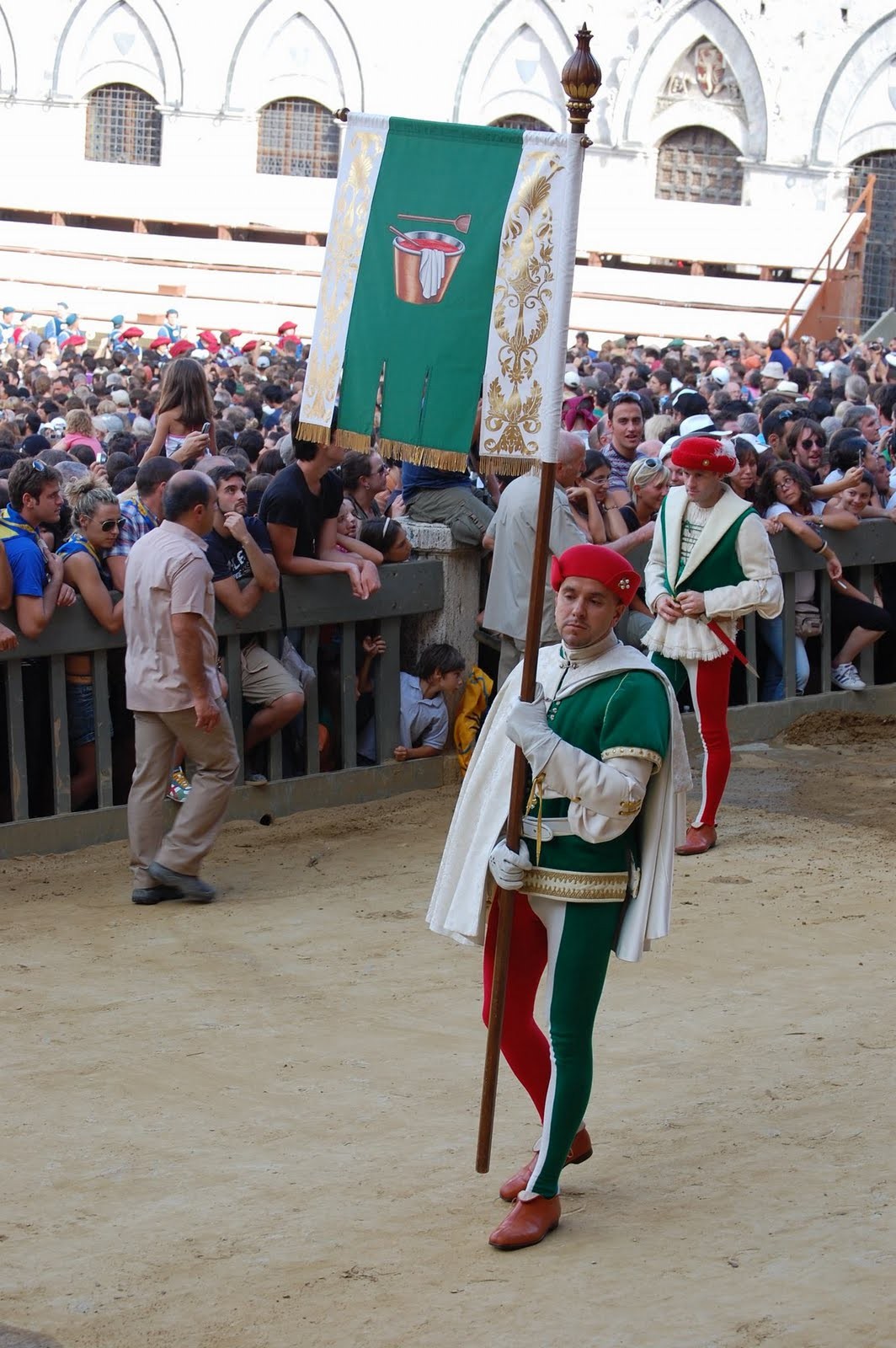
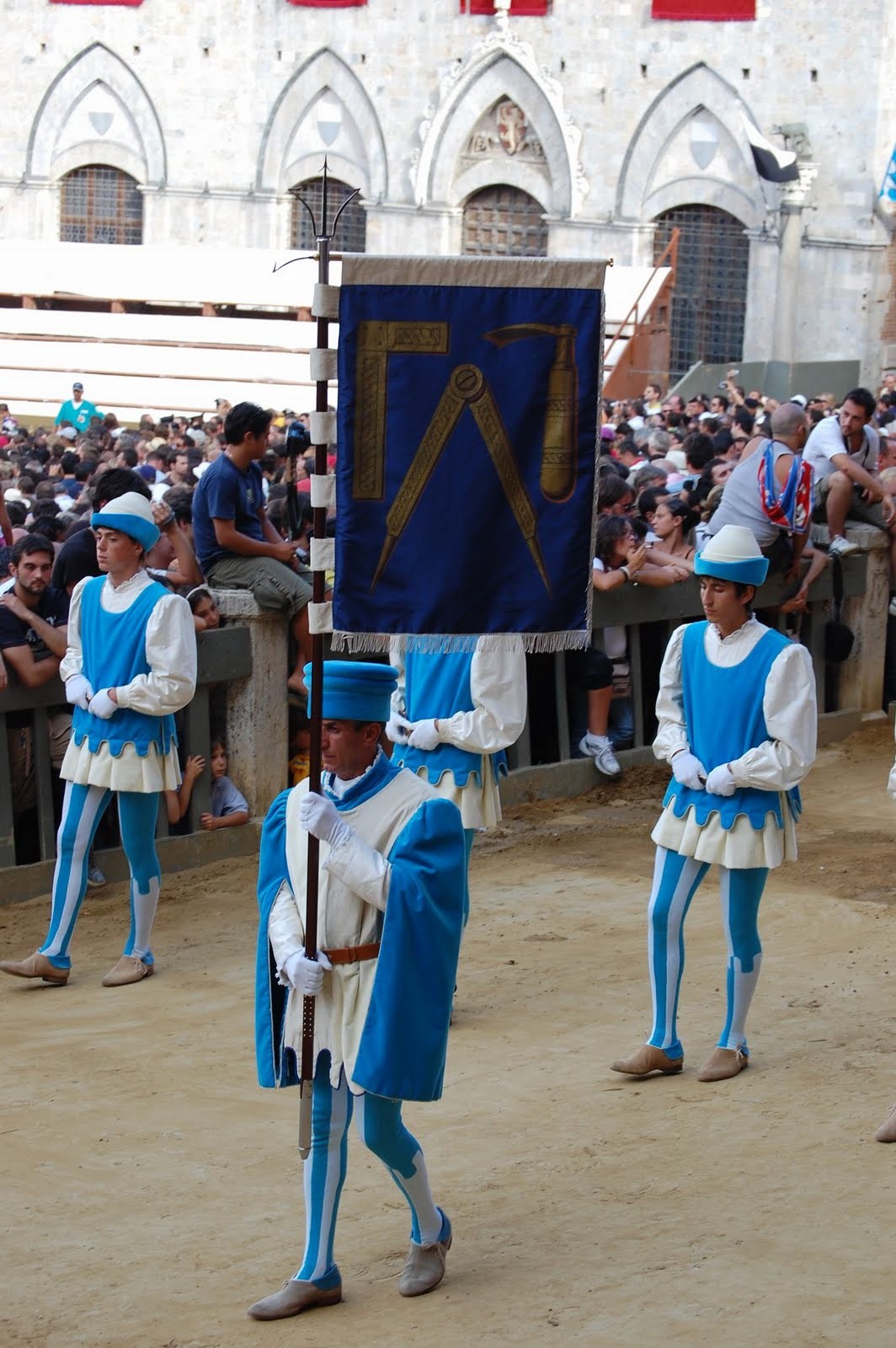
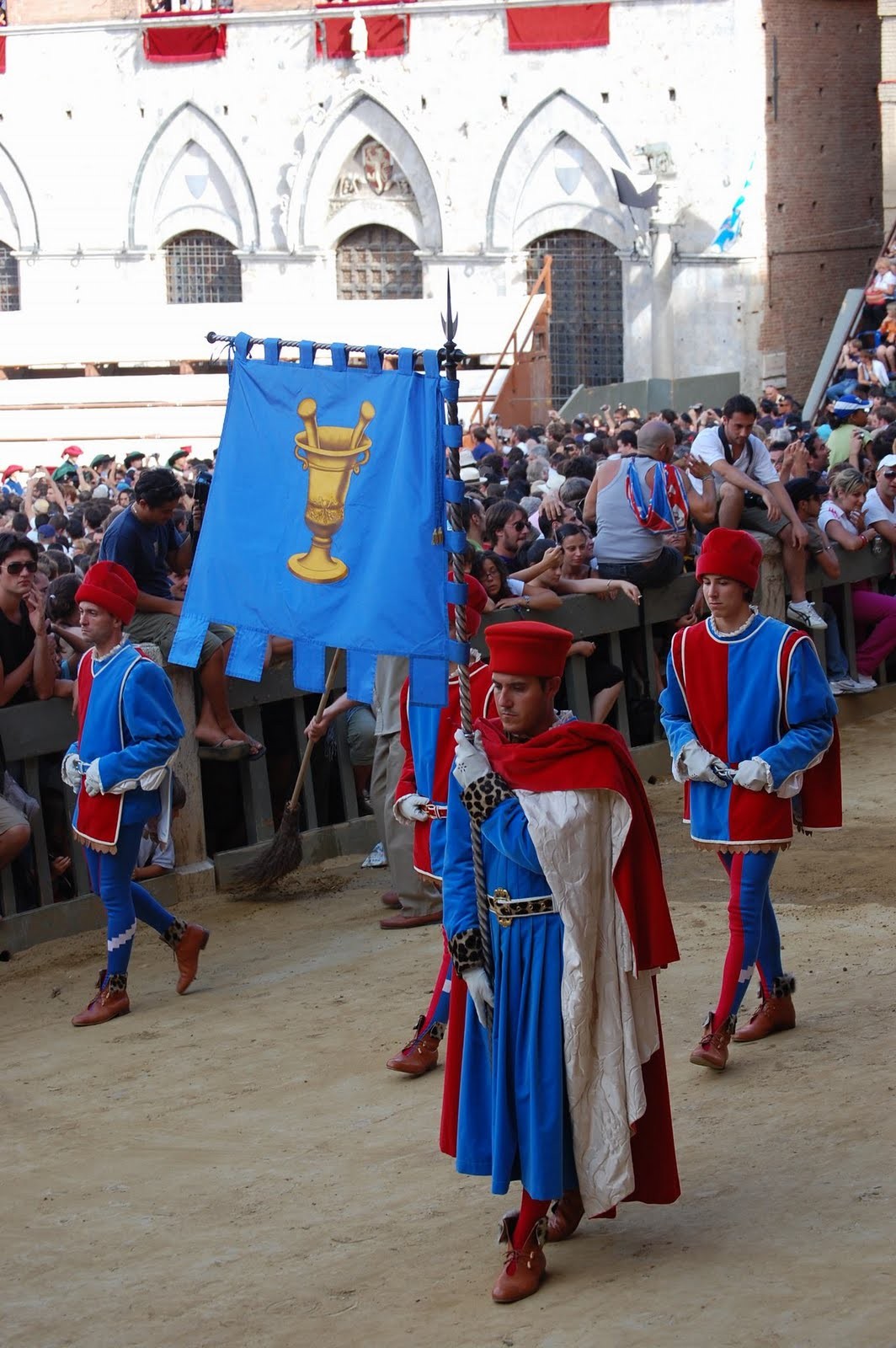
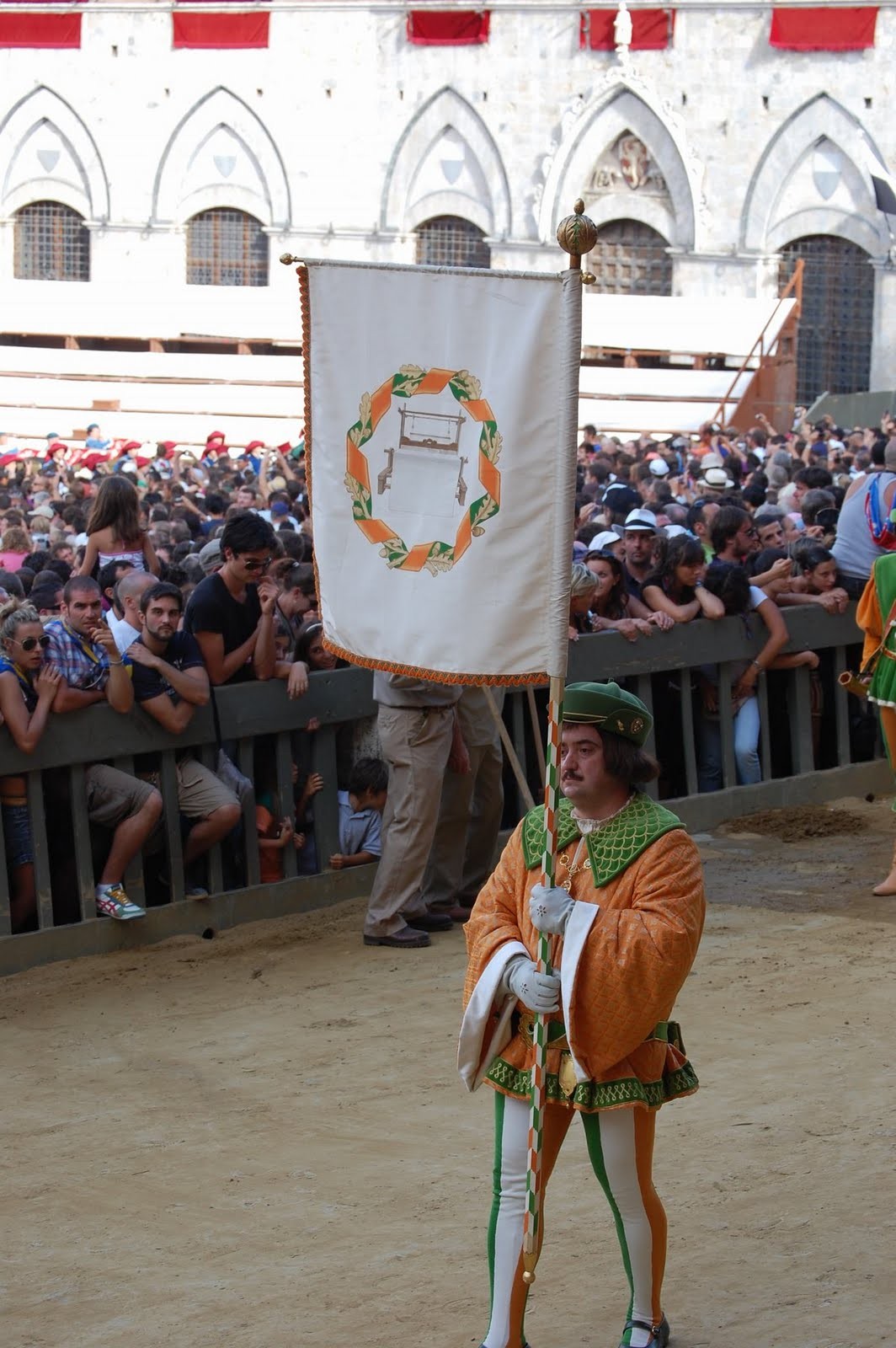
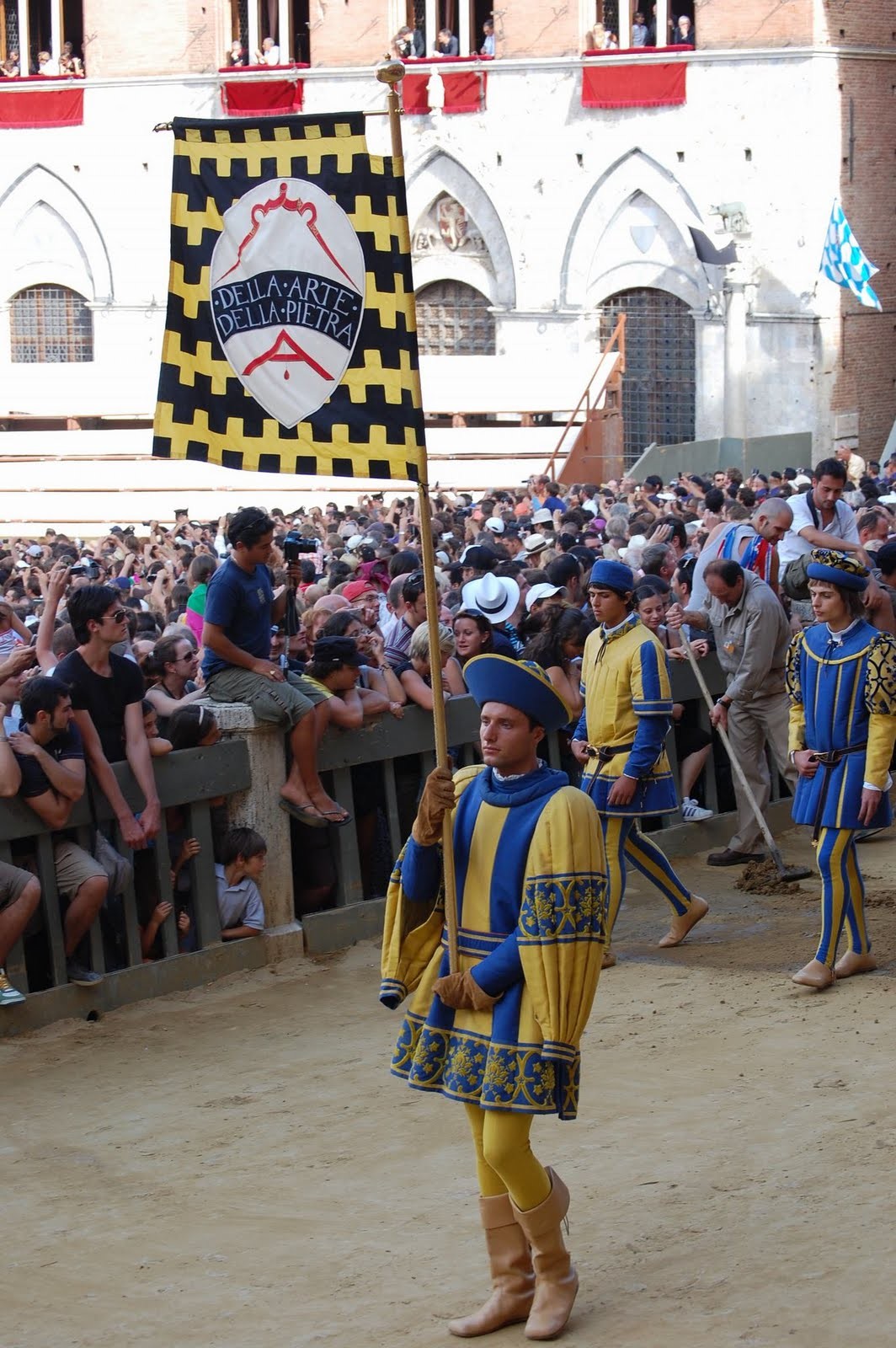


Quinto gruppo
In the middle runs the Page that holds the Masgalano. He is accompanied left and right by armed soldiers. The name is a derivation of the Spanish mas (“more”) and gallante (“elegant”). In the past the neighborhood won a bowl; gradually it has evolved into a sculpture in silver. The Masgalano is awarded by a jury consisting of two representatives from each of the 17 neighborhoods gathered at the Amici del Palio Comitato. Each district appoints its representatives annually. Usually an ex-alfiere (flag sweeper) or ex-tamburino (drummer).
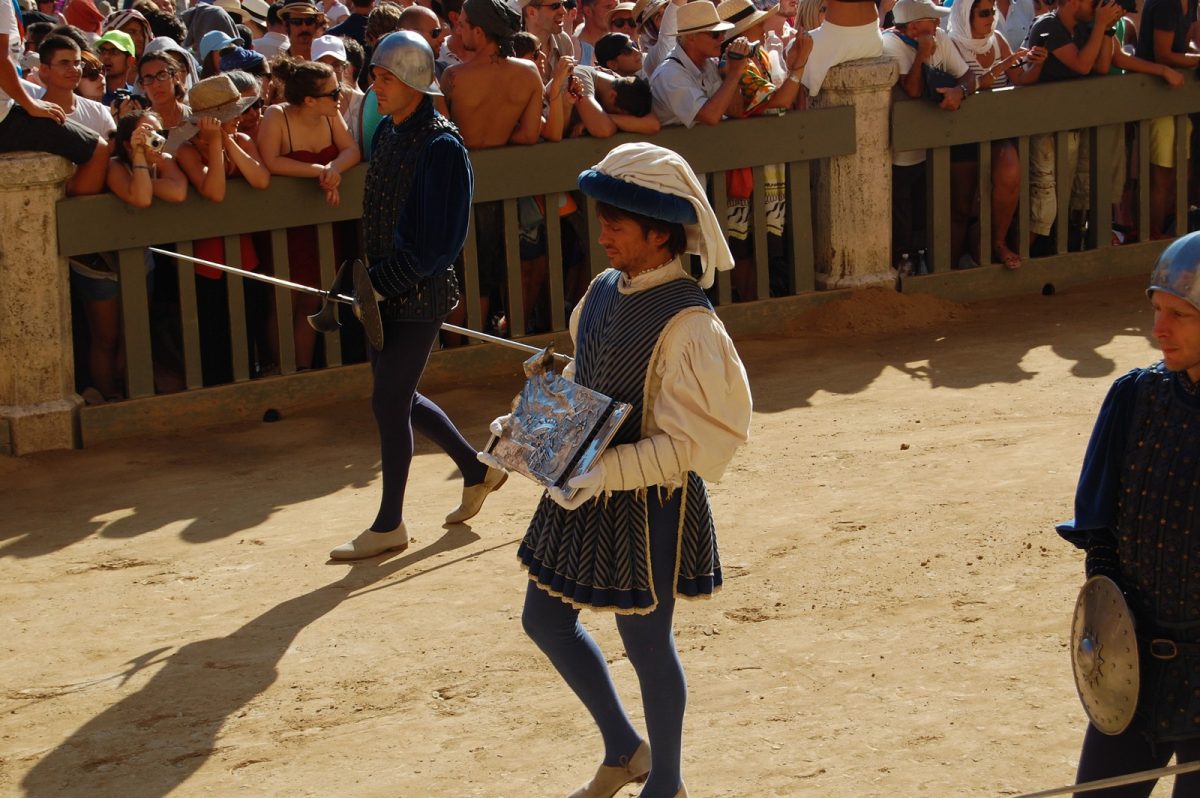
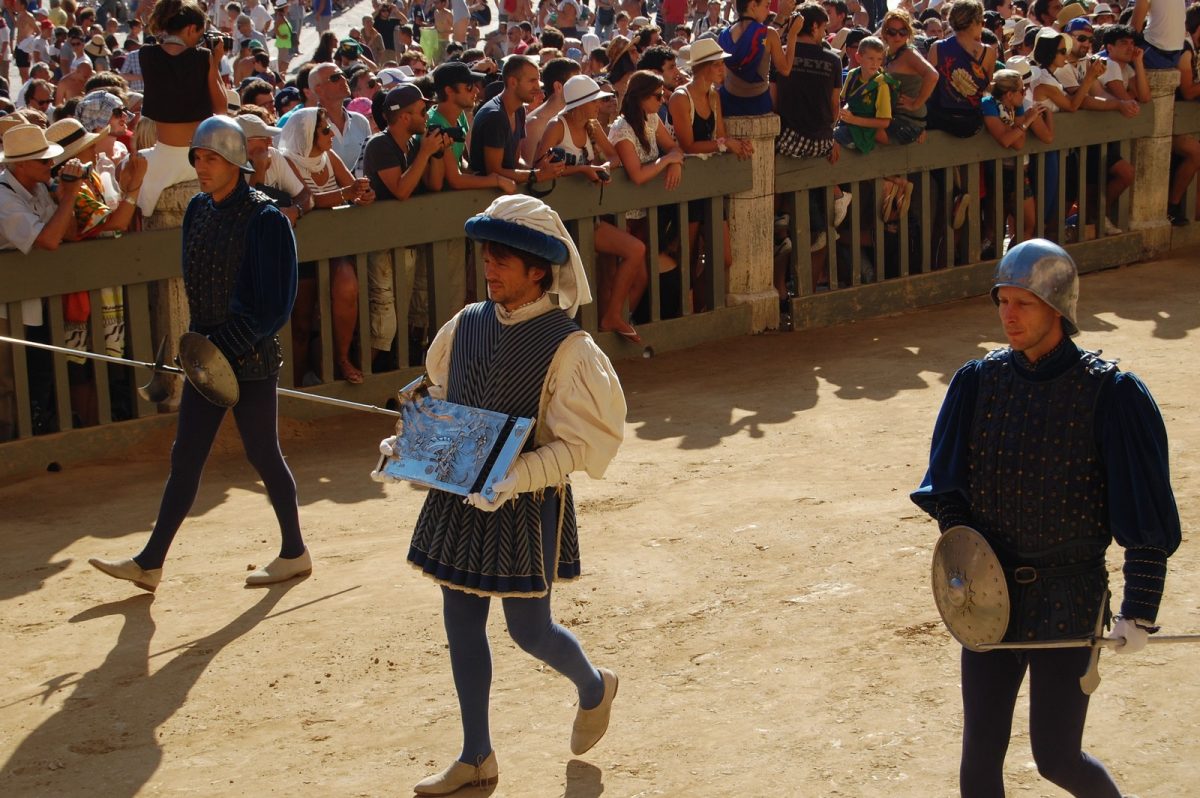
Sesto gruppo
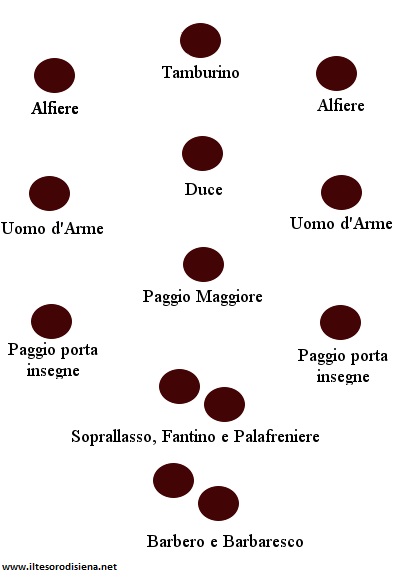
The ten contrade who participate in the race enter the Piazza del Campo in the following composition:
The two flag sweepers (alfieri) raise their flag when they enter the Piazza via the Bocca del Casato as a greeting. Then they turn an “eight” with the flag to the beat of the drum that plays “il passo della Diana”.
At various agreed points on the Piazza the tamburino plays the “stamburata” so that the “alfieri” can perform the “sbandierata”. They do this at the Palco Dei Giudici (at the start), the Circolo degli Uniti (for Fonte Gaia), at the Palco dei Priori (Chiasso Largo) and at the chapel in front of the town hall.
The neighborhoods are expected to perform the following movements:
- Presentazione della bandiera: starting is done by moving the flag at normal speed from the right hand to the left and over the head.
- Velata: the flag moves 50 cm off the ground while the alfieri is rotating
- Passaggio di vita: making a full turn around the flag wiper
- Ancalena: the flag is turned into an “eight” on the back, the alfiere also makes an 8 with his hips.
- Rosa: turn the flag with both hands at the height of the ears
- Cartoccio: turning the flag around the pole and then throwing it up
- Alzata: launching the flag that falls straight down due to the weight in the handle
- Ripresa: catch the flag again and lift it up (greeting)
The “Duce” wears a large armor and is the commander of the military company of the district. He is flanked by 2 armed soldiers.
The “Paggio Maggiore” carries the large flag with the emblem of the neighborhood. It is flanked by two pages that carry flags of the military company.
After that the fantino comes on a showpiece and of course also the racehorse with stable master (barbaresco)
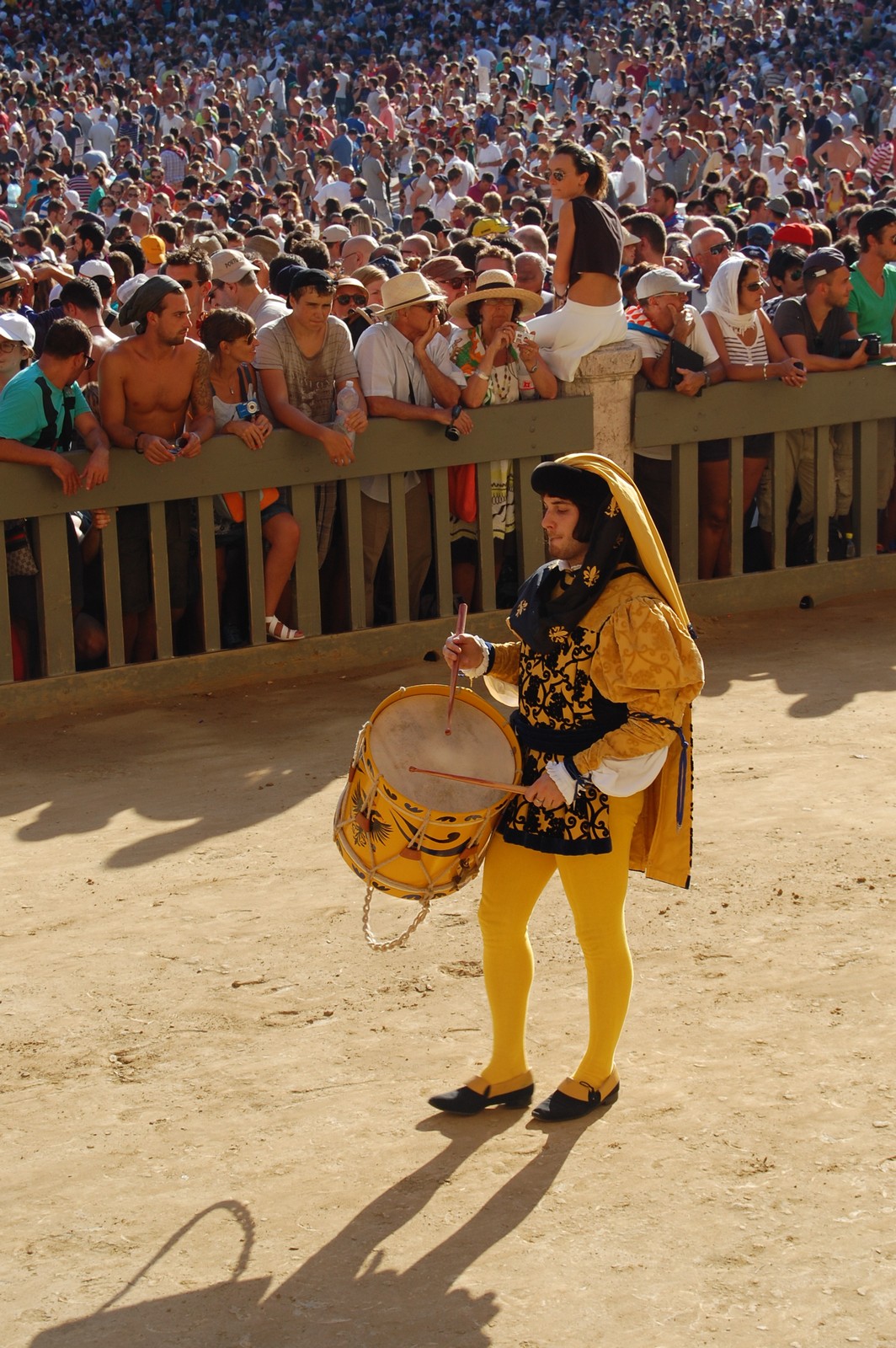
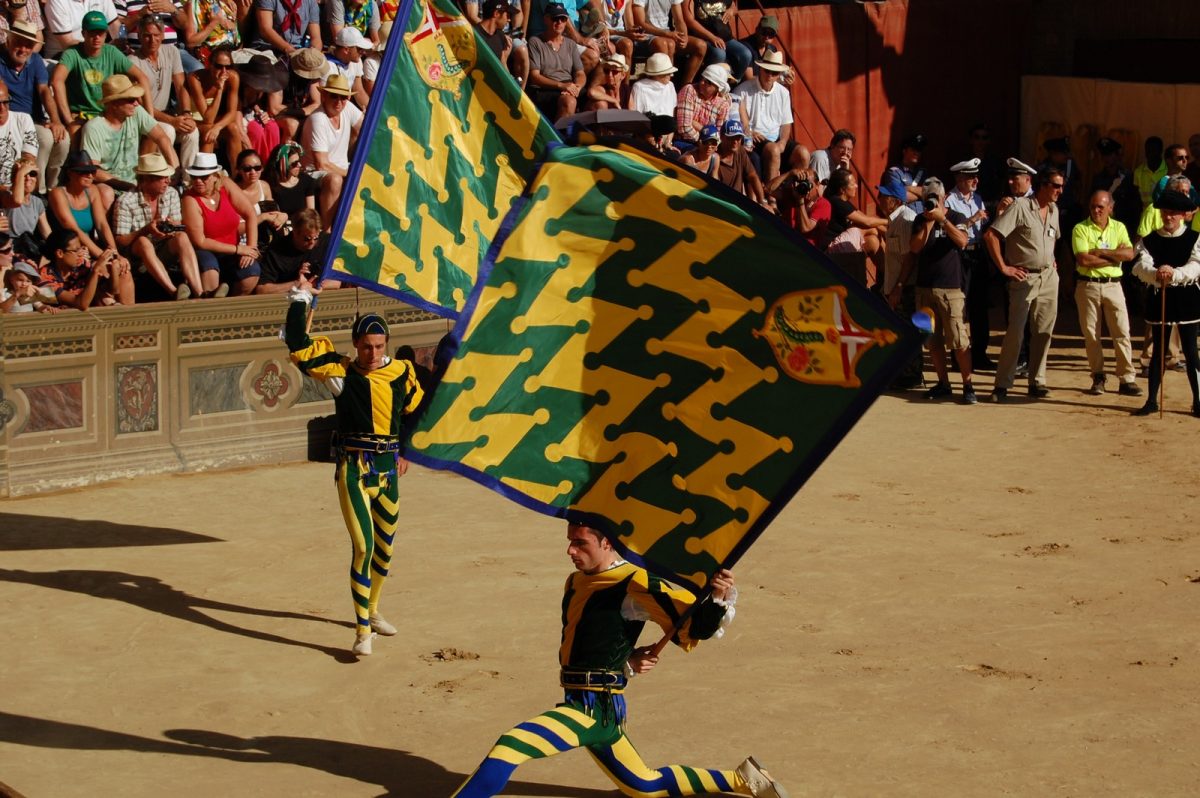
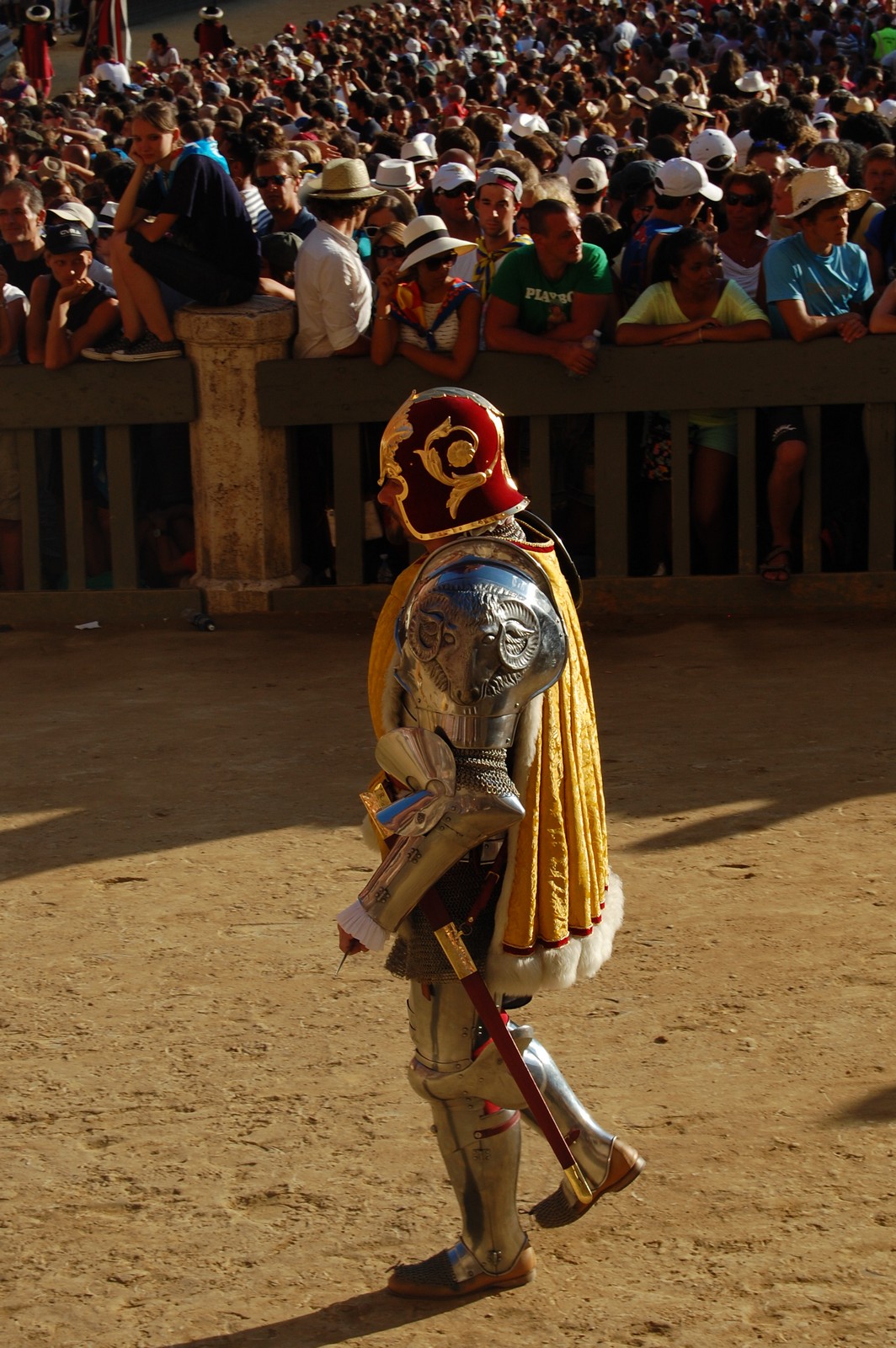
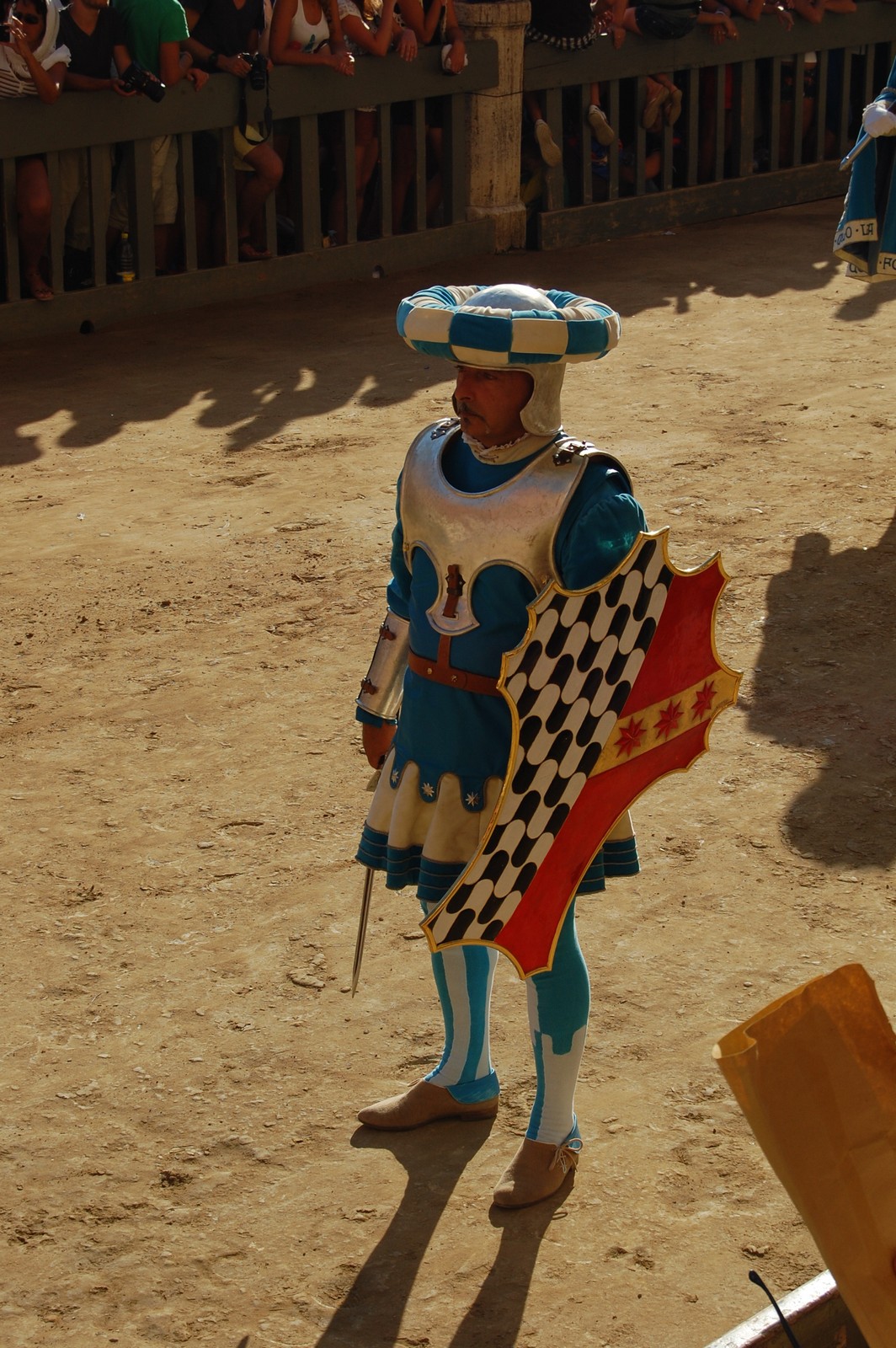
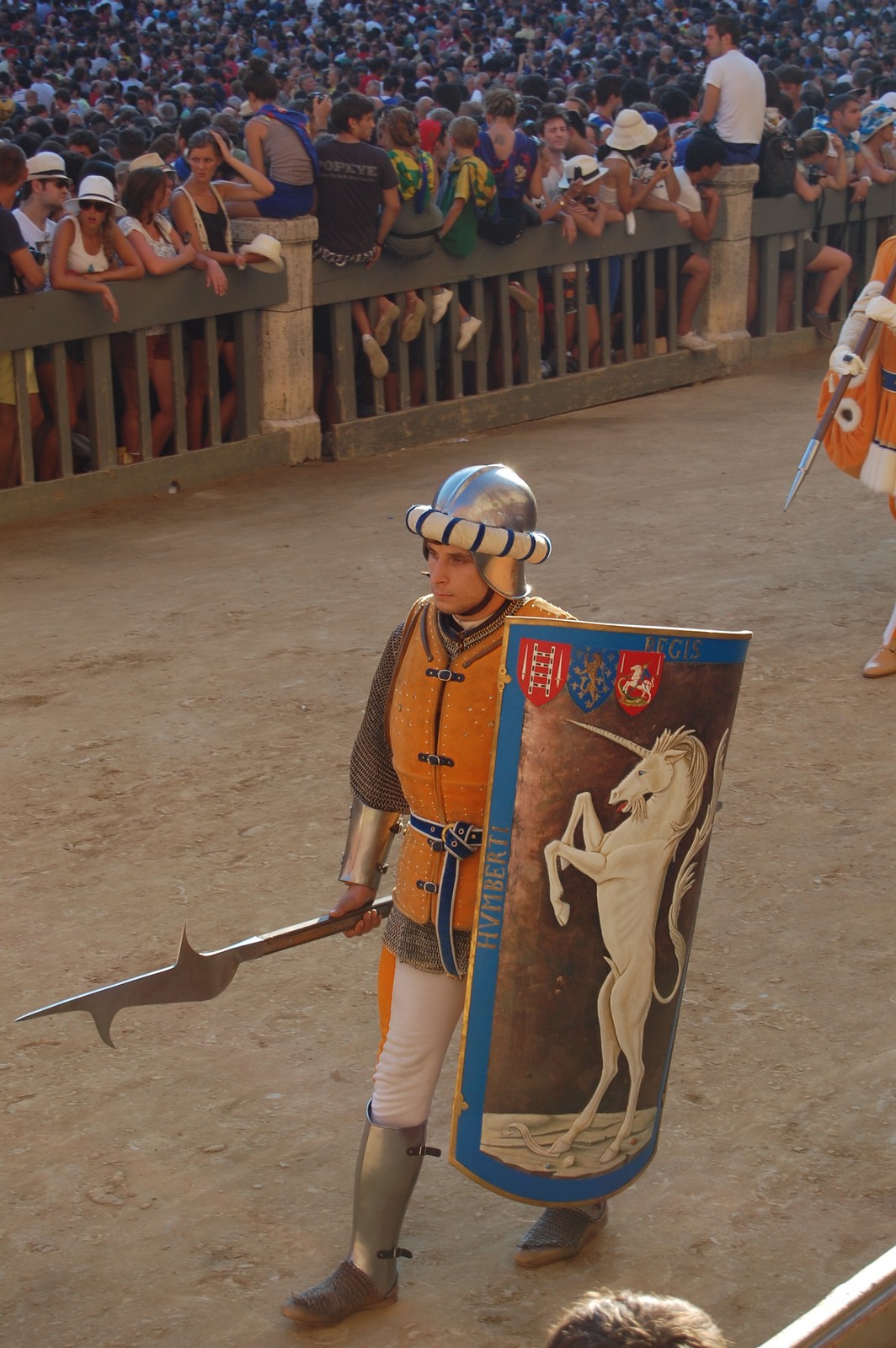
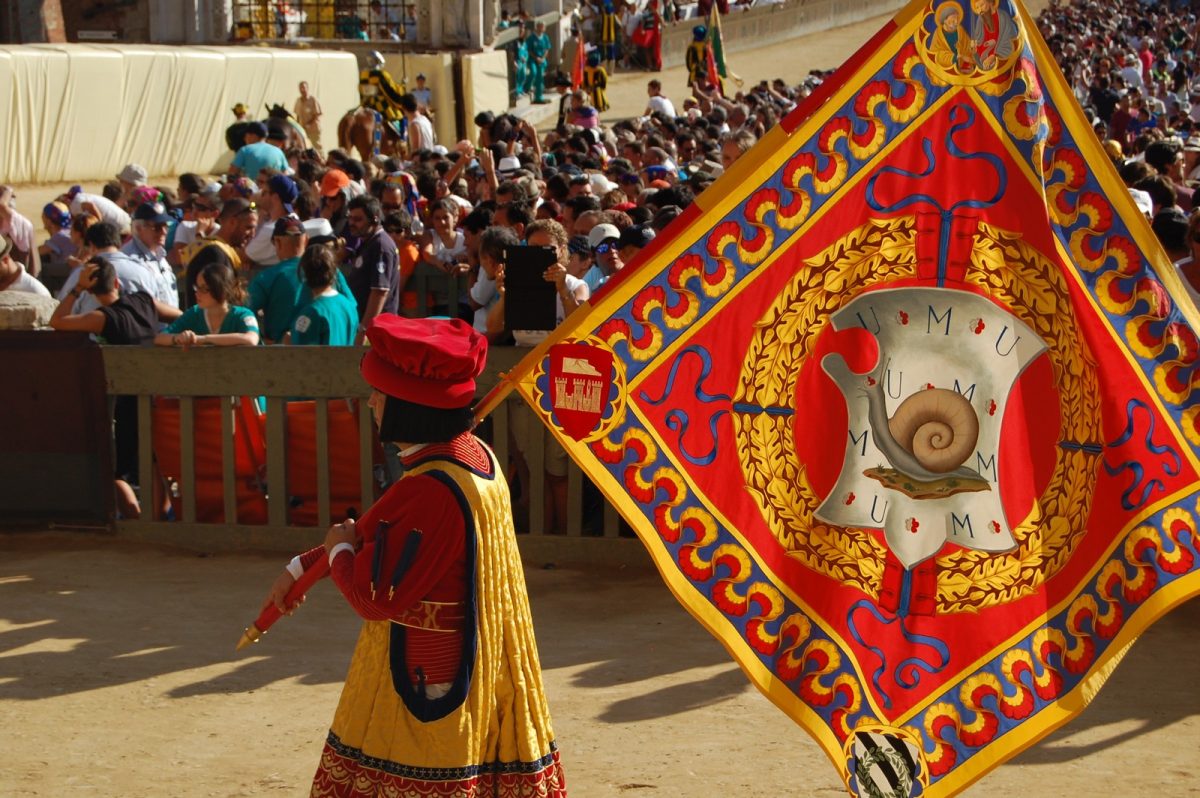
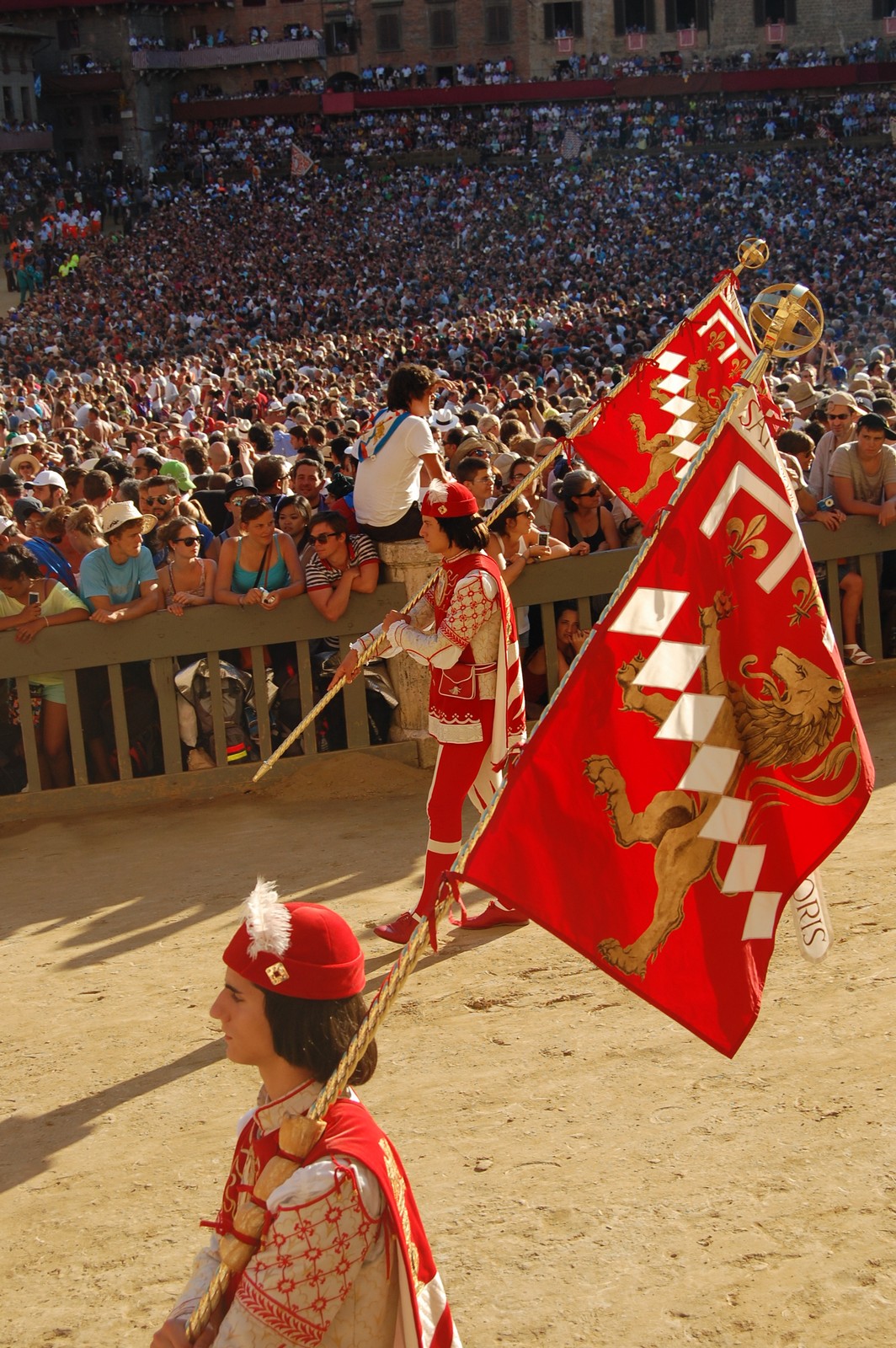
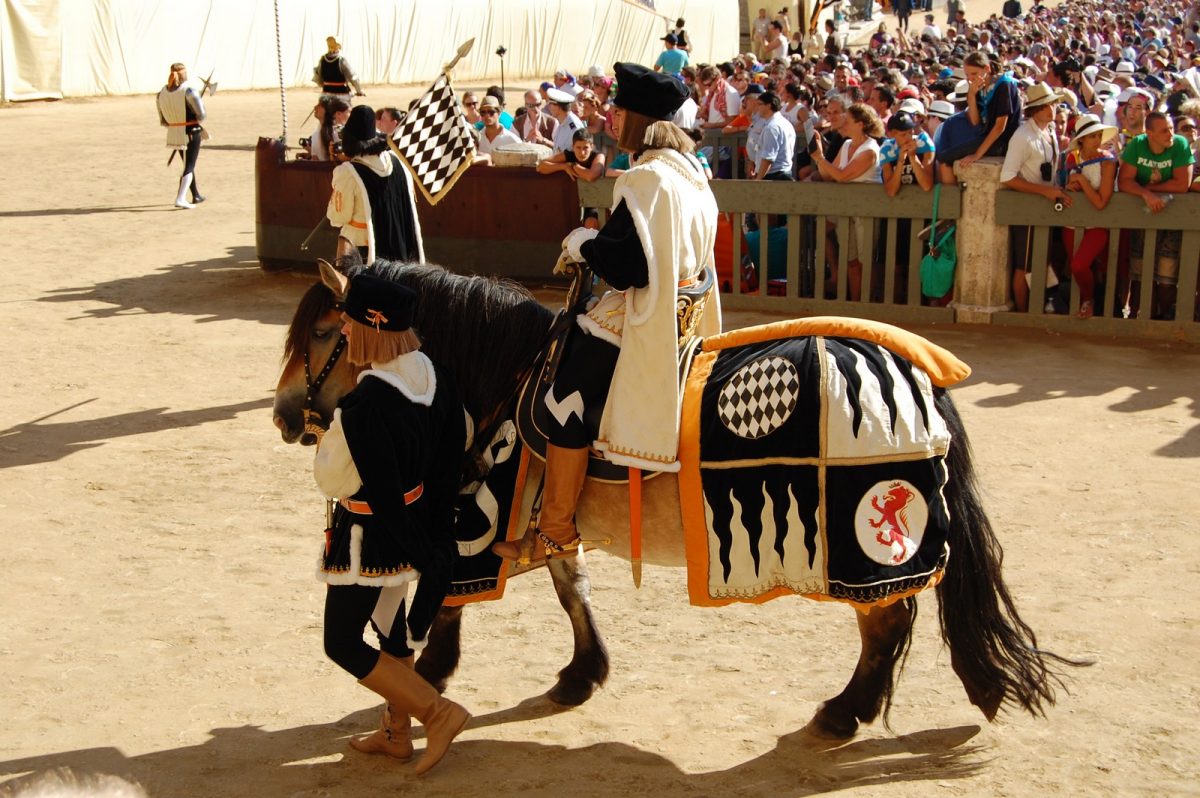
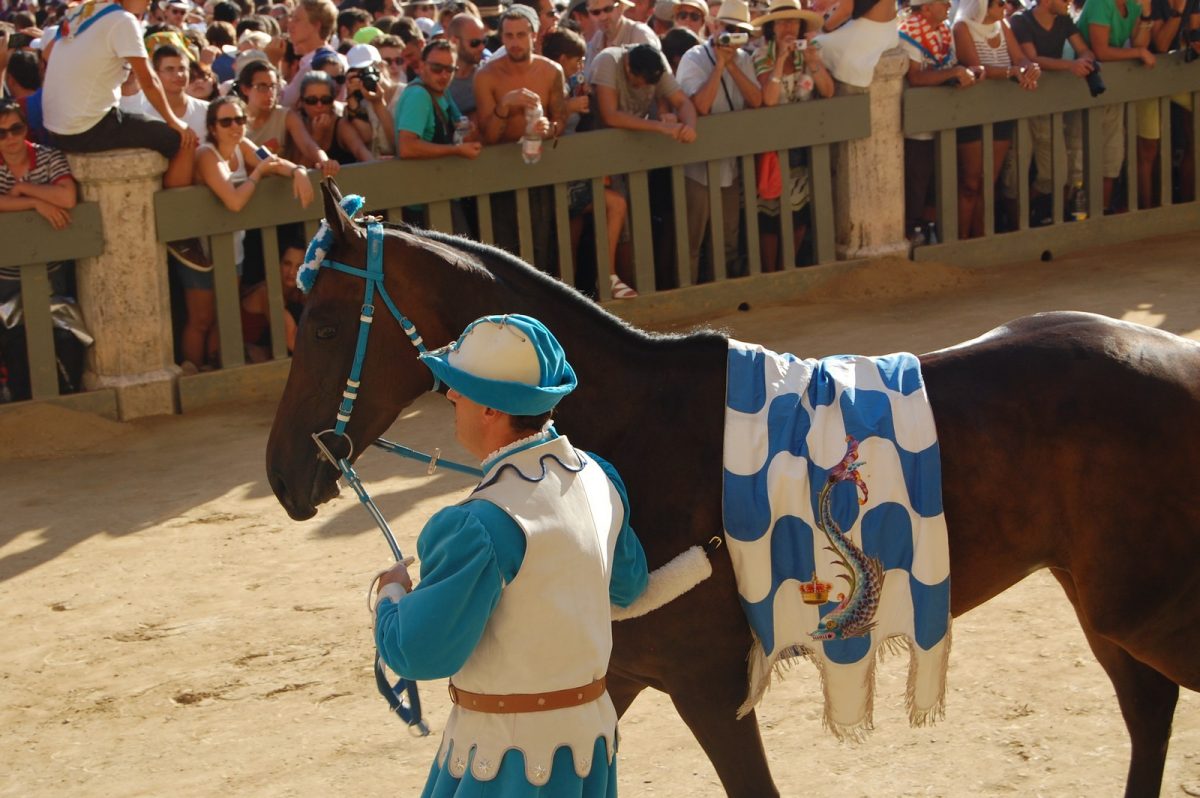
Settimo gruppo
Dodici Paggi del Comune recanti festoni di alloro
Two rows of six pages that wear a laurel wreath to make the distinction between the 10 participating contrade and the seven that are not running.
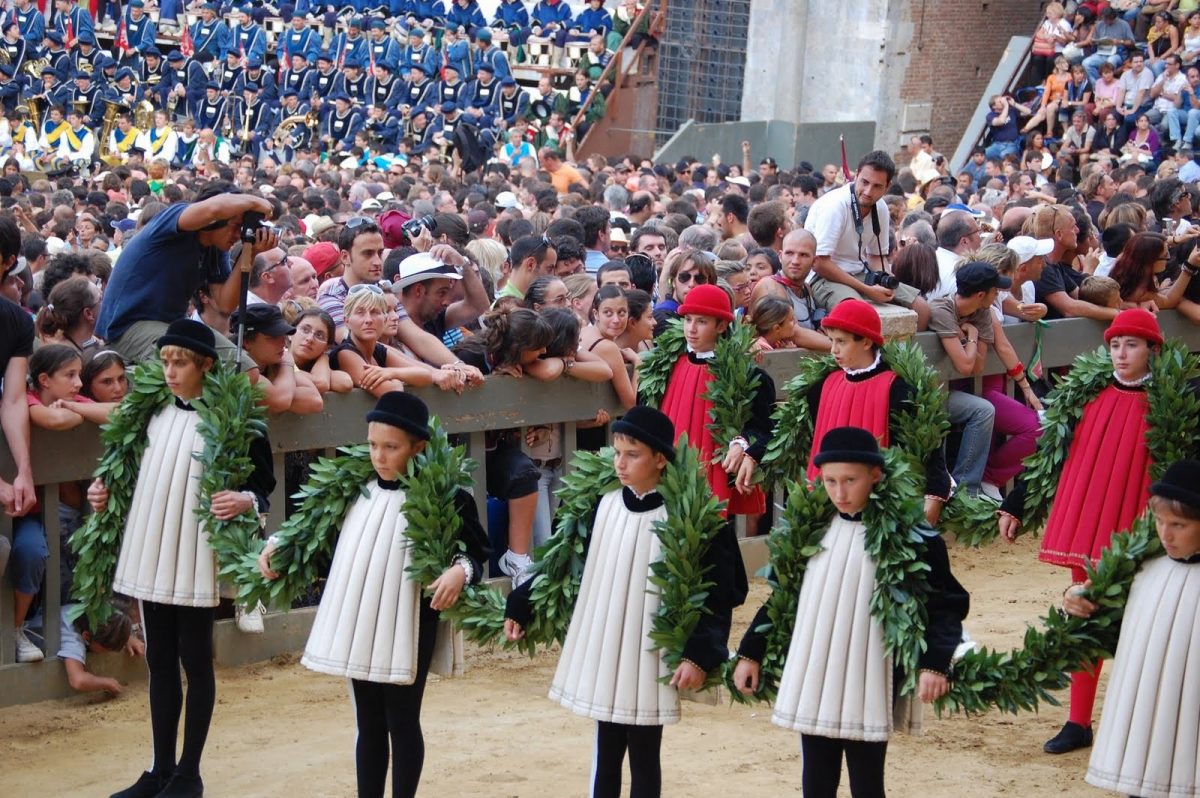
Ottavo gruppo
The seven neighborhoods that do not participate enter the Piazza in the same composition. Only the fantino and the horse are not included.
Nono gruppo
Sei cavalieri, con palafreniere, rappresentanti le Contrade non più esistenti
Six horsemen with ‘bridegroom’ fitted with a large spear and a helmet with their sights down represent the six neighborhoods that no longer exist since the end of the seventeenth century (Contrade Soppresse). Their territory was included in the current contrade: Gallo, Leone, Orso, Quercia, Spadaforte and Vipera.
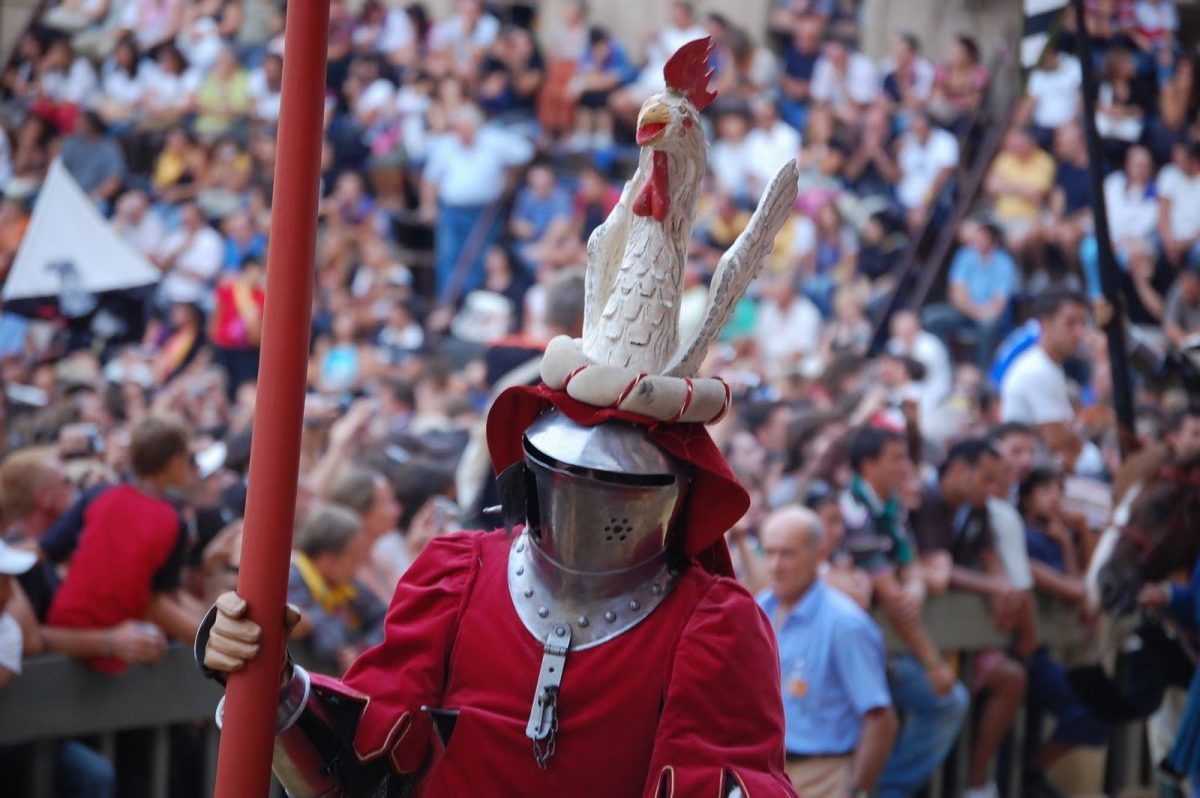
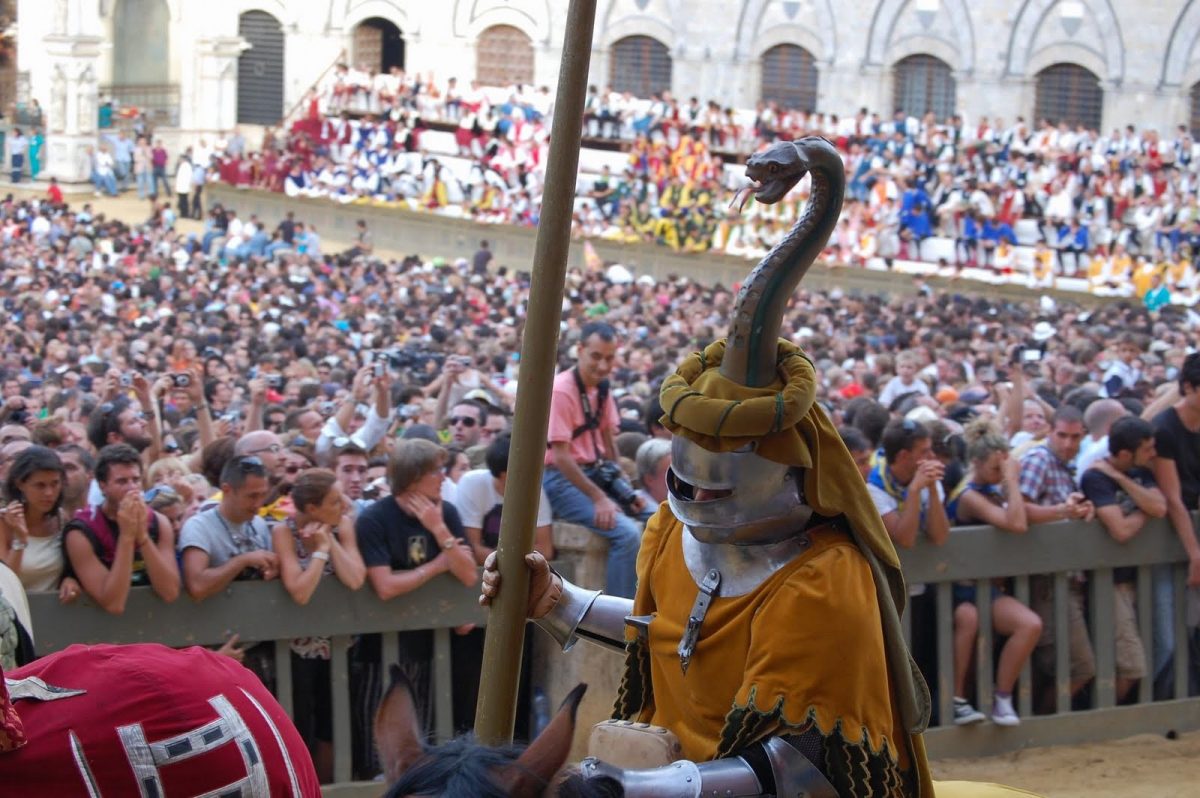
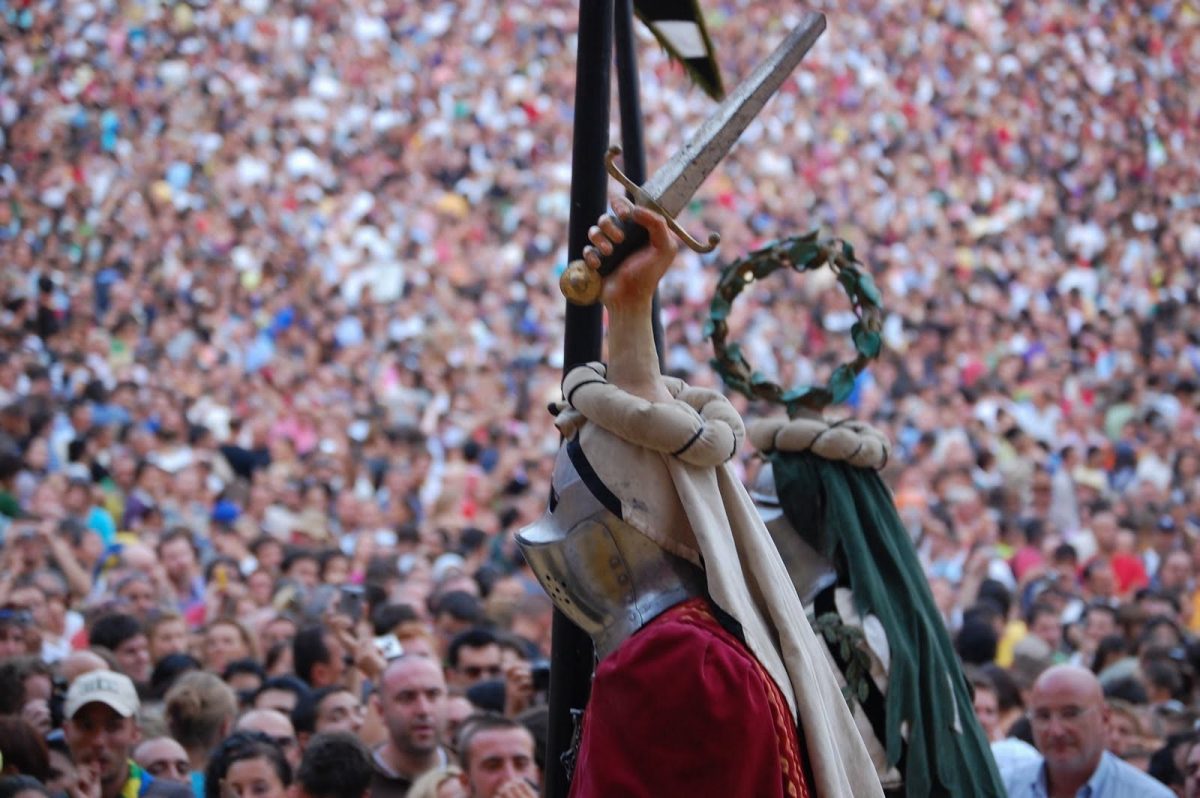
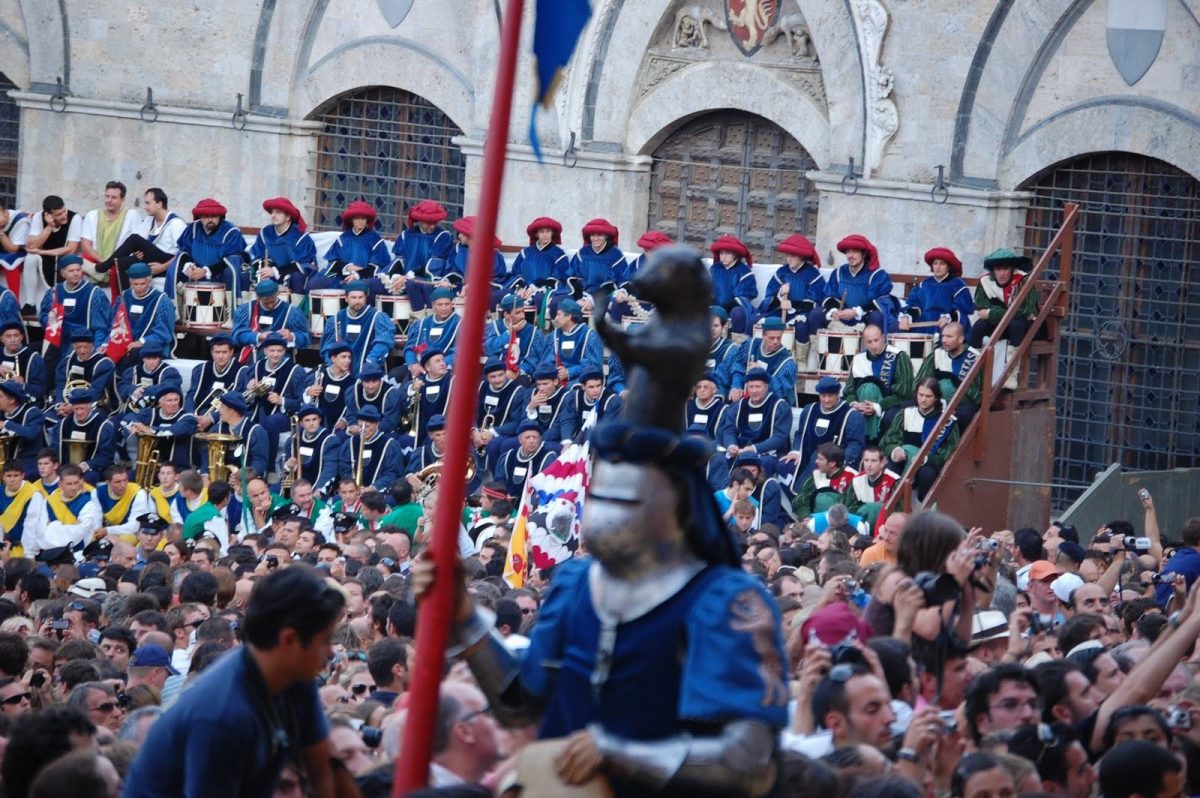
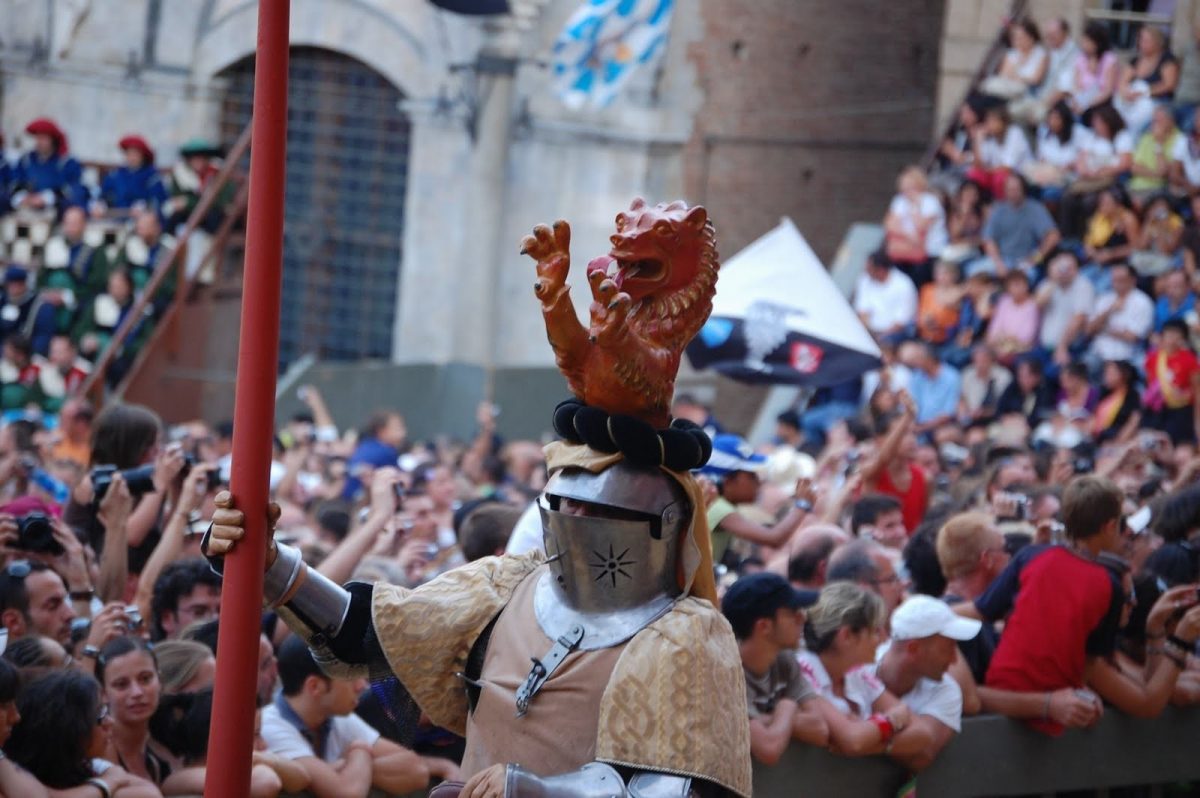
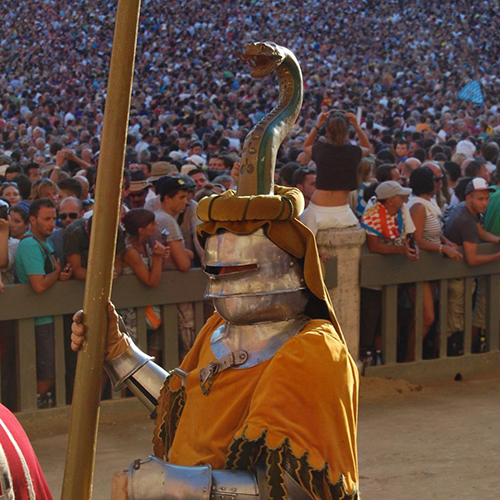
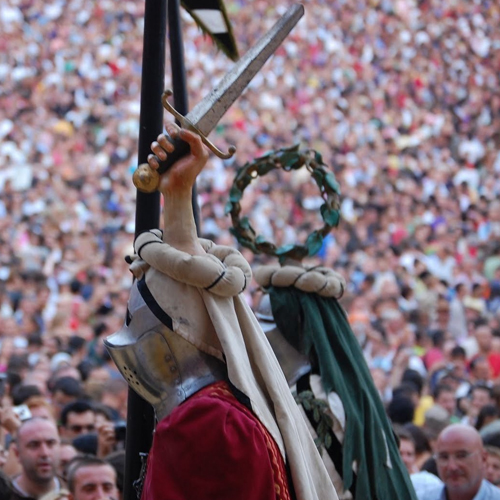

Decimo gruppo
The shooters in this group were responsible for the safety of the Palazzo Pubblico at the time of the Republic. The group consists of a standard-bearer, two drummers and a captain with a sword followed by 4 knights with a shield, 4 archers with a large bow and 16 with a small bow.
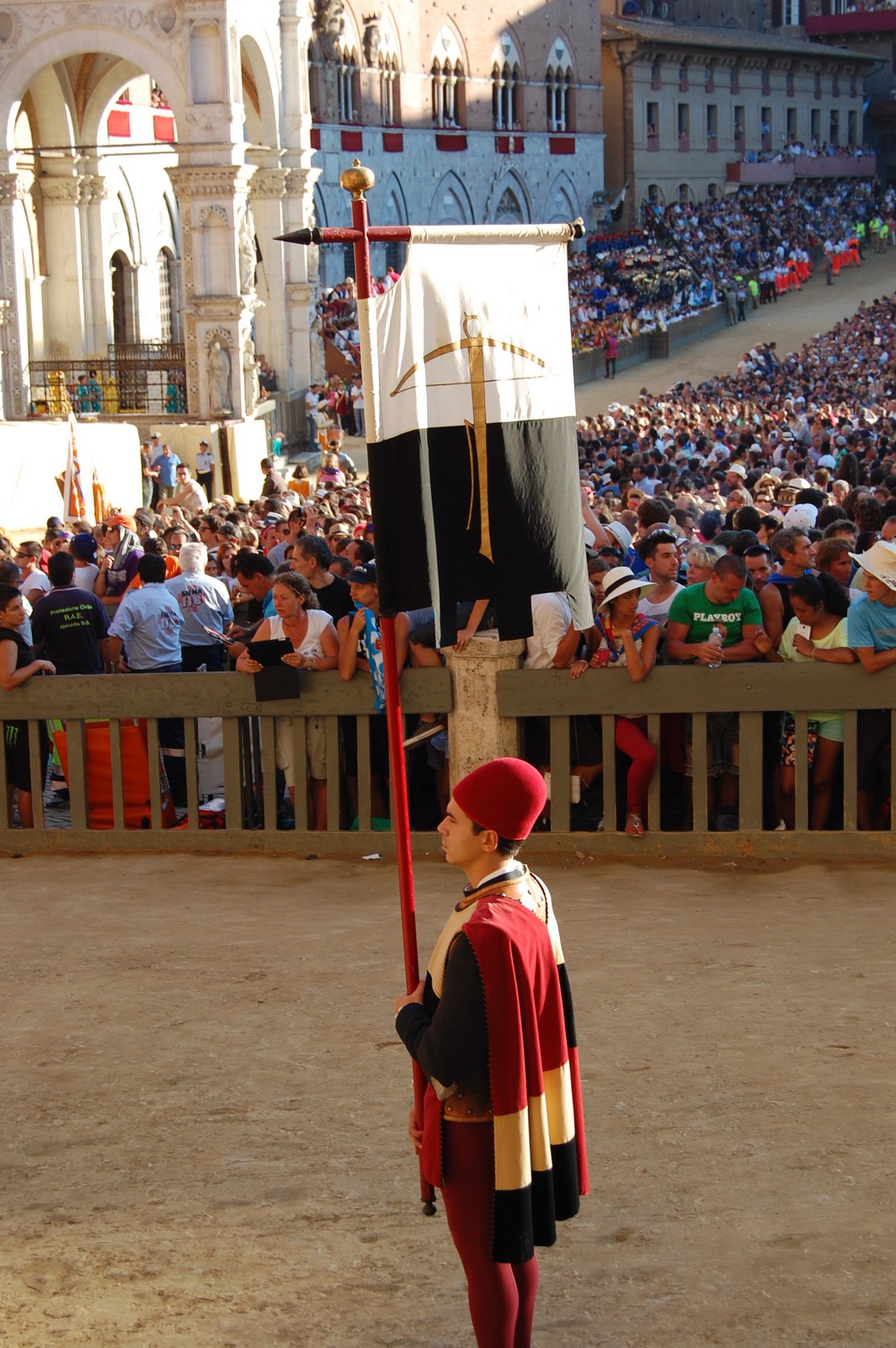
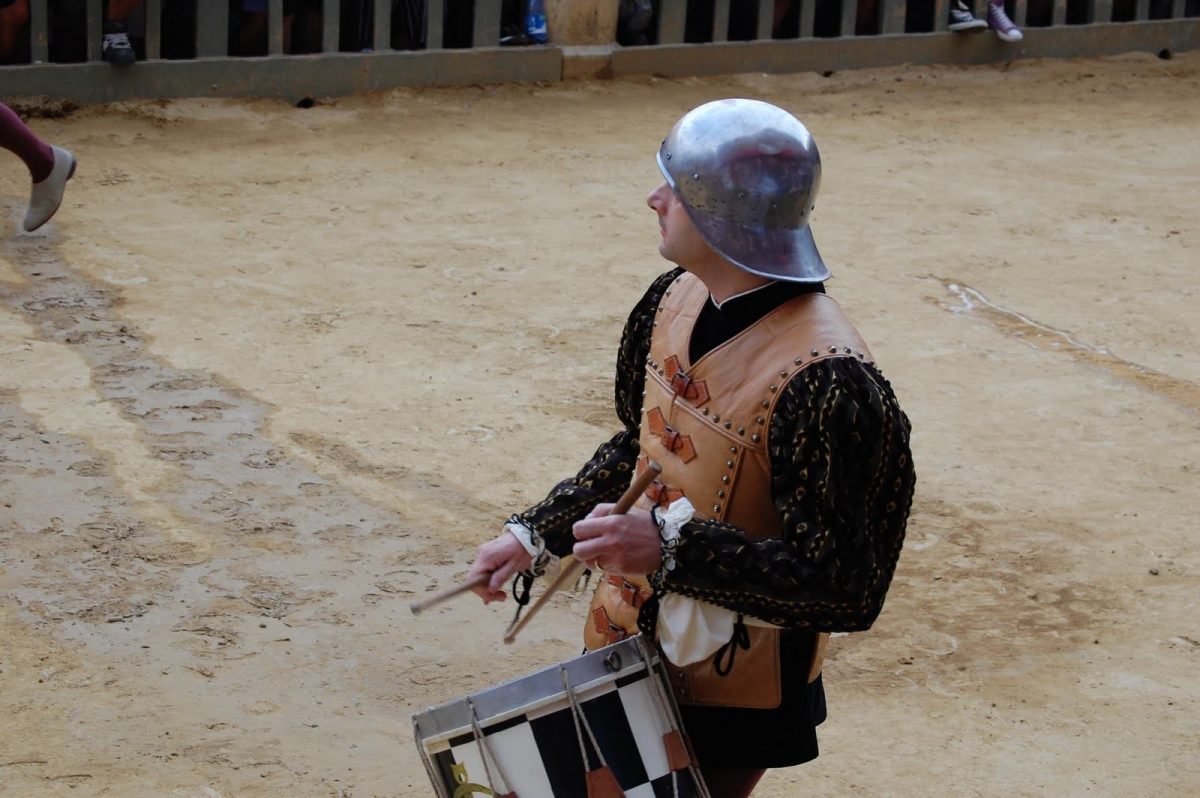
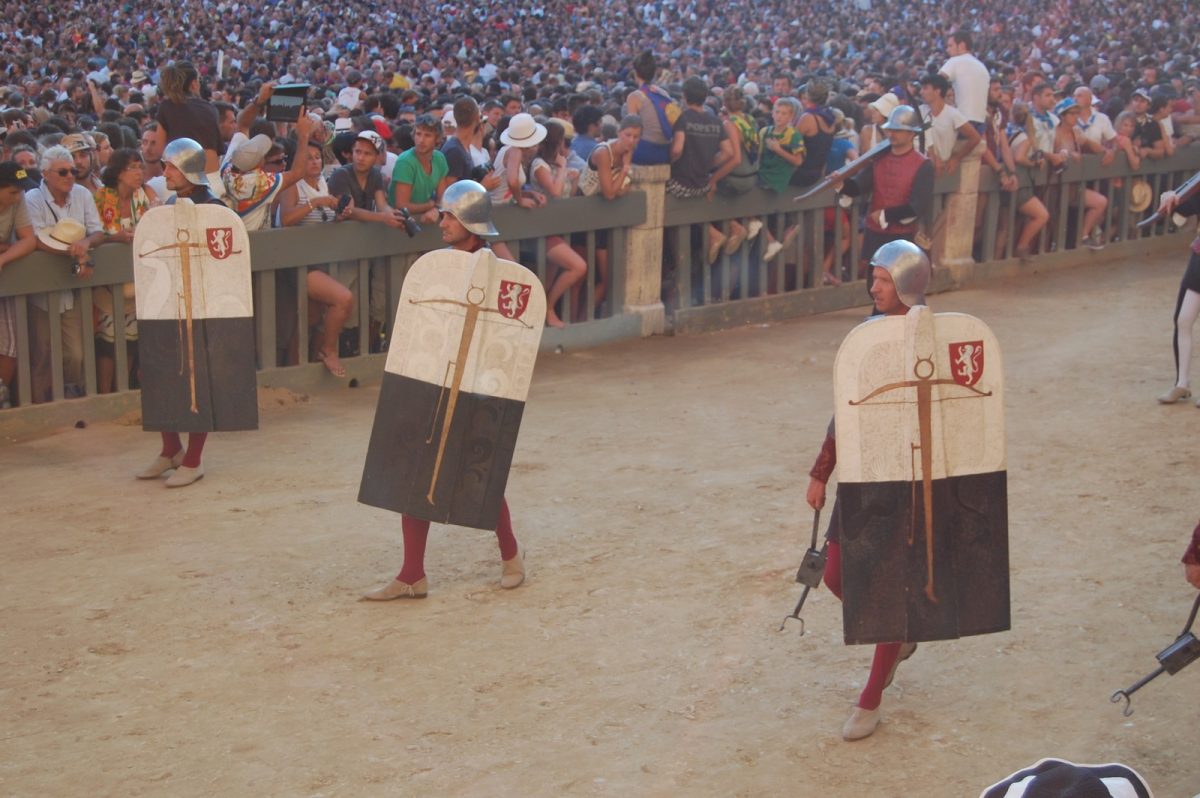
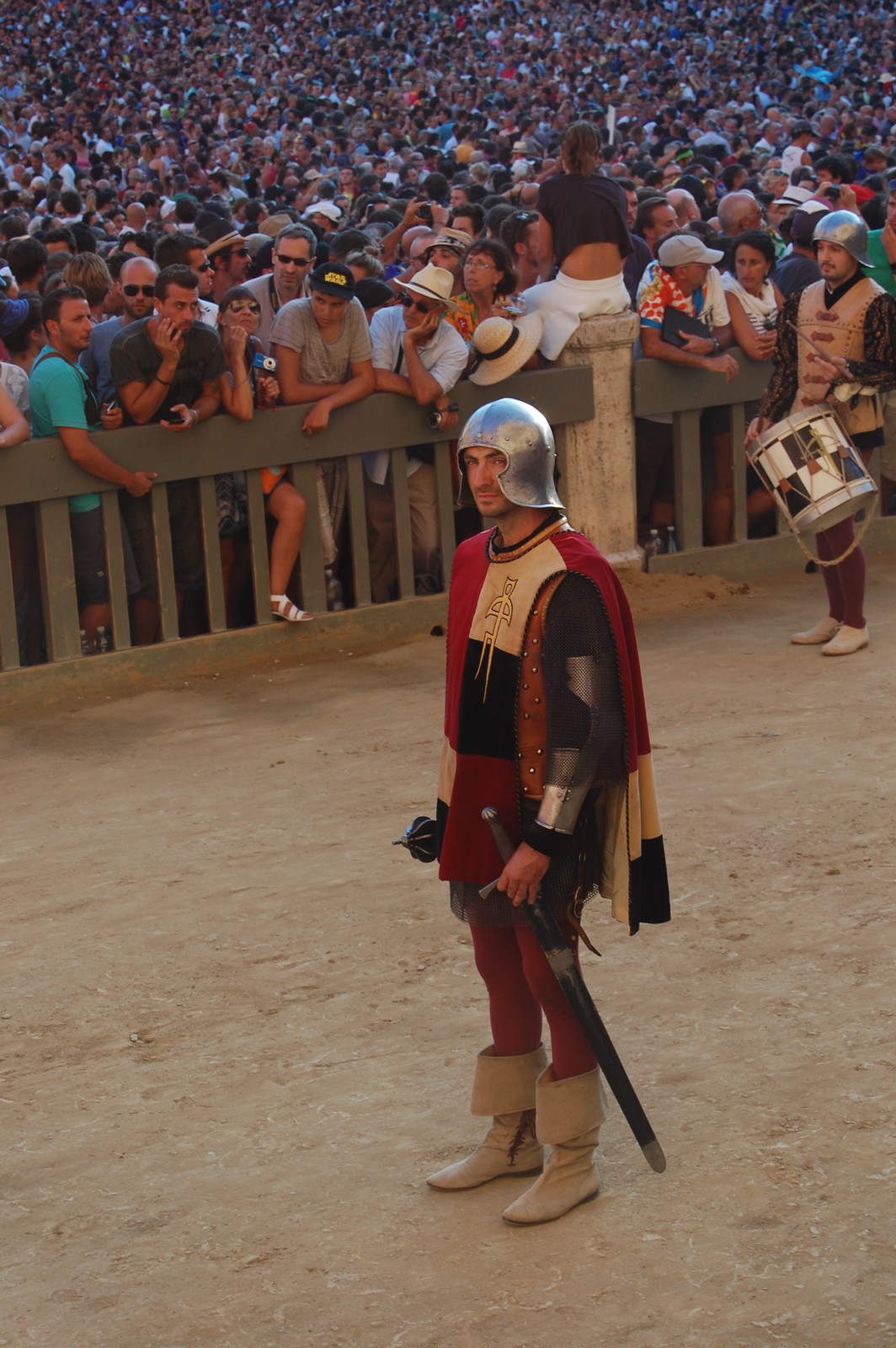
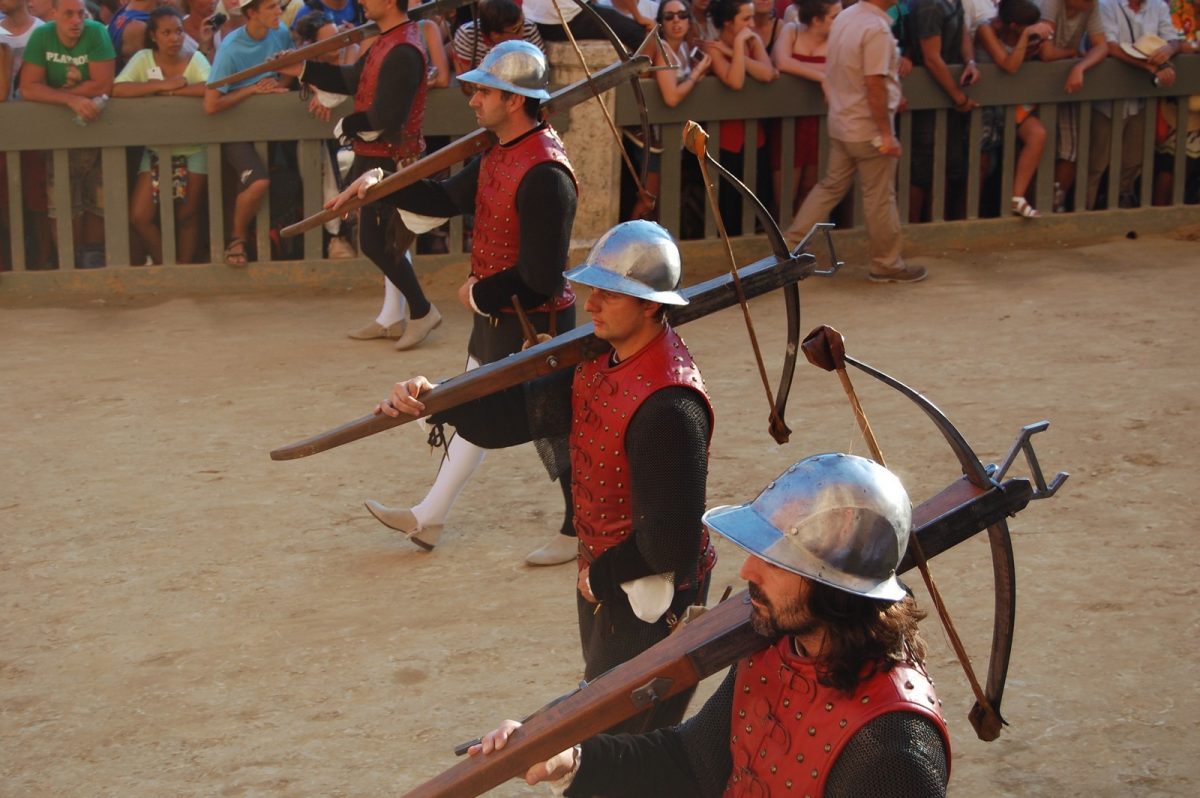
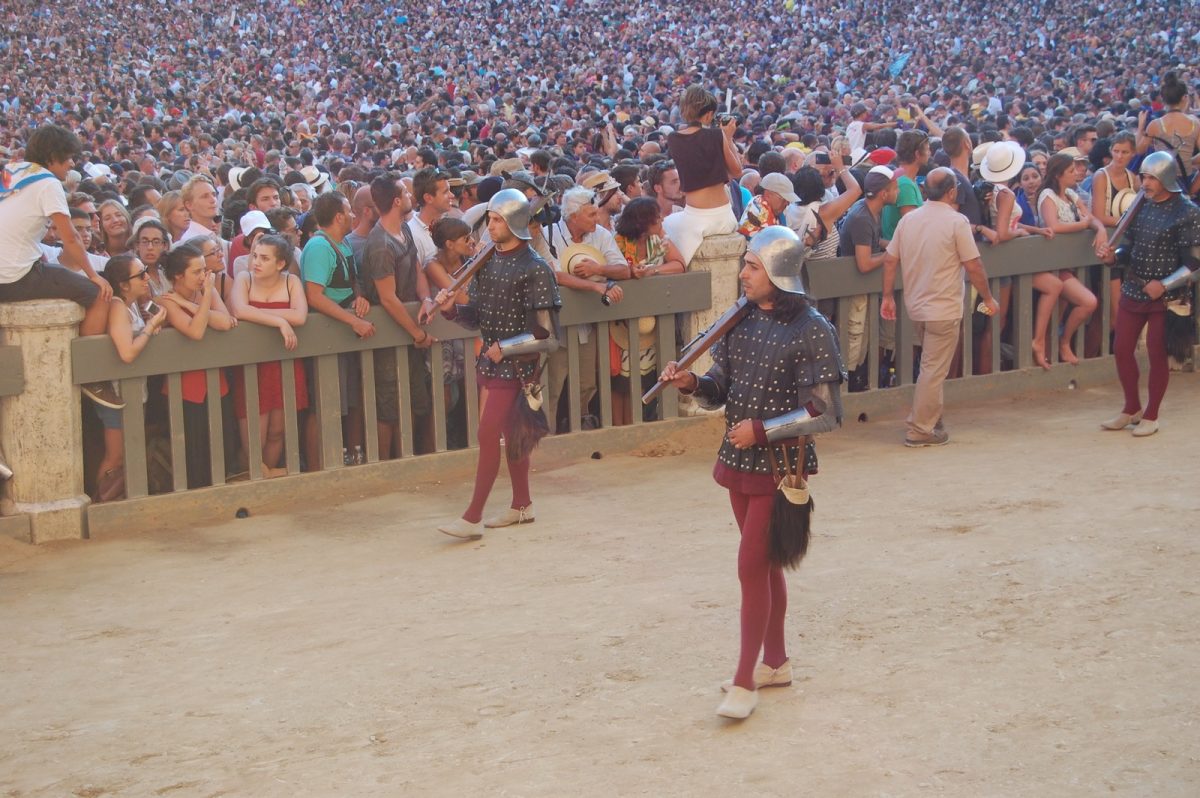
Undicesimo gruppo
The Capitano di Giustizia is on horseback with ‘groom’ and is followed by 4 soldiers, armed with a lance. He represents the highest authority in the event of a military conflict.
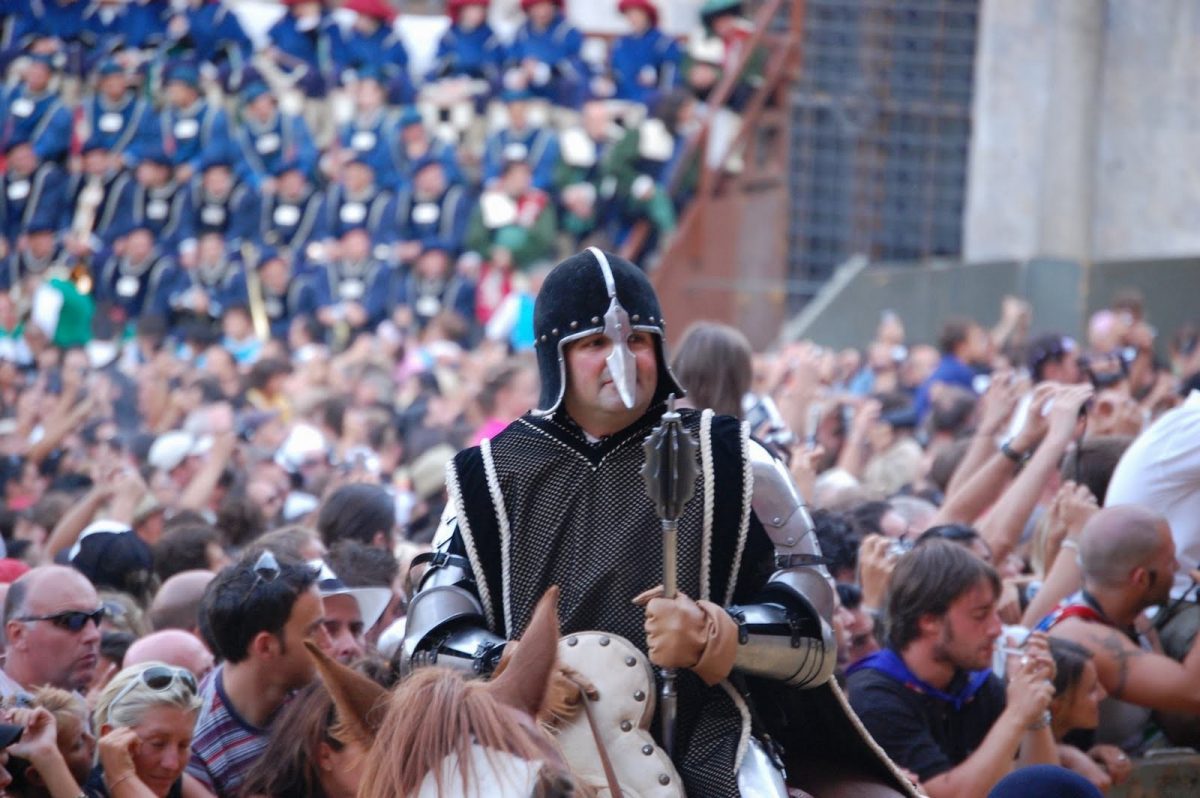
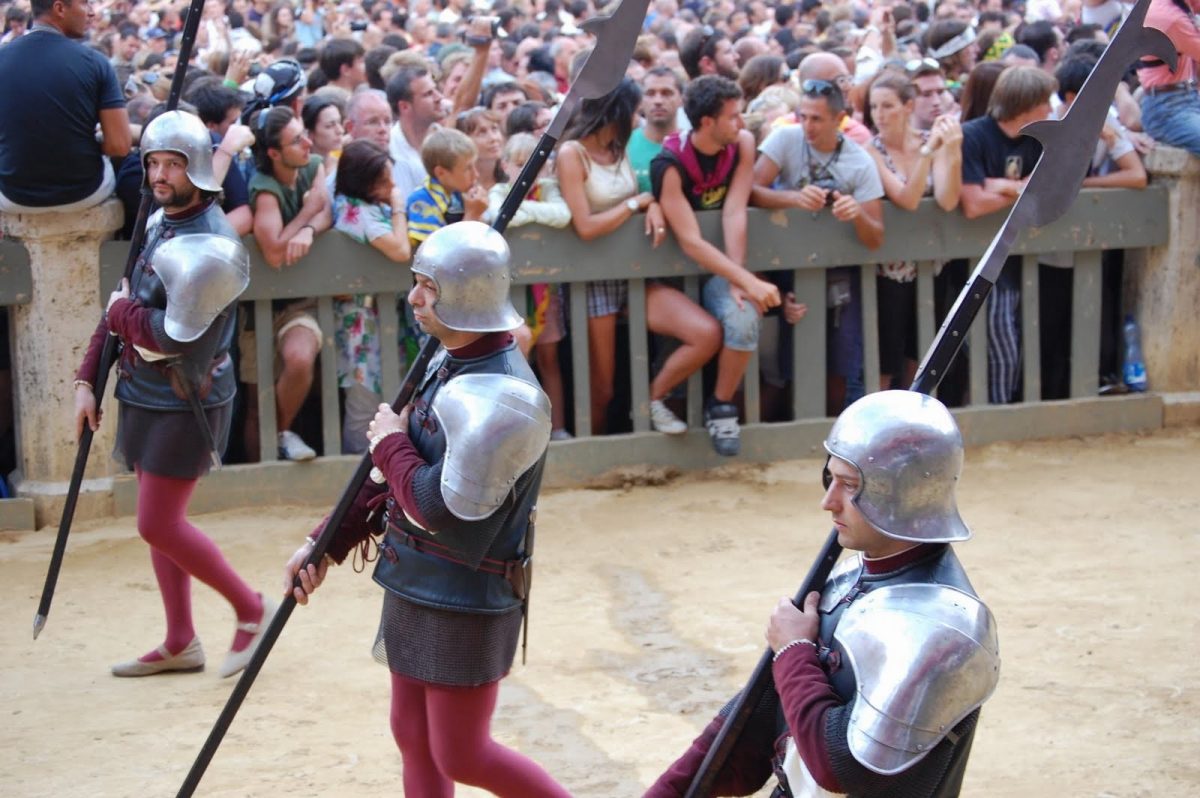
Dodicesimo gruppo
Carroccio: Triumphal cart pulled by 4 large white Chianina oxen, with four cattle drivers. On top of the cart we find: Il Drappellone, the Balzana (flag of Siena), the four gentlemen who represent the different parts of the city (dei Gentiluomini, del Popolo, dei Nove and dei Riformatori), 6 trumpeters and a page representing the “martinella” or clock loud.
Around it there are 8 soldiers with a lance.
While the cart drives around, and sometimes even stops, you see fazzoletti (scarves) blowing from the neighborhoods towards Drappellone in the hope that it can bring some luck.
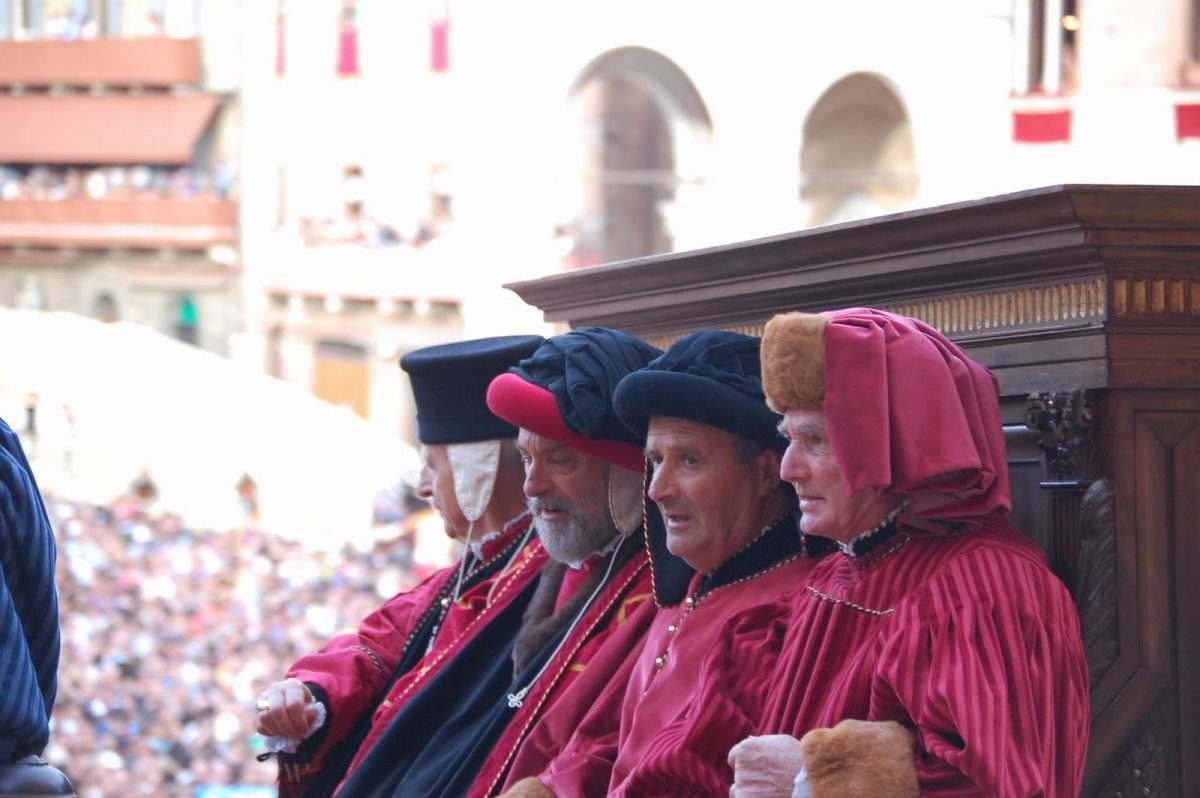
Tredicesimo gruppo
Six horsemen represent some old Sienese noble families:
- Pannocchieschi d’Elci (red cloak with golden arabesques and black imperial eagle)
- Piccolomini (white and blue cloak with cross and five crescents)
- Salimbeni (red cloak with gold and diamonds)
- Salvani (yellow and blue cloak with six stars)
- Tolomei (white and blue saddle cloth with white mane)
- Ugurgieri (blue-yellow cloak with a wheel as an emblem)
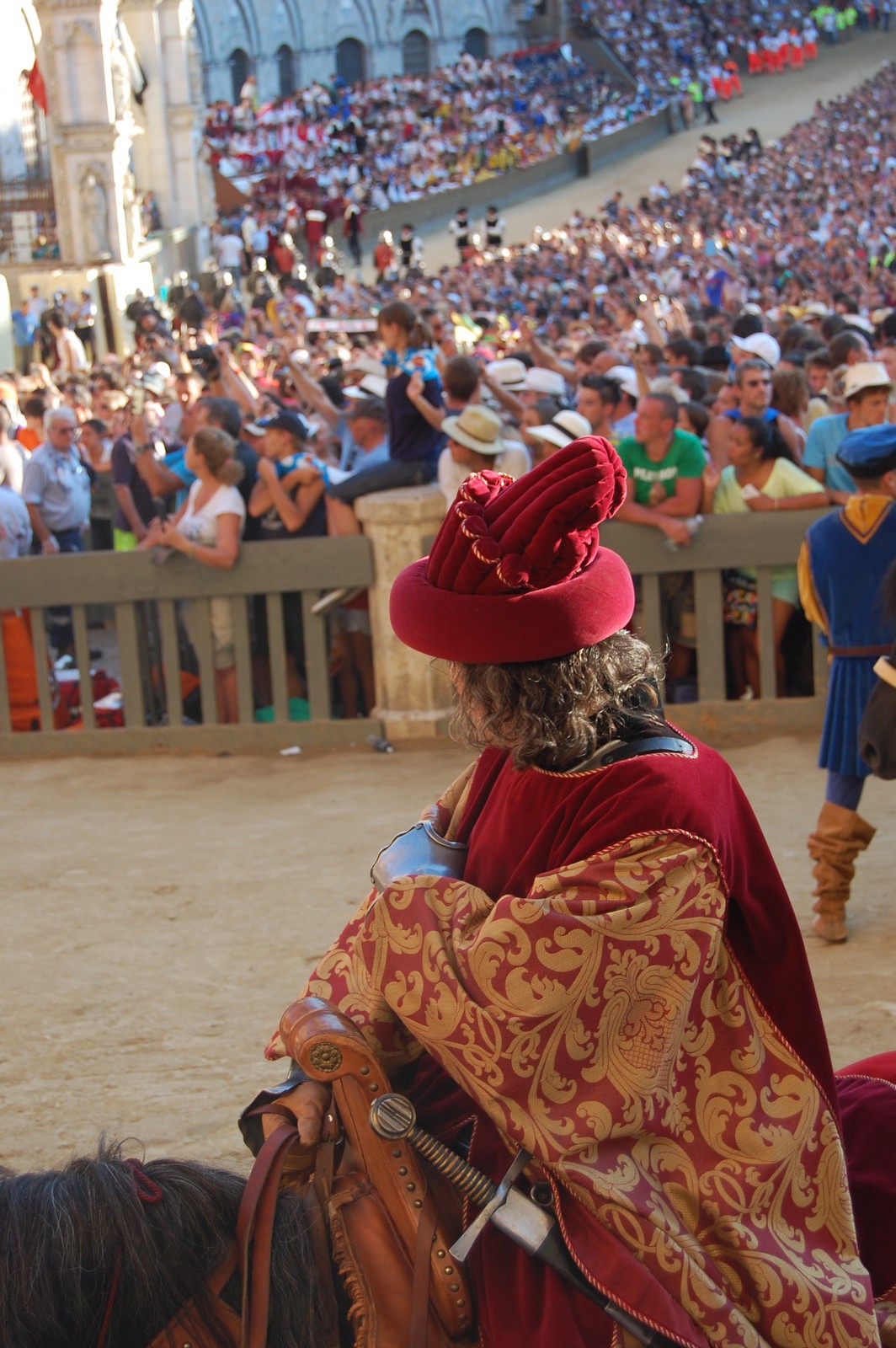
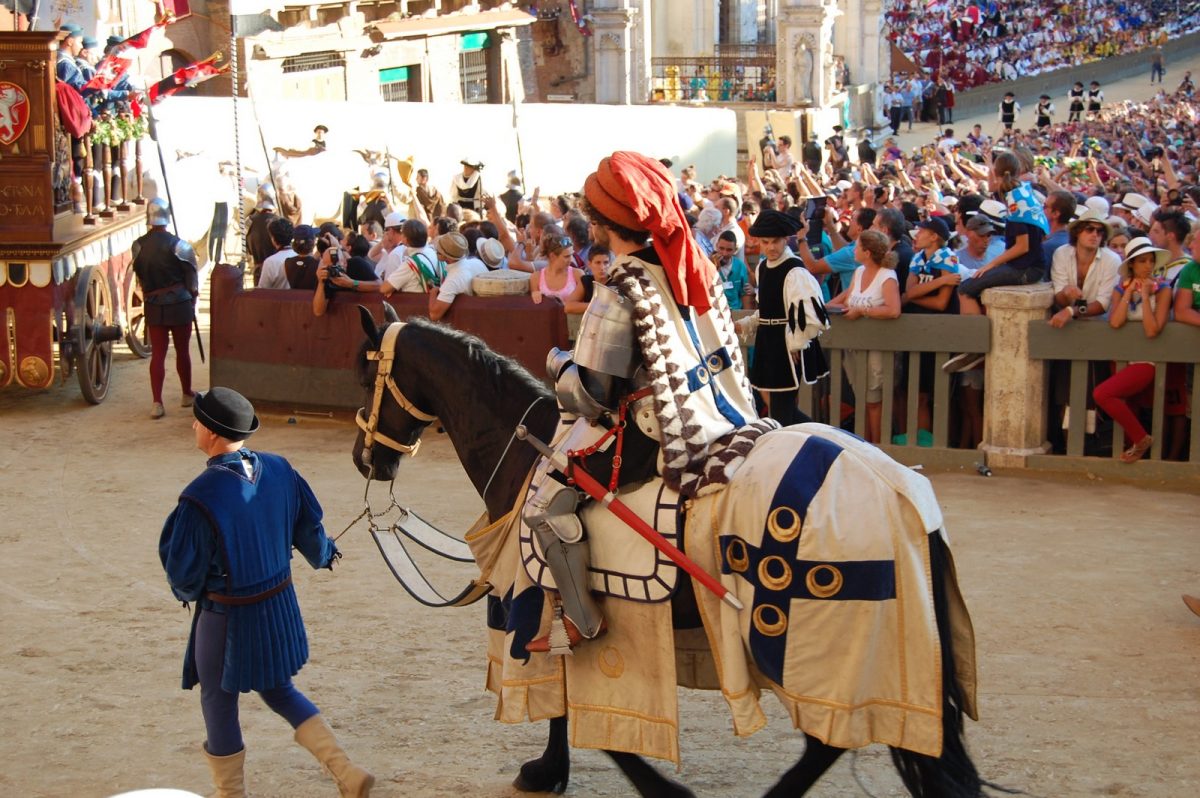
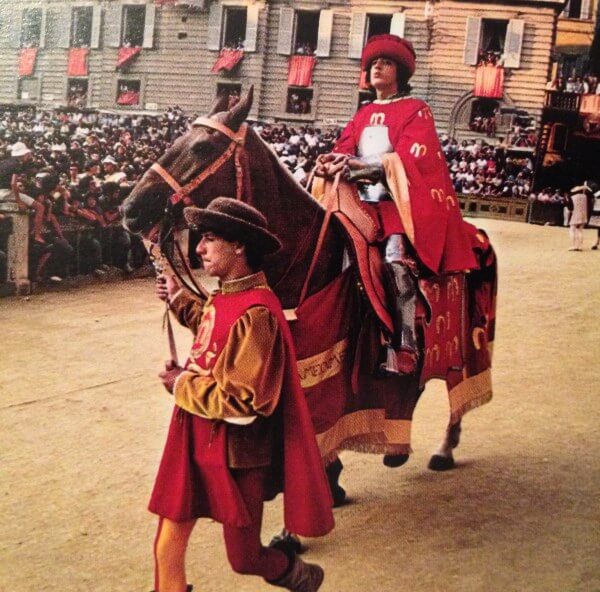
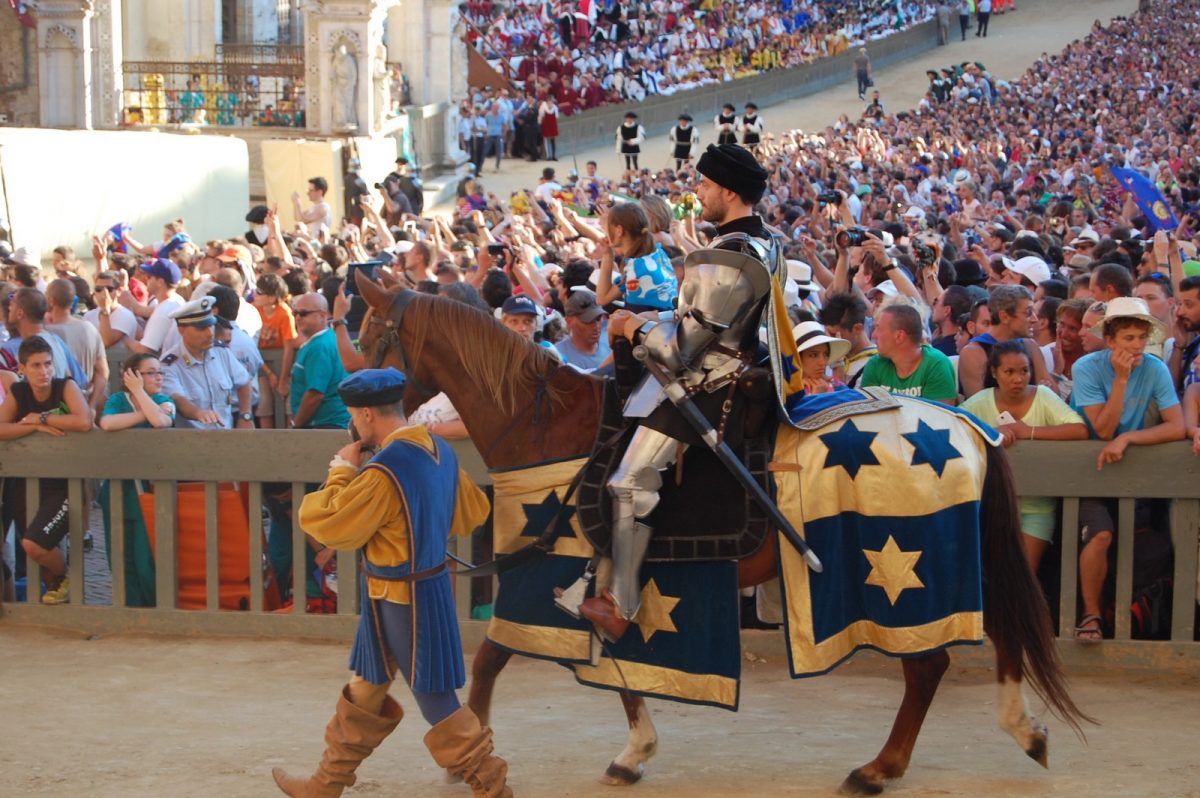

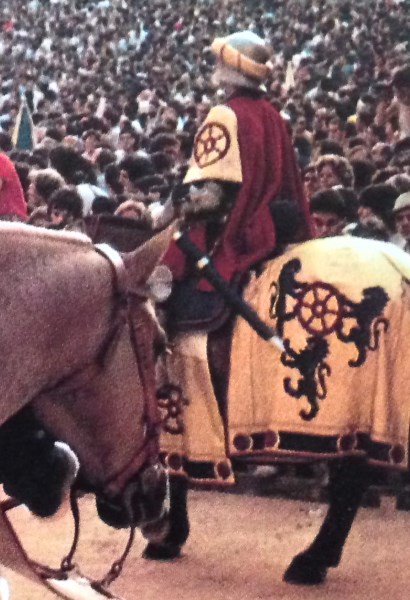
Quattordicesimo gruppo
Six pages with laurel wreath close the Corteo Storico.
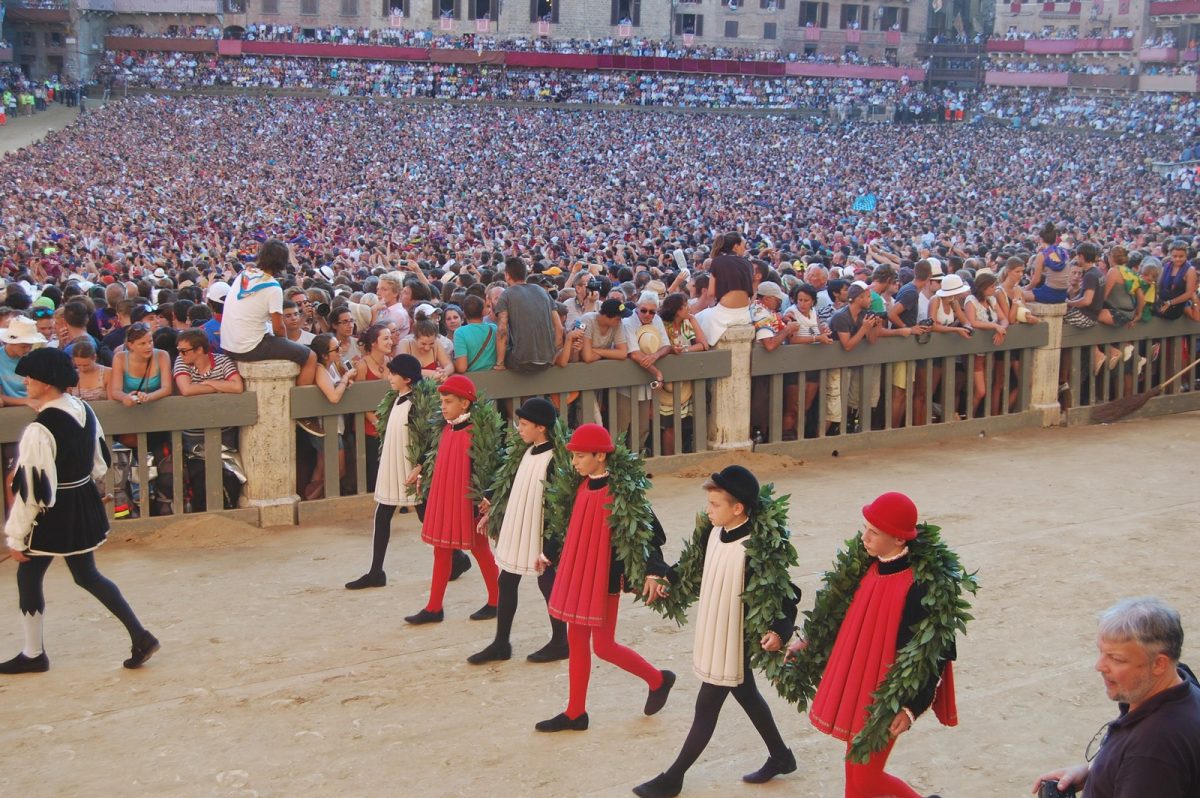
Video
In 2018, ‘SienaWebTV’ made the following 5-part report on the costumes of the Corteo Storico:
At the end of 2018 there was an exhibition with the costumes from 1981. We would like to share the report from Canale3:
No Palio was ridden on July 2, 2020 due to Covid-19. However, Canale3 did broadcast a special about the Corteo Storico. After 1h09min they go live to the Piazza del Campo where the Musici di Palazzo do a ‘flashmob’…
No Palio in August 2020 either. Again Canale 3 made a broadcast around the Corteo Storico.
During the 2023 August Palio SienaTV made a report about the costumes.
Foto
Foto’s of the Corteo Storico in 2008 and 2013 and 2024.
Last update : 17 august 2023
